

The 5 Best Drones for Sailing and Boating in 2023
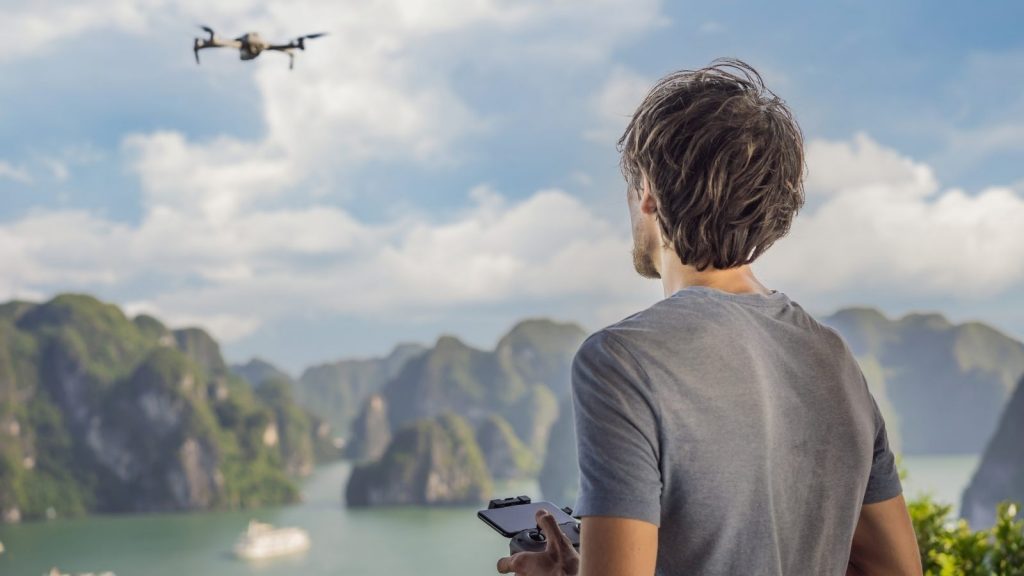
Some of the links in this post are affiliate links . This means if you click on the link and purchase the item, we will receive an affiliate commission at no extra cost to you. All opinions remain our own.
If you’re looking for the best drones for sailing , you’ve come to the right place. Whether you’re exploring hidden beaches, secluded bays, top marinas , awesome anchorage places, or want to film your boat while sailing, you’ll need to carry a drone on board to capture the greatest moments of your sailing experience.
Sailing enthusiasts usually want to capture every moment they can while they are sailing and drones make the process easier than ever before. After a long sailing day, drone footage is the best way to relive your awesome experiences on the water.
What is the best drone for boating? That’s a great question! There are many drones on the market and it’s hard to decide. Let’s take a look at the best drones for sailing, boating, and any marine use.
The 5 Best Drones for Sailing
Drones are quickly becoming extremely popular, and if you take boating as a hobby or passion, you may be wondering what drones are the best for boating.
Now, almost anyone can buy a drone, but not everyone knows what to look for. I’ll be giving you some tips and pointers on what to look for when buying a drone and which drones are the best drones for sailing.
All drone models are extremely stable, powerful, have a great camera, and have a decent flight time.
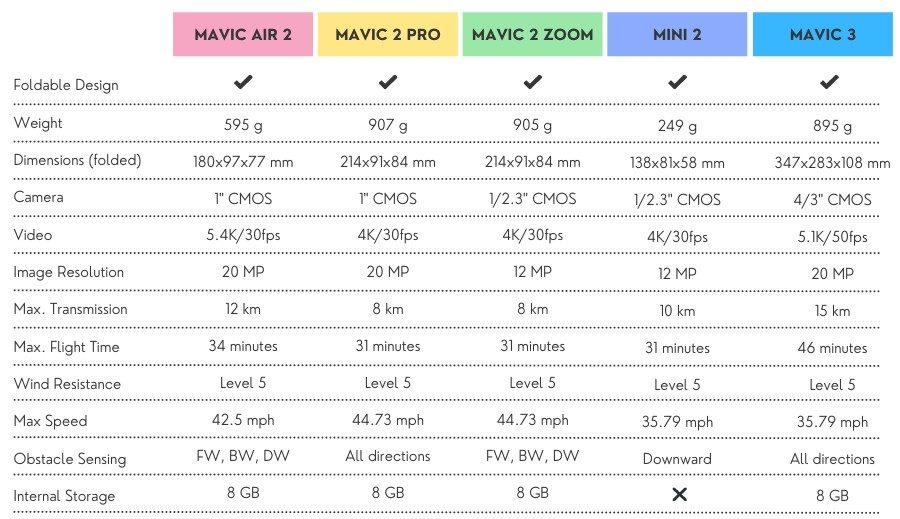
Let’s discover the best drones for sailing and boating activities, and which ones are best for various situations.
Here are 5 of the best drones for boating and marine use.
DJI Mavic 2 PRO - Best Overall Drone for Sailing & Boating
DJI Mavic 2 PRO is exactly what drone lovers have been waiting for: performance and picture quality in a compact package.
The Mavic 2 PRO is one of the most recent DJI drones, and it is packed with state-of-art technology, a fantastic camera, and, most significantly, it includes tracking and follow-me features. This is without a doubt the best drone for boaters.
The Mavic 2 camera drone is equipped with a Hasselblad L1D-20c camera with a 20MP 1″ CMOS Sensor, which allows you to shoot breathtaking aerial photos in astonishing color detail (resulting in outstanding quality and detail captured at a resolution of 20 megapixels). The camera includes a built-in stabilization technology in order to improve the quality of photos and videos. Thanks to the bigger sensor and 28mm equivalent prime lens, the ISO can be increased to 12800, which is significantly higher than other drones.
It’s an extremely powerful drone and it provides a maximum speed of 44 mph and a flying duration of up to 31 minutes. Also, it has a max. transmission distance of 10 km.
Did you know that the DJI Mavic 2 PRO has a wind resistance level of 5? That makes the drone of the best drones for sailing and boating activities. This is one of the best drones for windy conditions, being an ideal choice for boating and sailing.
ActiveTrack 2.0, HDR Photos, Omnidirectional Obstacle Sensing, and a low-noise construction are among the smart features included in the drone. The drone also offers features such as QuickShots (Rocket, Dronie, Circle, Helix, Asteroid, Boomerang, DollyZoom), POI, Waypoint, TapFly.
The drone can be purchased with the standard controller or smart controller (it is a bit more expensive but worth it). The smart remote controller can operate for up to 135 minutes on a single charge (on a full charge). Using the smart controller, you don’t have to worry if your phone has enough battery. The controller screen is also very bright and easy to see even in sunlight.
The drone has an internal storage of 8GB but accepts SD cards, allowing you to add up to 128GB additional storage.
If you’re a sailor and looking to take your hobby to the next level by capturing aerial footage, look no further. This is, in our opinion, the best drone you can get for sailing.
- Foldable design
- Easy to fly
- Amazing Image Sensor (20 MP)
- Great Quality of Images
- Great Color & Dynamic Range
- More Obstacle Avoidance Sensors
- Shoots slow-motion video up to 1080/120p and 4K/30p
- Better in Low Light
- Wind Resistance: Level 5
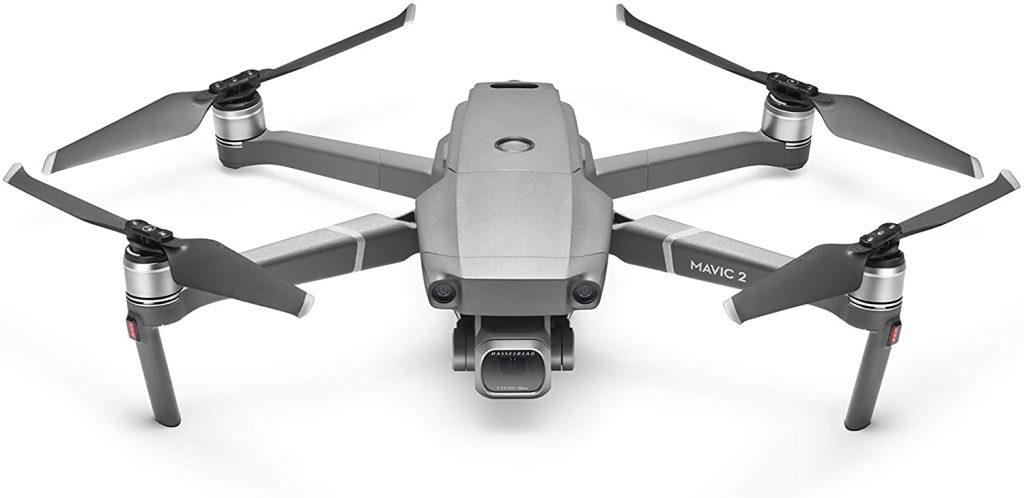
DJI Mavic Air 2 - Best Drone for Windy Conditions
By far, the best drone when it comes to boating is the DJI Mavic Air 2. This drone has several benefits that make it the ideal choice for someone searching for their first drone or just updating their current model. Let’s look at why this is one of the best drones for boating.
The DJI Mavic Air 2 is a small, portable drone specially designed for boating. It has a 4K Camera that can capture high-resolution photos and a great video capture resolution during the day or at night with built-in LEDs. It includes a tracking and follow-me feature.
The Mavic Air 2 is a significant upgrade over its predecessor with a better range, a considerably longer battery life, all for the same starting price as its predecessor. It offers a good value for novice pilots and seasoned sailors alike. Anybody who has ever flown a drone knows that it can be tricky to learn. You have to master no-fly zones and keep an eye on your battery life.
The 1/2-inch CMOS sensor on the drone produces 48MP images, while the 3-axis gimbal enables 4K/60fps video. A high-performance Quad Bayer image sensor is the key to producing amazing HDR footage.
The Mavic Air 2 is designed for first-time pilots with its simple flight controls but offers enough features for more experienced users to enjoy using it every day. The Air 2 is praised for its portability, controllability, video quality, and overall image quality.
Moreover, due to its wind resistance (level of 5), Mavic Air 2 can fly in windy conditions, making it an excellent drone for boating and sailing activities. Weighing only 20.01 oz (570 g) and having a level 5 wind resistance, DJI Maic Air 2 is probably the best drone for windy conditions.
The Mavic Air 2 has simple shooting controls that make aerial photography easier than ever. While flying freely, Spotlight 2.0 keeps the camera focused on a target. Subjects are kept in focus with ActiveTrack 3.0. POI 3.0 follows moving things such as people and cars. OcuSync 2.0 has a video transmission distance of up to 6.2 miles / 10 kilometers and can give a livestream in 1080p FHD definition directly from the drone’s camera. The drone is lighter than the PRO version, weighing only 1.25 pounds (0.57 kg).
The point perspective camera offers smooth motion for exploring the sea and you while sailing, and the gimbal technology uses a 3-axis stabilization system to keep your photos/videos steady.
With an excellent battery life of up to 34 minutes (~9 km) and a maximum flying speed of 42.3 mph in Sport mode, you can stay in the air long enough to obtain the ideal images and footages.
The drone combo pack also contains a four-way charger connector, which can take four batteries and charge each one. You don’t have to change every battery because it does the job for you. It’s useful if you’re charging all of your batteries overnight.
We recommend you choose the Fly More bundle because it includes all of the things you’ll need to keep you flying in the field for a longer period of time.
Moreover, you don’t need a cell service in order to operate DJI Mavic Air 2. This is an ideal drone for boating and sailing.
iOS 10.0 (or above) or Android 6.0 or higher is required for the DJI Fly app.
- Good Value for Money
- Very Light (20.01 oz / 1.25 lbs/570 grams)
- Up to 34 minutes Battery Life
- 48 MP Camera
- Shoots slow-motion video up to 1080/240p and 4K/60p & hyper-lapses up to 8K
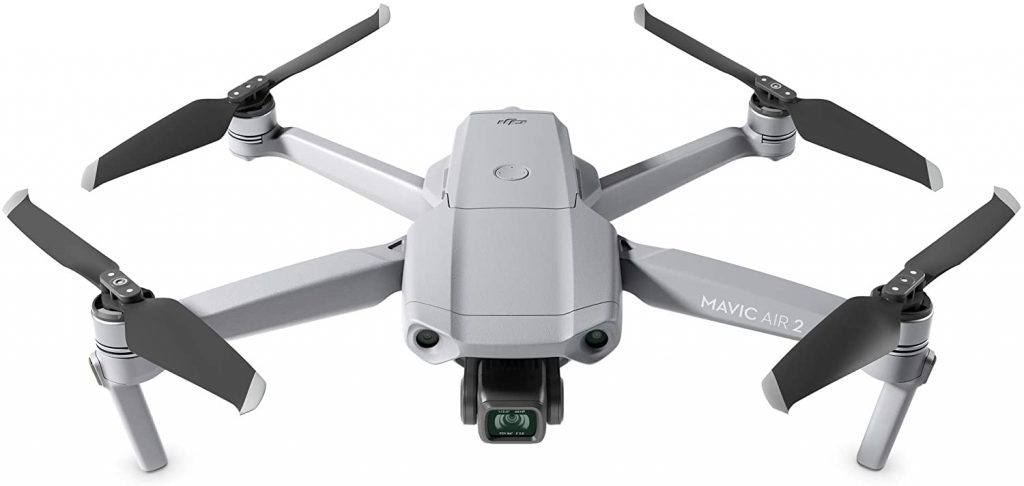
DJI Mavic 2 Zoom - Best Fishing Drone
For boaters who want to take their storytelling to the next level The Mavic 2 Zoom features a camera drone which is all about dynamic views, thanks to a 1/2.3-inch 12MP sensor with up to 4x zoom, including a 2x optical zoom (24–48 mm, compared to DJI MAvic 2 PRO which features an effective focal length of 28 mm).
If you want the greatest quality images and have a large budget, the Pro is the way to go; but, if you don’t have a large budget, DJI Mavic 2 Zoom is still quite excellent.
It features a flying time of up to 31 minutes, a top speed of 44 mph, and a 3-axis gimbal for stable photos. Due to its intelligent flight battery, the battery status is monitored in real-time. It also provides a level 5 wind resistance, making it an excellent drone for sailing.
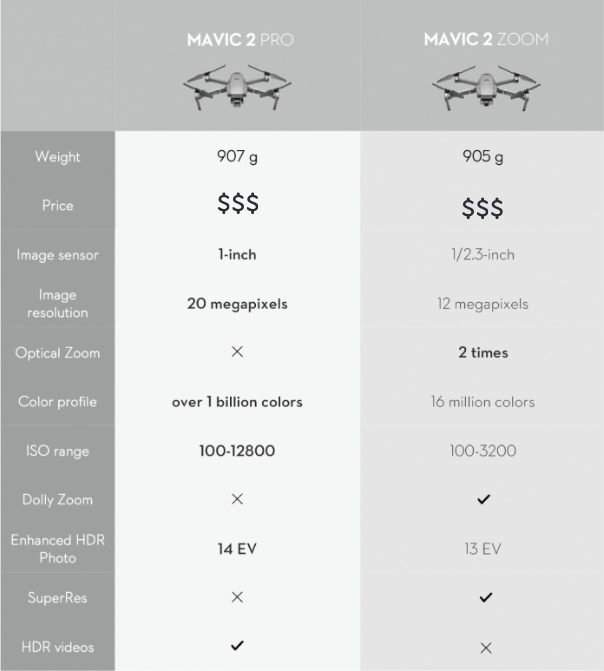
Mavic 2 Pro VS Mavic 2 Zoom : The Mavic 2 Zoom is the only drone that supports the Super Resolution function. When shooting in 24 mm equivalent 5, the camera will take and patch nine shots with its telephoto lens, resulting in a 48-megapixel super-resolution image. Compared to the Mavic 2 ZOOM version, DJI Mavic 2 PRO offers HDR and 10-bit DLog-M, while the ZOOM version does not offer these features. Also, the resolution of 4000×3000 pixels is lower in the Zoom version, compared to the Pro version: 5472×3648 pixels. Both drones provide ActiveTrack (Follow Me feature).
Are you trying to find the best fishing drones? As you know, Drone fishing serves two purposes: surveying possible fishing spots (essentially surveillance to discover the best spot) and dropping the bait.
If you enjoy both flying drones and fishing, Mavic 2 Zoom is one of the best fishing drones because it comes with some of the best features: good wind resistance, a 9km transmission range, 4K camera, excellent obstacle avoidance sensors, Return to Home and Follow Me modes. Moreover, Mavic 2 Zoom is a little fishing drone that you can simply transport, being able to use the zoom to identify the ideal fishing areas.
The Mavic 2 Zoom drone features an internal storage capacity of 8GB and SD card support up to 128 GB.
ActiveTrack 2, QuickShots (Rocket, Dronie, Circle, Helix, Asteroid, Boomerang, DollyZoom), POI, Waypoint, and TapFly are among the outstanding autonomous modes available on the Mavic 2 Zoom drone.
If you opt for the smart controller bundle, you should know that the main feature of the controller screen is the 5.5 inch ultra-bright display which means that in bright sunlight, this screen is much more usable than any mobile phone. This is one of the great advantages for any boater.
As for the internet connection, this is only necessary when you set it up for the first time, but you don’t need it after that.
Furthermore, they provide you a full-coverate and hassle-free. You can replace the drone for collision and water damage.
- Excellent Zoom Range (24-48 mm)
- Continuous Auto-Focus
- 4K with Zoom
- Obstacle Avoidance on All Sides
- Easy to Use & Foldable design
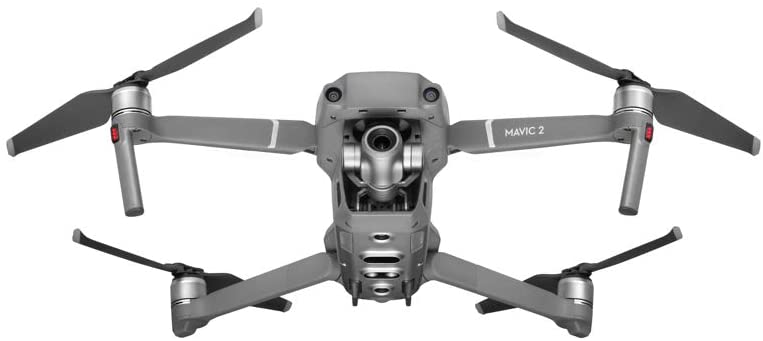
DJI Mavic 3 - Longest Flight Times Drone & Best Performing Drone
The Mavic 3 is now a game-changer for water sports. Have you ever gone surfing and wanted to record your session on the waves? Or maybe you’ve used drones to document your sailing trips before. But now, there are other drones that do a much better job at recording your water-based activities.
The drone has a 4/3 CMOS Hasselblad camera with a 12.8-stop dynamic range that preserves more details in highlights and shadows, elevating your work to a professional level.
Have you ever asked yourself which drone has the longest flight time? If yes, then you should know that DJI Mavic 3 has the longest flight time. With a spectacular flying length of 46 minutes (the drone with the best flight time ), the Mavic 3 drone allows you to take as many photos as you desire while just using one battery. The drone has a maximum transmission range of 15 kilometers and a live feed at 1080p/60fps.
Its camera has sophisticated Omnidirectional Obstacle Sensing. This allows you to fly confidently and safely no matter where you are. Live feeds are also smooth and steady using the O3 Plus Transmission technology. If you’ve ever wondered how far a drone can fly (from the controller), DJI Mavic 3 includes a transmission technology that allows for a 15-kilometer transmission range.
It also offers a Smart Return to Home function. The Mavic 3 camera drone can return to its home point through an optimal, quick, and safe route thanks to a new Advanced RTH technology. Whether it’s due to a low battery or the pilot, returning the drone to you is now easier than ever.
Even if it is more expensive than the other drone models in the article, it certainly offers excellent features, setting a higher standard for aerial photography.
In comparison to the normal Mavic 3 bundle, the DJI Mavic 3 Fly More Combo comes with 2 x extra Intelligent Flight Batteries, 1 x Battery Charging Hub, one Convertible Carrying Bag, and one ND Filters Set (ND4/8/16/32).
- Extended Flight Time, up to 46 Minutes
- Its camera can record up to 5.1K/50fps or 4K/120fps videos
- Upgraded Transmission System (15 km range & 1080p/60fps live feed)
- Faster Focusing due to Vision Detection Auto Focus (VDAF) Technology
- Foldable design & Easy to Fly
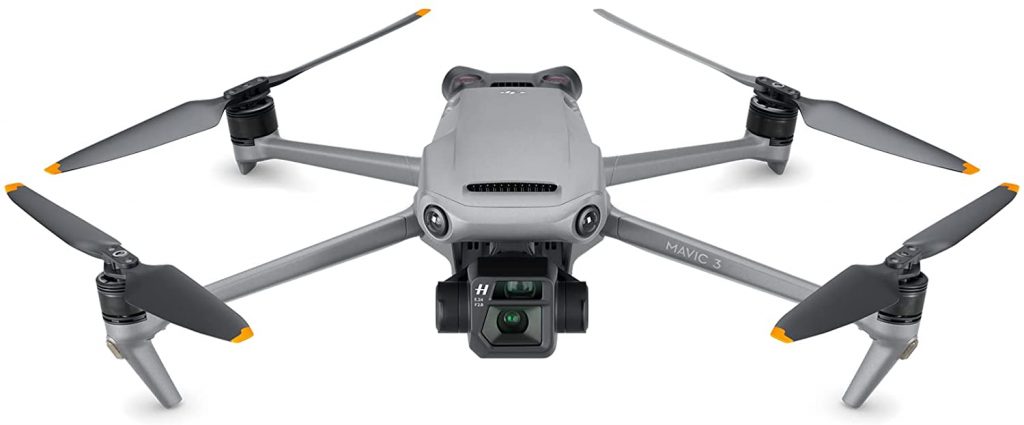
Phantom 4 PRO V2.0 - Best Drone to Fly From Boats
The new DJI Phantom 4 Pro V2.0 is currently one of the best drones for marine use, with awesome features such as TapFly, ActiveTrack, Gesture Mode, and Draw Mode. Due to its flexible design, it is extremely easy to transport.
Did you know that the DJI Phantom 4 Pro has a maximum speed of 45 mph (Sport mode) and a maximum flight distance of 11 miles? That makes the drone of the best drones to take with you on your sailing trips.
The drone camera has a 3-axis motorized gimbal as well as a 1-inch 20MP CMOS sensor with a mechanical shutter that minimizes rolling shutter distortion, making it one of the best sailing drones. It offers a video capture resolution of 4K UHD 2160p.
It boasts an 8 km transmission range, a maximum flying speed of 72 kph, 1080p livestreaming, and automated frequency switching thanks to OcuSync 2.0.
Compared to Mavic 2 & Mavic 2 PRO, Phantom 4 Pro V2.0 is larger and heavier but it’s definitely the simplest model to fly from boats due to its large legs (you can easily hand-launch and hand-catch the drone). That’s why Phantom 4 Pro V2.0 is the best drone for boating.
The wind speed resistance of this drone is 22.37 mph (36 km/h). That means 36.08 feet (10 m) per second.
The drone is compatible with the DJI GO 4 App, which requires iOS 10.0.2 or above, as well as Android 5.0 or higher.
- The simplest model to fly from boats due to its large legs
- Easy to travel with due to its small size
- 30 minutes flight time
- Incredible 20MP Camera
- Tap-to Fly and Tap-to Follow Modes
- Powerful Flight Performance (45mph max. speed)
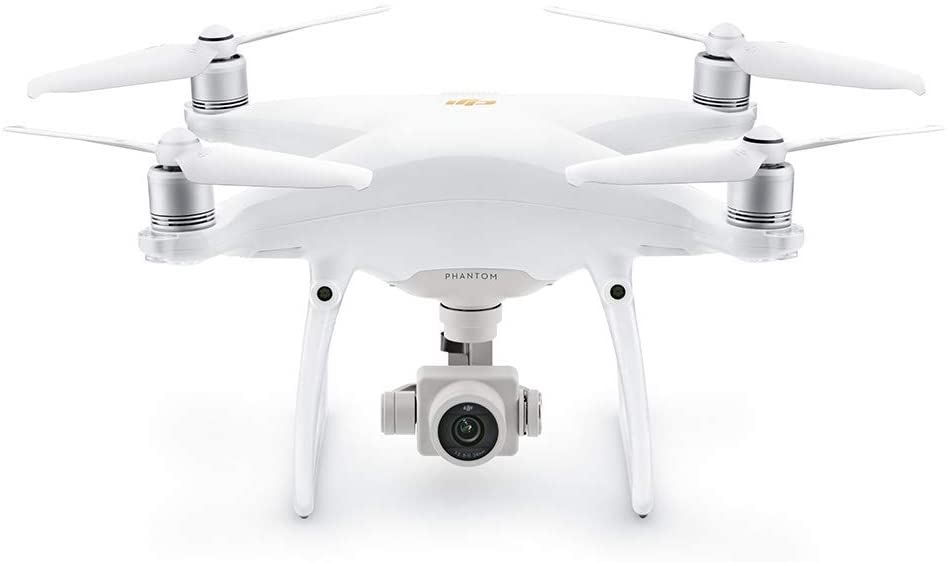
- Best Budget Drone for Sailing
For sailors who like to travel, a drone is an essential tool. If you don’t want to spend thousands of dollars on high-end photography equipment, we recommend you to take a look on the best budget drone for boating.
DJI Mini 2 Fly More
This incredibly ultralight, compact and foldable drone weighs only 249 g, being the best drone for lower budgets. It is the perfect drone for your sailing or boating activity as it can withstand the wind of level 5, the filming being stable even when you are flying along the coastline.
Mini 2 provides amazing image quality thanks to its 12MP camera, 4K/30fps video and a 3-axis motorized gimbal. It has an OcuSync 2.0 video transmission and allows up to 10 km transmission for HD video transmission (720p).
DJI Mini 2 drone has a powerful performance, with a maximum flight time of 31 minutes, enough time to capture the best photos and videos. It offers 4x digital zoom and with just a few touches (Quickshots feature), you will get the professional videos you deserve. Some of the best features are Follow Me and Auto Return, both of which perform perfectly.
In addition, the drone can fly the following pre-planned flights: Helix, Dronie, Circle, and Rocket.
If the drone is close to your phone, the DJI Fly app will detect and connect to it, synchronizing chosen photographs and videos at a rate of 20 MB/s.
In terms of storage, the drone has no internal storage, thus you’ll need to purchase a MicroSD card. It has a storage capacity of up to 256GB (MicroSD card).
- Excellent Features, Fantastic Photos, and Videos
- Wind resistance: Level 5
- Ultralight, Powerful and Easy to use
- 31 minutes of Flying Duration
- 4x Digital Zoom & 4k Ultra-Clear Video
- HD Video Transmission
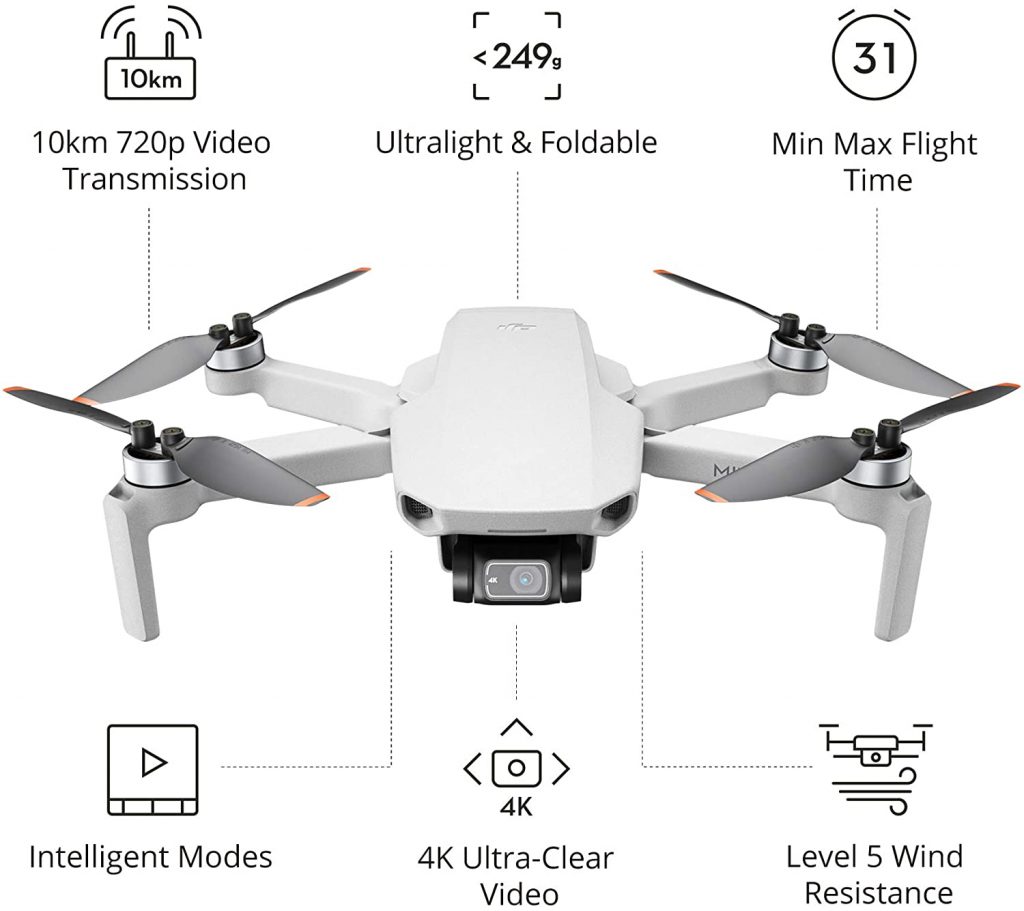
What Should I Look For When Buying The Best Drone for Boating?
Buying a drone can be complicated, especially if you’re new to the scene of drones. There are lots of features that drones have that make it confusing to know how to pick one.
Choosing the best drone for sailing and boating can be a tough choice. Before you purchase one, though, you need to do your homework. What are the core features of a drone and which ones do you need?
Flying Time
We all know that a great flying time (and range too) is extremely important for your drone to make your life easier.
The best drone for sailing and boating activities should have a minimum flight duration of 30 minutes. Since the flight time of a drone depends on the battery and the technology of consumption optimization, cheap drones can only fly 5 minutes, unlike high-performance drones that have a flight time of about 30 minutes.
The price of a drone is directly proportional to the maximum flight time. Therefore, we advise you to pay attention to this aspect in order to avoid landing the drone on the ground in a few minutes, in order to change its batteries.
While most DJI drone models have a flight time of approximately 30 minutes, the DJI Mavic 3 is the drone with the longest flight time, up to 46 minutes.
If you run out of a drone battery, after replacing a new battery, we advise you to let the drone rest for 5-10 minutes. This way, you will avoid overheating the engines.
Transmission Range
The farther your drone can fly from the transmitter, the more relaxed you will be.
If a cheap drone can have a range of only 30 meters, the models in this article can travel between 9 km and 15 km (depending on the model) without losing contact with the transmitter.
If you are wondering why this aspect is so important, you should know that when you have a better transmission range, the drone can reach more distant places, obtaining the most beautiful photos and videos.
The DJI Built-in OcuSync 2.0 function allows the drones to automatically switch between two frequencies, extending the drone’s maximum transmission distance up to 10 kilometers for further versatility. This transmission system is available for DJI Mavic 3, DJI Mavic 2 PRO, DJI Mavic 2 Zoom, DJI Mavic Air 2, and Phantom 4 Pro V2.0. The DJI Mavic 3 drone provides an O3 Plus Transmission system with offers you a 15-kilometer transmission range.
The speed of the drone is important when sailing and you want to use the Follow Me feature.
Any boater wants the drone to be able to keep up with the boat. The faster the drone can fly, the more special videos you can get.
Furthermore, you want to prevent losing the drone transmission, so the speed is critical.
The average top speed of drones is between 40 and 60 mph (63-96 km / h), but some can fly up to 70 mph, while cheaper drones can reach a maximum speed of 20 mph.
Camera Quality
Since the purpose of a drone is to take successful photos and awesome videos, the camera’s quality is one of the things to consider when buying a drone.
The camera is among the most expensive parts to make and this influences the price. Usually, the more expensive a drone is, the more it will be related to the quality of the camera.
Factors that influence photo quality are shutter speed, frame rate, aperture, and image stabilization. All of these factors will affect the quality of your photos. More megapixels also allow for greater details in the images, so if excellent images are important to you, consider this as well.
Wind Resistance
The drone’s wind resistance level is measured between 0 and 12, and describes the highest wind speed that the drone can withstand in flight.
Therefore, the better the drone, the better the stability in windy weather conditions. A level 5 wind resistance drone will be able to be maneuvered much easier in windy conditions compared to a level 3 drone.
Thus, the level of wind resistance of drones corresponds to a scale, classifying wind speed into 12 categories. Known as the Beaufort scale , the level represents an empirical measure that links wind speed to weather conditions.
Level 5 is a good level of wind resistance for drones, giving you the possibility for your drone to fly safely up to wind speeds of 10.7 m/s (24mph). All drones in this article have level 5 of wind resistance. This means that they are suitable for windy conditions.
Drones aren’t easy to fly and it takes time to learn how even the most basic of drones work. The best drone is one that’s easy to fly, offers good value for money and has great features. That’s why there are certain features that are non-negotiable.
There are tons of different types of drones and each has varying types of features. When buying a new drone it is important to know what features you should be looking for to get the most out of your purchase.
- Return to Home . This is a must-have feature. This is a highly helpful safety feature that helps in returning your drone to a safe, accessible landing site. Most DJI drones allows you to command the drone to return to the Home Point (RTH) when needed, when drone’s battery level depletes to a specified level (Low-Battery RTH) or when it happens to lose signal (Failsafe RTH).
- Follow Me . Many drone models include a Follow Me feature that allows the drone to follow you or another item and record a continuous video of the tracked object without you having to operate the drone manually the entire time.
- 3-Axis Gimbal . This mechanism that keeps your camera stable while allowing it to pivot with the machine’s motions is one ofo the things to consider when buying a drone. The various motions that a drone may do are characterized by the 3 axes (pitch, roll, and yaw). A three-axis gimbal can assist your drone’s camera in remaining stable even when in flight.
Why Would You Want a Drone for Sailing?
There are several excellent reasons to carry a drone boating with you. With the evolution of technology, drones have become more compact, high-performance, accessible, and easy to use.
Thus, more and more sailors and boaters have started to use sailing drones as a way to take awesome photos and professional videos. This is also because most drones are equipped with smart features such as “Return to Home” or “Follow Me”.
Here are the reasons to buy a drone for sailing.
Awesome Photos when Sailing
If you are a sailor, it is pretty obvious how a drone can fit into your hobby. In fact, one of the best uses for a drone in relation to sailing is the aerial photography aspect of it (or motion pictures). If you want to get better shots of you foiling downwind, kitesurfing, or whatever type of sailing you enjoy most, an aerial view can help.
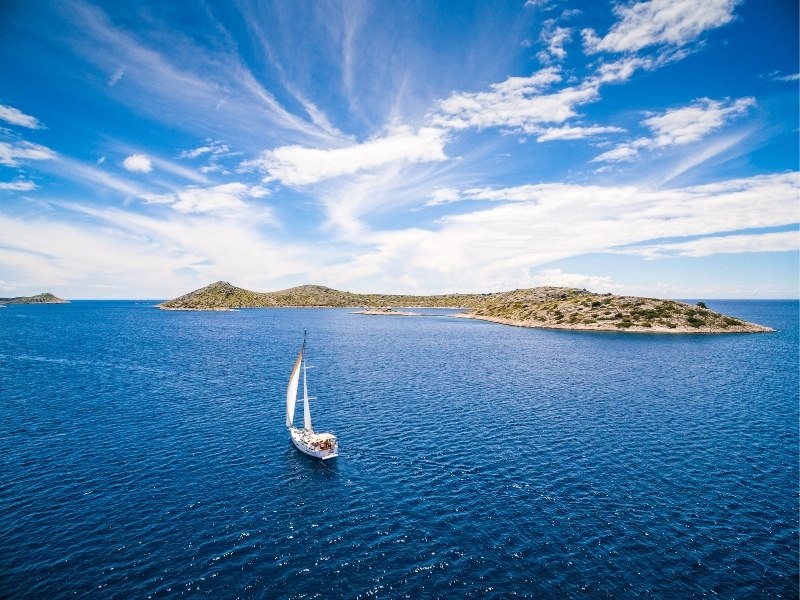
Professional Videos
If you’ve spent any amount of time on the water, you already know how amazing the scenery is. Whether you’re cruising through an estuary or out on the ocean, the blue hues and vastness of the natural world is breathtaking. But what if you could capture that beauty in a whole new way? Thanks to these great drones for sailing, more than likely you can!
High-performance filming, these higher-end drones record in higher FPS, giving you the opportunity to get awesome videos.
Whether you want to get aerial footage with your boat while sailing or simply make a video with the people on the boat while having fun, these drones are the best choice.
Great Memories
Sailing is a thrilling experience. When you’re out on the water, you feel free and your adrenaline rush is off the charts.
All of us love sailing as it is an excellent way to get out to sea and feel the wind. There is nothing better than the freedom it gives you being on top of a sailboat. We can count on that with this sport, you have to have a true passion for it. It will be worth your while in the end though.
You should try getting yourself a drone if you want to get the best possible results. A drone is a perfect way to create great sailing memories that will last forever. Besides the fact that drones can capture the whole boat in the image, the aerial images and captivating videos will excite you every time you watch them.
Sailing provides some of the best memories in your life.
Racing and Regattas
So you’re about to enter your first sailing regatta or perhaps you’ve already participated in a few. However, you’re wondering if it would benefit you to have a drone at the event.
If you have ever tried to film yourself sailing at a regatta, then you’re probably aware that it can be quite hard. You need to find a way to mount your camera on the boat, but there’s nothing accessible.
No wonder many sailors use this drone in regattas, as they have higher and faster speeds. Many boaters also enjoy drone racing.
How to Fly a Drone from a Boat
Many people do not know that you can fly a drone from a boat. Drone sailing is one of the coolest ways to relax and have fun with friends.
How to fly and rig a drone from a boat is probably the biggest curiosity of any boater. Although there are several ways you can set up your drone for boating and sailing, here is the safest process.
1. Check the weather conditions
It is advisable not to fly in rain or wind conditions above the wind resistance level of the drone. It is best to use one of the best wind apps to check the wind predictions. It is recommended to fly the drone only if the wind speed is below 15 knots (less than 20 mph) and the chance of precipitation is below 10%.
2. Make a Pre-Flight Checklist
You should always have a pre-flight checklist in order to be checked before you fly. This helps you make sure everything is fine with the drone and you can fly safely. Here’s what your pre-flight checklist should contain:
- Check the physical condition of the drone, more precisely look for cracks in the propeller;
- Check the regulations for the area where you want to fly. You don’t want to find yourself in a no-fly zone;
- Check the condition of the batteries, as they are recommended to be 100% charged;
- Check that the controller and the drone are properly connected;
- Calibrate the compass before every flight;
- Check your camera settings and make sure there is a memory card in the drone if you intend to shoot images or movies;
- While flying, keep an eye on the drone’s settings.
3. Taking off and Landing your Drone on a Boat
The most important aspects of a drone flight are takeoff and landing.
Before taking off, make sure you are in an open area to fly the drone without worries.
When you are ready to take off your drone, you can follow the safety list:
- Before you start your drone, come to a complete stop on the boat. This permits the inertial measurement unit’s (IMU) electrical sensors to settle;
- Turn off the visual positioning system (VPS) over water because the movement of water can cause the drone to act improperly: sonic and optical sensors may have difficulty locking in on something fluid;
- Because the boat will have moved from the take-off position after a few minutes of flight, you must set the home point to Dynamic mode so that the remote control is always the return-to-home point.
- Start the drone;
- Check the battery level again and confirm the drone settings;
- If you fly your drone from your boat, the best method is you launch by hand because most boats are made of a lot of metal, which causes compass errors; Lifting the drone off the metal surfaces can eliminate the possible compass errors.
- If you fly your drone from land, slowly push the throttle up (the left stick) to begin the propellers spinning. Then pause. You can repeat this many times until you’re satisfied with the throttle’s sensitivity.
- Increase acceleration to raise the drone to eye-level altitude for about 10 seconds;
- Listed for abnormal sounds. Thus, in case of noticing a problem, you will be able to land the drone to fix the problem;
- If all goes well, the drone’s altitude begins to rise.
When you are ready to land the drone, you can use smart features like Return to Home and the drone does everything for a safe landing. Once landed, make sure the propellers have stopped moving.
If you want to hand-catch the drone you should know that catching a drone by hand is extremely risky. That’s why it’s recommended to wear a tight-fitting leather garden glove while preparing to hand-catch the drone. Gloves will not completely protect your hand from the propellers, but they will help.
Be aware of the direction and speed of the water current and the wind as the landing process will depend on the drift of your boat.
When landing in the hands of the catcher or on the boat, the drone’s engines will stop for a few seconds harder than on land, because the boat is in constant motion and the drone will not “recognize” that it is on land.
After the engines have stopped, turn off the drone (turn off the battery power) before moving the drone or removing the propellers.
Drone boating is a fun and exciting new sport that is gaining momentum around the world. As a drone boater, you understand how fun and exciting it is to be able to take your drone flying.
So, what is the best drone for boating? Knowing which one is best for your own specific purpose will enable you to make an informed decision.
A drone for sailing is a tool that every sailor should have. Not only drones make great pictures, but they can help you if you get in trouble at sea.
We hope we gave you a solid starting point for choosing the best drone for sailing.
F.A.Q. about the Best Drones for Sailing and Boating
Which drone has the longest flight time.
DJI Mavic 3 is one of the best drones with the longest flight time: 46 minutes.
How far can I fly a drone?
A high-end consumer drone, such as the DJI Mavic 3, has a range of up to 9.3 miles (15km). Also, Mavic 2 PRO, Mavic Air 2, Mavic 2 Zoom drones have a transmission range of 10 km.
What is the longest lasting drone battery?
The DJI Mavic 3 has the longest battery life of any drone on the market. The Mavic 3 is rated for up to 46 minutes of flying duration on a full battery charge, giving you extra time to capture the best shots, videos, or simply fly around to explore the surroundings.
Can I land a drone on a boat?
You can land a drone on your boat. As a landing pad, you can use a wet towel if you intend to land your drone on a boat deck. It will perfectly stick to the deck and legs of the drone.
Can I fly my drone from a boat?
You can fly your drone from a boat. DJI drones are the best models to fly from boats even if you have to launch and catch the drone manually (hand-launch and hand-catch).
What is the best drone for windy conditions?
DJI Maic Air 2 is probably the best drone for windy conditions because it is very light (20.01 oz / 1.25 lbs / 570 g) and has a level 5 wind resistance.
Leave a Comment Cancel Reply
Your email address will not be published. Required fields are marked *

The Absolute Best Drones For Sailing

Last Updated by
Daniel Wade
June 15, 2022
Sailing is one of the most enjoyable ways to spend your free time. Exploring the open sea is a great way to relax and unwind. Whether you are fishing or meandering along the coastline, you will be taking in the beauty that the world has to offer.
What better way to capture these moments than with the use of drone camera technology? The ability to take such unique and interesting photographs and video from the sky is an almost entirely new phenomenon. The use of drones has only increased in recent years. Previously it was just the super-wealthy or the military that had access to such incredible technology. Now, you can buy these advanced drones for yourself for just a few hundred dollars.
This article will not only cover why a drone is so great for taking sailing but what you should be looking for in your drone. Not all drones were created equal, some simply can’t stand up to the winds of the high seas. Some are simply not reliable enough and some are far too expensive.
This article will give you the knowledge and guidance to pick the best drone for you, even making some solid recommendations that would suit almost anyone’s needs. You don’t need to be an expert in drones when you have an article like this at your disposal.
Table of contents
Why would you want a drone for sailing?
There are plenty of great reasons for bringing a drone sailing with you. Whether you are looking to spend a lot on your drone or are looking for a more budget option, they all offer similar things. Here are the most common reasons someone might bring a drone with them:
Photography
Drones are far better at taking still images than high-quality videos, this is especially the case with the lower end drones. It doesn’t take long before even a complete novice will be able to take some pretty great photos. Being at sea offers plenty of great photo opportunities, it could be as simple as the sunset or as special as whales or dolphins breaching the surface of the water. The coastline provides so many opportunities that you simply couldn’t get any other way. Whether you do photography professionally or for fun, this is an opportunity you won’t want to miss.
Drones are very good at taking videos. The higher-end ones will be able to record in much higher FPS, but even the lower end ones will provide the chance to take some pretty cool videos. Whether you are recording the scenery or the boat itself, you will be able to take some unique and interesting videos. If you are planning to video you and your friends/family sailing you will be able to get some unique shots this way. The only alternative to using a drone for these shots would be hiring a helicopter. That may be outside most people’s budget.
Drones are not just for photography, they can also be great fun for racing. Some drones can move very quickly. Drone racing is an incredibly intense, and incredibly fun, sport that anyone can take part in. Drone racing is an actual sport with proper leagues you can enter, this may be a longshot for a complete novice but it could be an exciting goal to aim for.
Making memories
Whether you are photographing yourself or videoing yourself, a drone is a perfect way to record these memories for years to come. With a drone, you can get amazing family photos that don’t require someone to be excluded whilst taking the picture.
What are you looking for in your drone?
There are so many drones on the market, yet some are better suited to life at sea than others. There are some features that you should look for in any drone you plan to buy. Different drones will excel in different areas, but they should all be somewhat decent in the following areas, otherwise, you risk running into avoidable problems.
Speed is something that may not matter to everyone. You might not be planning on racing your drone, but you will still want a decent speed output. Speed is important for two main reasons. First, higher speed drones can create more interesting and exciting videos. Secondly, and most importantly, if your drone isn’t able to keep up with your boat while you are sailing you are in trouble . You may end up losing your drone completely if your battery starts to run low and you cant get it back to the boat in time. Additionally, if you start to pull too far ahead of your drone you may lose signal with it and then you have essentially flushed hundreds of dollars down the drain.
Battery life
The longer your battery life, the longer you can use your drone for; of course. If you are at sea finding your drone ran out of juice after just 5 minutes will be very disappointing for you. Depending on the model of your drone you could have anywhere between 15-60 minutes of power. Knowing your battery life and bringing your drone back well before it dies is important to avoid losing it. If your drone dies out at sea you arent likely going to ever see it again.
Stability is always important when considering which drone you would like to buy. This is even more important at sea. The high winds are going to be unforgiving for small drones with poor stability. If your drone isn’t sturdy enough you may find it getting blown away into the distance or knocked completely out of the sky. If it isn’t strong enough to withstand high winds, it isn’t strong enough to survive out at sea. Furthermore, some drones are fitted with self-stabilizing cameras in anticipation of windy conditions. If you don’t have one of these drones your videos and pictures are going to be very blurry.
Camera quality
Not all drones were created equal. Not all cameras were created equal. It is then safe to assume that not all drones cameras are created equal. You are going to get what you pay for here. The more expensive a drone is will typically be tied to the quality of the camera. The camera is one of the most expensive parts to manufacture and this influences price.
Price matters. It doesn’t just indicate how good a drone will be, it can completely price some drones out of the market for you. Your typical high-quality drone will be between $700-$3,000. Any less and you run the risk it won’t be sturdy enough to survive at sea, any more and you may be overpaying for what you realistically need. Unless you are a professional who needs a drone to earn a living, $3,000 for a drone is about the absolute max you need to be paying.
So without further ado, let's dive in to the 5 best drones for sailing:
The 5 best drones for sailing
Any of these drones would be great if used when sailing. They are all generally pretty stable, with decent battery life and a decent camera. You are, of course, going to get a better drone if you choose to purchase the most expensive on the list (DJI Mavic Pro) than the cheapest (Parrot Mambo). However, any of them would likely suit your needs. Whichever is best for you probably depends mostly on your budget. Here are 5 of the best drones for taking sailing with you.
1. DJI Mavic 2 Pro
This drone is one of the best currently available on the market. It may cost $1800 ($2,499 as a bundle ) but you are certainly getting your money’s worth. This drone is fitted with a 20-megapixel camera with inbuilt stability technology to improve picture and video quality, even in the windiest settings. This is perfect for use when sailing. This drone is incredibly strong and even comes with 8gb inbuilt storage. It is SD card friendly meaning you can fit up to 128gb of further storage onboard your drone. The DJI Mavic 2 Pro has a flight time of 31 minutes and can reach speeds of 44mph in good conditions.
2. DJI Inspire 2
The DJI Inspire 2 is on the more expensive side, but with good reason. This drone is fitted with a 5.2k camera capable of capturing stunning images and videos. It may be on the high end of the price spectrum but you are certainly getting what you pay for. There are two different camera options available for this drone, one is slightly heavier than the other. This is why the flight time can vary between 23-27 minutes. Be sure to know the limits of your drone when choosing which camera you choose. The maximum speed is also tied to the camera. The lighter the camera, the faster the drone will be.
3. Parrot Anafi
The Parrot Anafi is far more affordable than some of the other drones on this list. Whilst it is still a great drone, you are getting be getting fewer features than its pricier counterparts. But, it is far more affordable for most people and is a great first drone. The Parrot Anafi is capable of filming in 4k and has a flight time of 25 minutes. This drone is great for taking pictures, its 21-megapixel camera and stabilizing technology will ensure high-quality images every time.
4. DJI Phantom 4 Pro V2.0
The DJI Phantom 4 Pro (V2.0) is capable of filming 4k videos at 60 frames per second. It is fitted with a 20-megapixel camera and is perfect for the avid photographer. The drone’s sleek white look is very futuristic, it certainly looks like a $1700 drone. Its battery life is around 30 minutes, which is pretty average. It can reach speeds of 45 miles per hour in good conditions and is more than capable of withstanding the strong winds at sea. This drone is pretty good , if you are looking for a reliable, mid-priced, drone this is the one to go for.
5. Yuneec Typhoon H Plus
The Yuneec Typhoon is on the more expensive side. It too comes with a 4k capable camera that can shoot 16 megapixel still images. It too has a flight time of about 25 minutes and it too can go upwards of 40 miles per hour. But then why is it so expensive? Because it is very stable. If you are looking for the best drone for taking sailing this may be the one for you. It is a hexacopter (6 propellors) meaning it is capable of withstanding even the strongest of winds. Even in the worst conditions your videos will be well stabilized. If that’s important to you, the Yunnec Typhoon is second to none.
No matter which one of the above drones piques your interest the most, you will be getting a great quality drone. They may vary in price but they are all reliable drones. Taking a drone sailing with you can be so much fun; if you are on the fence about getting a drone to accompany you next time you go sailing, perhaps start off with the DJI Spark. If you are not new to the world of drones and are looking for the top of the line model, you can’t go wrong with the DJI Mavic Pro.
Hopefully, this article has helped give you an idea of what to look for when you choose your drone for sailing. Even if you don’t choose one from the above list, if you keep the, “What are you looking for in your drone?” section in mind you won’t go wrong.
Related Articles
I've personally had thousands of questions about sailing and sailboats over the years. As I learn and experience sailing, and the community, I share the answers that work and make sense to me, here on Life of Sailing.
by this author
Personal Health and Gear
Entertainment
Most Recent

What Does "Sailing By The Lee" Mean?
October 3, 2023

Best Sailing Duffle Bags: Top Picks For Boat Travel
September 27, 2023
Important Legal Info
Lifeofsailing.com is a participant in the Amazon Services LLC Associates Program, an affiliate advertising program designed to provide a means for sites to earn advertising fees by advertising and linking to Amazon. This site also participates in other affiliate programs and is compensated for referring traffic and business to these companies.
Similar Posts

The Best Sailing Schools And Programs: Reviews & Ratings
September 26, 2023

How To Choose The Right Sailing Instructor
August 16, 2023

Best Sailing Racing Electronics
July 5, 2023
Popular Posts

Best Liveaboard Catamaran Sailboats
December 28, 2023

Can a Novice Sail Around the World?
Elizabeth O'Malley

4 Best Electric Outboard Motors

How Long Did It Take The Vikings To Sail To England?

10 Best Sailboat Brands (And Why)
December 20, 2023

7 Best Places To Liveaboard A Sailboat
Get the best sailing content.
Top Rated Posts
Lifeofsailing.com is a participant in the Amazon Services LLC Associates Program, an affiliate advertising program designed to provide a means for sites to earn advertising fees by advertising and linking to Amazon. This site also participates in other affiliate programs and is compensated for referring traffic and business to these companies. (866) 342-SAIL
© 2024 Life of Sailing Email: [email protected] Address: 11816 Inwood Rd #3024 Dallas, TX 75244 Disclaimer Privacy Policy

Best Drones for Boating, Kayaking, and Sailing
By: Author Elizabeth Ciobanu
Posted on July 19, 2023
Are you into water sports, such as boating, kayaking, and sailing, and looking for a drone to document your activities? You’ve come to the right place.

From FPV to cinematics to drones you can use for fishing , there’s a drone out there for you; you just have to find the right one.
So, which are the best boating, kayaking, and sailing drones?
The best boating, kayaking, and sailing drones include the DJI Avata, DJI Mavic 3 Classic, SwellPro Splash Drone 4, PowerVision PowerEgg X, and the DJI Mini 3 Pro. These drones will suit you whether you want to create cinematic footage, shoot underwater, or even use a drone for fishing.
Keep reading to learn more about these drones and some tips on using drones for water sports.

To help, we’ve identified and reviewed the best drone courses for beginners and professionals.
1. DJI Avata

Pro-View Combo (DJI Goggles 2) + Fly More Kit - FPV Drone UAV Quadcopter with 4K Video, 2 More Batteries, and a Charging Hub for Up to 36-Min Flight Time, Super-Wide 155° FOV.
✅ Pros
- Excellent video quality
- Stable transmission
- Long flight time for an FPV drone
❌ Cons
- It could be more expensive than building your own drone
- Due to its weight, it may be subject to weather restrictions, such as strong winds
FPVs for sports or any other activity are quickly gaining popularity because FPV drones have a dynamic and fast-paced view you can’t get from a regular drone.
The shots also need the drone to get very close to the subject, fly in tight spaces, and perform a wide range of maneuvers, as you can see in this video of an FPV drone filming a kayaker and this video of an FPV drone filming surfers.
Most FPV pilots swear by building their drones, with control over the transmission, the goggles to use, speed, and additional third-party hardware such as action cameras.
However, it takes time and money to assemble the best FPV setup. That’s why I recommend the DJI Avata.
Avata is the newest FPV drone released by DJI, known for producing some of the best camera drones.
If you’re a beginner and don’t know much about FPV, Avata is one of the most stable systems you can start with and move up to the more complex systems.
Don’t get me wrong; Avata does have a learning curve, but it’s a perfect RTF FPV drone.
So what features does it have that make it great for boating, kayaking, and sailing?
Avata comes with OcuSync 3+, the latest transmission system in DJI’s consumer drones.
This transmission system ensures a stable video transmission at up to 6.2 miles, making possible shots like the one shared above.
Secondly, Avata has a built-in 1/1.7-inch CMOS camera with an f2.8 aperture and can shoot 48 MP still images and videos of up to 4K at 60 fps.
You can use this camera to create high-quality footage of your sailing, boating, or kayaking escapades.
If you have the budget and find that cameras like the GoPro or the DJI Action camera produce better footage, you can mount them on Avata.
Thirdly, Avata is beginner-friendly. The beginner modes allow the drone to hold its altitude, making it easier for a new pilot to understand the controls.
Once experienced enough, you can switch to Manual Mode and fly Avata like an FPV drone.
Lastly, Avata comes with an 18-minute flight time. With its stable transmission, you can fly further away from the controller without losing the signal or depleting the battery.
If you lose the signal, you can set the drone to automatically return home, which is quite effective.
What’s more, with a speed of up to 60 mph, you can rest assured this drone can keep up with the subject, especially in fast-paced environments.
» MORE: Best Budget Drones for Fishing
2. DJI Mavic 3 Classic

- DJI RC remote controller
- High-quality footage
- Advanced tracking system
- 360-degree obstacle detection
- Long flight time
- The learning curve for more complex maneuvers
- It may be more expensive than other budget-friendly models
The DJI Mavic 3 Classic is perfect for creating high-quality footage of your boating, sailing, or kayaking activities without spending much money.
With a 4/3-nch Hasselblad camera, you can take footage in 5.1k at 50 fps and 4K at 120 fps.
You can also use the Mavic 3 Classic to create tracking footage thanks to the up-to-date ActiveTrack 5.0, 360-degree obstacle avoidance, and excellent camera.
ActiveTrack 5.0 is designed to detect various objects, including boats. It also has an additional feature that allows you to change the direction the drone should follow you from.
This works similarly to Skydio’s feature; the only difference is that you don’t have a beacon as an additional controlling device.
Sometimes drones with obstacle avoidance and tracking features have been known to move around a lot as they track the subject.
DJI has tried to fix this feature by adding a “Nifty” option in the obstacle avoidance settings, which helps minimize this movement, ensuring smoother video.
You can also use the Spotlight feature, where the drone is always focused on the subject, and all you have to do is execute any maneuvers you have in mind.
Another big plus for the Mavic 3 Classic is the 40-minute flight time, which gives you enough time to record all the necessary footage.
When it’s time to land, it’s possible to land it in your hand, especially if you’re taking off from the boat. Practice this on the ground first to get the hang of it.
Below is a video of the Mavic 3 Classic tracking a boat.
3. SwellPro Splash Drone 4

RC Drones Dynamic Return to pilot, Fishing Drone Boat Mode Equipped with floating foams, Unrivalled-performance Propulsion System, 4k Drone Innovative Smooth+ Flight Control, All-new IP67 fishing drone seawater-proof
- High payload capacity for adding other accessories
- Offers a wide range of activities to do when sailing
- It’s bulky, heavy, and not easy to move around with
- The whole setup of landing gear and accessories makes it a more expensive option
The SwellPro Splash Drone is a larger drone designed to help you take your boating and sailing escapades to the next level.
Whether you want to fish (yes, you can do that with a drone) or even take underwater shots, this drone is designed for that. Here’s why.
The SwellPro Splash Drone 4 comes in an IP67-rated casing, allowing it to get close to the water and submerge without damaging the internal parts.
This drone is quite heavy, so you can’t land it in your hand, but the waterproof build makes it possible to land it on the water, and it will still be fine.
Secondly, this drone has a 2 kg payload capacity.
If you love fishing and would like to see how it works with a drone, this payload capacity is enough for you to add a bait-dropping mechanism which you can get from the manufacturer, and even catch some small fish and transport them to the shore.
Before fishing, use the drone’s high-quality camera and sonar fish-finding technology.
This saves you time compared to finding the fish manually, and you can even use it for larger fishing projects where you scout for fish and then use traditional fishing methods.
With a three-mile range, you can scout for fish while on land or in a three-mile radius from your boat, minimizing how often you will have to use the boat.
And you will not have to worry about the batteries getting depleted since you get a 30-minute flight time, a long enough time for a drone its size.
One fascinating feature that sets it apart from the rest is the boat mode.
This mode allows you to add floats to the lower part, so the drone can cruise on water like a boat.
You can then explore the underwater sceneries, take photos, explore, or just have fun in the water.
Below is this drone’s boat mode in action.
» MORE: Best Beginner Drones with Follow Me
4. PowerVision PowerEgg X Waterproof Drone

Multi-purpose waterproof drone for flying and landing in inclement weather & water sports photography.
- Waterproof casing makes it excellent for close-to-water activities
- It’s versatile since it can also work as a handheld camera
- Decent camera
- Ability to add audio as you film
- The casing, landing gear, and other accessories are at an extra cost
This is another waterproof drone that you can consider. It’s cheaper than the SwellPro Splash Drone 4 and has some features that set it apart from the other drones on our list.
As I mentioned, it’s a waterproof drone, though the casing is optional. You can omit the waterproof casing if you don’t think you will use it very close to the water and want to save some cash.
However, for the best experience, I recommend getting the casing.
One of the unique features of the PowerEgg X is the ability to remove the propellers and use this drone as a handheld camera.
You can use it to film footage, maybe at the beach or as you head to the boat, then reattach the propellers and create aerial footage, then combine all the footage into a reel with some cool transitions.
Another great feature is the SyncVoice technology, which allows you to record and synchronize audio with the footage.
Adding audio corresponding to the footage is one of the best ways to spice up drone footage, and the PowerEg X drone allows you to do this as you film.
The camera is also decent, filming up to 4K at 60fps. Other features that can help spice up your footage as you film include AI track, slow motion, and timelapse.
Like with the SwellPro Splash Drone 4, you can attach landing gear to the PowerEgg X, allowing you to land this drone on the water since it may be difficult to land it in your hand due to its design and weight.
Below is an overview of the PowerEgg X.
5. DJI Mini 3 Pro

Lightweight and Foldable Camera Drone
- 4K/60fps Video
- 34-min Flight Time
- Tri-Directional Obstacle Sensing, Integrated RC and screen
- An affordable and portable option
- Obstacle avoidance and tracking features for enhanced filming experience
- Portrait mode
- Decent footage quality for a mini drone
- Limited obstacle avoidance
- The smaller sensor may not be ideal for low-light conditions
- It’s too light and can’t handle strong winds
You will love the affordability and portability of the DJI Mini 3 Pro if you’re looking for a cheaper drone to document your escapades in the waters.
The Mini 3 Pro weighs just under 250 grams with a 34-minute battery, so you will not need to register it if you will be using it for fun.
The only exception is if you get the larger battery, which lasts at least 40 minutes. In such a case, registering the drone is worth it since you will get more flight time to get enough footage.
Regardless of the battery you choose, the drone will still be light enough to land in your hand when on the boat or kayak.
The foldable design also makes it easy to move around with since it practically fits on your palm when folded.
The Mini 3 Pro has obstacle avoidance and tracking features that will come in handy when filming your kayak, boat, or any other water activity.
However, it only detects obstacles in three directions, and you can only track a subject in Trace and Parallel modes.
Either way, you will get more than you bargained for a drone that costs less than $1,000.
The 1/1.3-inch sensor may be small and limited for low-light conditions, but it still produces surprisingly good footage in optimum lighting conditions.
For content creators who would like to share their footage directly to social media, you will love that this drone’s gimbal can switch from landscape to portrait mode at the click of a button.
You also get access to MasterShots, QuickShots, Hyperlapse, and Panorama, which can help you shoot and edit cinematic footage quickly.
Like most DJI drones, you will enjoy stable video transmission and signal strength thanks to the OcuSync 03 video transmission system.
Below are some boat videos captured with the Mini 3 Pro.
6. Drone Sky Hook

Drone Fishing, Bait Release, Load Delivery, Search and Rescue and Fun – U.S. Patent - by DRONE SKY HOOK
- Lightweight
- Easy to attach to the drone
- Allows for the dropping of a wide range of objects
- It’s not compatible with all drone models
This is not a drone but an accessory.
If you have the DJI Mavic 3, Phantom, or Mavic Air 2 series drones and would like to use them for more than just filming, you can get the Drone Sky Hook, which allows you to drop objects.
You can use it to drop baits, catch small fish, carry them to the shore, and do other fun activities.
In a search and rescue mission, you can drop items like phones or life jackets if the weight is within the drone’s payload capacity.
This device weighs only 50 grams, so it will not weigh down your drone, but you will need to find out your drone’s payload capacity before you can use it.
Below is the Sky Hook in action.
Tips for shooting drone footage from a boat or kayak
Below are some tips for using drones when boating, sailing, or kayaking.
- Familiarize yourself with the regulations – Various regions have specific regulations regarding flying drones in marine environments. Ensure you familiarize yourself with these regulations so you don’t get into trouble. Besides the regulations, you should also practice safety when flying near marine animals to avoid startling or injuring them.
- Do not set the home point when flying from the boat or kayak – This is because the drone will return to the last saved point in case of a lost connection, and you may have moved to another area by then. If you have to set the home point, set it to the controller’s location if you will have the controller with you.
- Check the weather – Water bodies are sometimes characterized by strong winds or precipitation. Drones like the DJI Mini 3 Pro will have a tough time flying in such conditions, and even though a drone is advertised to handle strong winds, the battery may get depleted quickly, making it difficult to land.
- Beware of interference – When flying over water, you may experience a lot of interference from other boats and structures. Do not trust what the manufacturer says. Test the drone and observe how far it can go based on where you fly.
- Maintain privacy – You will meet other people engaging in boating, sailing, or kayaking activities. Do not film them if they do not want to be filmed, and observe local laws on privacy.
- Choose the right drone – Determine what you must do when boating and choose a drone suited to that activity. Waterproof drones are useful if you fly close to the water’s surface.
- You may need a spotter – When flying drones like FPV drones, you may need a spotter to help guide you when you can’t see the drone. This will minimize crashes.
- Invest in safety equipment – Since your drone could crash, invest in safety equipment such as floating devices to prevent the drone from sinking and to help with retrieval.
For more tips on flying drones over water, check out our video on YouTube.
» MORE: Tips for Flying a Drone Over Water (Video)

The best drones for sailing photography
December 28, 2023 Caroline Dobrez 0 "Best" Guides ,
Saling is a beautiful sport that can be captured in stunning aerial photos and videos. Drones are, of course, a perfect way to capture those views. But with that said, some considerations should be made when launching drones off of a boat and flying over the water to do your sailing photography
For starters, flying drones over open oceans, at the beach, or over large lakes can often entail gusty winds, so you’ll want a drone with high wind resistance levels. If you’re taking off from a moving boat, you won’t be able to rely on “return to home technology” to help safely land your drone (as the drone would otherwise land right into the water where the boat was upon launch).
Flying a drone over the water, particularly from a boat, is not the same as it is when flying over land. With that, you need to make sure you have the right drone. Whether you’re looking for the best drones for sailing photography, or to photograph other water sports via a moving boat, here are my top recommendations:
- DJI Mavic 3 Pro
- DJI Mavic 3 Classic
- DJI Air 3
- EVO Lite+
Here’s how those picks compare against each other:
Any new drone purchase can feel overwhelming when deciding between all the different options. Throw in the extra considerations you need to make when flying a drone over water, and you must make the right choice. With that, we’ve broken down the key features that you should look for when using drones for sailing photography.
View this post on Instagram A post shared by Sally French (@thedronegirl)
Table of contents
Max wind speed resistance , a powerful camera system , intelligent features .
- The overall best drone for sailing: DJI Mavic 3 Pro
The best drone for sailing (runner-up): DJI Mavic 3 Classic
The best drone for sailing photography if you prioritize dual-cameras (budget pick): dji air 3, the best drone for sailing photography (ultra-budget pick): dji air 2s , the best drone for sailing photography (dji alternative): evo lite+, can you fly a drone from a boat, how do you launch and land a drone on a moving boat, can you fly a drone over water, are dji drones water-resistant, key features of sailing photography drones.
It won’t matter how perfect of a shot you get if all of a sudden the wind picks up and your drone is blown away and forever lost at sea. Your drone needs to be able to withstand windy conditions. In general, drones are classified into 5 levels of wind resistance (Level 1-5).
Level 5 is the best you’ll find, which means drones can withstand winds of up to 39-46 miles per hour. Drones with higher levels of wind resistance are typically larger and heavier, as they have more powerful motors. Then again, they are also more expensive (and more annoying to tote around).
As with any drone adventure, you’ll want your footage to turn out beautiful. But with sailing it is even more important. You’ll want your viewers to see the difference between the blue sky and the blue ocean. Having a drone that can capture sharp, clear images and videos is key.
Check out Drone Girl’s more in-depth look at the best camera drones.
Most drones come with a wide range of intelligent features. The most important intelligent feature will be DJI ActiveTrack, or something similar (for non-DJI drones). ActiveTrack follows a chosen subject through the shot, whether they are in a car, on a skateboard, or in our case, on a sailboat.
Drones that have the intelligent feature of ActiveTrack are often referred to as follow-me drones .
DJI ActiveTrack uses a combination of computer vision and GPS technology to track the subject and keep the drone in position. The computer vision system is critical to identifying the subject being tracked, while the GPS then calculates the position of the subject and the drone. Unlike old follow-me drones that simply relied on either pre-programmed GPS coordinates or the drone’s coordinates at takeoff, today’s top-tier drones instead use technology like ActiveTrack. That’s critical when flying drones from boats, as your position can be more unpredictable and is likely always changing. A GPS isn’t enough; a powerful vision system is critical.

The overall best drone for sailing: DJI Mavic 3 Pro
The DJI Mavic 3 Pro is the best drone for sailing photography, thanks to its three cameras, flight time, intelligent features, and wind resistance.
The Mavic 3 Pro has a three-axis gimbal with three cameras built-in:
- A custom Hasselblad wide-angle camera (24 mm) for capturing stunning landscapes
- A medium tele camera (70 mm) for zooming in on the action
- A tele camera (166 mm) for capturing distant details
These three lenses allow you to capture every moment of your sailing adventure, from the wide-angle views of the ocean to the close-up shots of the boats and wildlife.
The Mavic 3 Pro also has a 43-minute battery life. Battery life is critically important when using drones for sailing, as high winds can cause your battery to die quickly.
The Mavic 3 Pro’s max speed wind resistance is 27 mph and of course, comes equipped with DJI ActiveTrack. This combination of cameras, wind resistance, and ActiveTrack is why it tops the list of the best drones for sailing.
Here’s something interesting about return-to-home on the DJI Mavic 3. While many drones fixate on the position where the drone took off (which is not helpful on a moving boat), the Mavic 3 series can fixate on the remote control as the home point.
That said, the feature has to be set before launch, and updating the home position is important. That said, while the feature is far handier than what you get on most other drones, don’t rely on it entirely. DJI doesn’t share how often the home point gets updated, which is a problem, particularly on fast-moving vessels.
The DJI Mavic 3 Pro is the most expensive drone on the list, starting at $2,199, but — if you’re the kind of pilot who wants the latest and greatest — it’s worth the investment for its superior features and performance.
- Order your Mavic 3 Pro now from Amazon.
- Order your Mavic 3 Pro now from B&H Photo.

If you prefer shooting big, sweeping ocean views or panoramas during your drone sailing adventures, the DJI Mavic Classic is a great option.
The DJI Mavic 3 Classic is a close runner-up to the DJI Mavic 3 Pro, particularly if you’re budget-conscious. That said —while the Pro and Classic share the same wind resistance (27 mph) — the Pro is superior to the Classic in almost every other way, especially the cameras. The Mavic 3 Pro has three cameras, while the Classic only has one (you won’t get those tele camera options).
But the Classic is superior in the eyes of your bank account. The DJI Mavic 3 Class is 37.5% less expensive than the DJI Mavic 3 Pro, starting at $1,599.
Plus, the Classic has a slightly longer flight time than the Pro, at 46 minutes.
If you still aren’t sure between the Pro and the Classic for your sailing adventures, you can get an in-depth breakdown of the Mavic 3 Pro vs. Mavic 3 Classic here .
- Purchase the DJI Mavic 3 Classic from Amazon .
- Purchase the Mavic 3 Classic now from B&H Photo .

The DJI Air 3 is a great option for sailing photographers on a budget. It has a dual-camera system that can capture stunning photos and videos, and it has a long flight time of 46 minutes.
The Air 3’s dual-camera system consists of a 1/1.3-inch CMOS wide-angle camera and a 3x medium telephoto camera. The wide-angle camera can capture stunning landscapes, while the telephoto camera can zoom in for close-up shots of the boats and wildlife. Sailing photographers can now film in 60FPS with ActiveTrack, something you couldn’t do on previous Air models.
And like the Pro and Classic, the Air 3 has a max speed resistance is 27 mph.
The DJI Air 3 is a great value for the price. It’s not the most expensive drone on the market, but it offers a lot of features and performance for the money. If you’re looking for a great drone for sailing photography on a budget, check out the DJI Air 3 starting at $1,099.
- Order the DJI Air 3 drone from Amazon now
- Order the DJI Air 3 drone from B&H Photo now

DJI Air 2s is the best ultra-budget drone for sailing photography. It’s small, lightweight, and easy to carry around, making it perfect for capturing photos and videos of your sailing adventures.
The Air 2S has a 1-inch CMOS sensor that can capture stunning 20-megapixel photos and 5.4K video. Like all other drones on the list, the Air 2s is a follow-me drone, coming equipped with ActiveTrack.
A few downsides to the DJI Air 2S is a shorter flight time of 31 minutes, only one camera, and a max wind resistance of 24 mph. Ultimately, this means you will be changing the battery more frequently, have fewer zoom capabilities, and be incredibly mindful of weather conditions.
If you’re looking for an ultra-budget drone that can still take great photos and videos, the DJI Air 2S is the only drone on this list below $1,000 with a starting price of $799.
- Order the DJI Air 2s from Amazon.com
- Order the DJI Air 2s from B&H Photo

The Autel EVO Lite+ is a great alternative to DJI drones for sailing photography. If you are looking for a DJI alternative due to its market dominance, the EVO Lite+ is a solid and reliable option.
It has a 6K camera that can capture stunning photos and videos, and it has a long flight time of 40 minutes. It also boasts the highest wind resistance of any drone on this list at 38 mph, making it the most wind-resistant drone on the list.
The EVO Lite+’s camera is capable of capturing 6K resolution video at 30fps, or 4K resolution video at 60fps. It also has a 1/1.28-inch CMOS sensor that can capture more detail in low-light conditions.
Like its DJI competitors, EVO Lite+ comes with a follow-me mode that Autel calls a “dynamic track” with similar capabilities.
If you’re looking for a great DJI alternative for sailing photography, the Autel EVO Lite, starting at $1,399, is a great option.
- Order the Autel Evo Lite+ Amazon
- Order the Autel Evo Lite+ from Adorama
- Order the Autel Evo Lite+ directly from Autel
- Order the Autel Evo Lite+ from B&H Photo
Once you’ve found the perfect drone for your sailing photography, it’s time to take your new drone out to sea! Flying in open waters can be intimidating to even the most trained pilots.
We have answered some of your questions about using drones for sailing photography:

Yes, you can fly a drone from a boat. Of course, flying a drone from any moving vehicle, including a boat, calls for closer scrutiny of the airspace you will be flying in. As part of your planning, keep in mind that airspace restrictions still apply even over the sea.
While you can fly a drone from a boat, it is best practice to calibrate on land. Generally, drones need a still location that is free of electromagnetic interference to calibrate properly. A poorly calibrated drone can exhibit wildly unpredictable behavior, including failing to maintain its location and heading. This is a recipe for disaster when flying over open water.
Additionally, be aware of ferrous metal on boats, as well as radar and radio transmissions. Those things can affect the ability of a drone to understand your radio transmissions.
Launching and landing a drone from a boat can be risky, but it’s sometimes necessary.
If you can launch a drone from the boat’s deck, that’s generally ideal. That said, sometimes hand-launching (though not recommended by some experts) is crucial, especially on smaller boats.
When hand launching a drone from a boat, safely, lock your elbows, keep the drone as far away from you as possible, and take note of the wind direction to avoid any accidents.
For landing on a moving boat, you cannot rely on your drone’s auto-landing function. After all, most of those functions simply have the drone land at the same spot it took off — which you might have floated away from at that point.
You may also want to consider disengaging the downward-facing sensor or any automatic landing protection for manually landing on a boat. That’s because most downward sensors can be unreliable when flying over water, as the reflections from the water can confuse the sensors.

Yes, flying a drone over water is safe, as long as proper precautions are taken. In fact, by many metrics, it’s safer than flying drones over land, as there are likely fewer obstacles to potentially fly into, and likely no people or other important objects on land to worry about flying over. Even still, you should log many, many flights on land before flying over water.
When you are ready, there are a few things you can do to fly safely:
Maintain a height of at least 2 meters above the water. If you need to fly below for a special shot, you’ll want to disable the Vision Positioning System (VPS) on your drone. VPS maps the surface below to help position the drone and the light reflecting off of the surface can cause issues with this technology.
If you’re using DJI drones, you might use features like the DJI GO 4 app to “Enable Max Distance” when planning a shot that requires flying long distances.
Given the fact that return-to-home features likely won’t serve you for drone flights over water, always operate your drone within your line of sight.
Finally, be aware of the wind speed as it will affect the battery level. Strong winds can cause your battery level to drop very quickly. Keep in mind that you can assume the winds up in the air near your drone are even stronger than the ones you experience on the ground. Then again, you might also use the wind to your advantage by flying your drone in the same direction that the wind is blowing.
Sort of! While most DJI drones are water resistant, none are truly waterproof. The level of water resistance of a DJI drone depends on the model. Some models, such as the DJI Mavic 3 and the DJI Mini 3 Pro, are more water-resistant than others. However, even the most water-resistant DJI drones should not be submerged in water.
You might get away with splashes, but avoid getting your drone wet.
What drone do you prefer for sailing? What tips do you have for using a drone on the water? Tell us in the comments!
Share this:
Leave a reply cancel reply.

The 6 Best Drones For Sailing 2024
There’s no doubt that drones have taken the world by storm in recent years, and the best drones for sailing have come on leaps and bounds in terms of quality and affordability.
Drones can enhance sailing experiences by providing an aerial view of the surroundings. They can give family, friends, and a wider audience a real insight into what sailing life is like, and you can even use them to scout out a potential anchorage ahead of arrival.

As an Amazon Associate, we earn from qualifying purchases. We also earn from other affiliate programs. This means we may receive a small commission on products purchased through our links at no extra cost to you.
Having lived aboard our sailboat for over three years now and sailed thousands of miles, we’ve been through our fair share of drones. Some have been amazing, others not so much (the one that flew off of its own accord and crashed into a tree as soon as we turned it on has not made the list!)
In this blog post, we’ll explore some of the best drones for sailing and provide tips on how to use them effectively, based on our own experiences and from using the drones of several of our sailboat friends to test them out for this article.
So, whether you’re a seasoned sailor or just getting started, be sure to read on for some helpful insights!
What Qualities Should You Look For In The Best Drone For Sailing?

If you’re looking for the best drones for sailing, there are a few key qualities you should look for.
Of course, the best drone to use is the one you have, so if you can’t afford a drone with some of these capabilities then we would highly recommend you opt for a cheaper model and accept the fact you can’t fly it in high winds, or that the video quality might not be as good.
First, you’ll want to make sure that the drone is stable in windy conditions. This is especially important if you’ll be using the drone to capture video or take photos while sailing.
We’ve all seen drone footage that’s shaky and all over the place, and the wind when you’re on a sailboat can be twice as bad as on land. For really decent footage from a sailboat drone, you’ll want one that has great stability even in high winds.
Flight time
One of the most annoying things about drones is their battery life! Just when you’re about to get the perfect shot, the battery runs low and you have to fly it back. Look for a drone with decent battery life, and even better, a sailing drone with more than one battery so you can swap over quickly without charging.
Video quality
Consider how you’re going to use the footage from your drone. If you’re happy with a few snapshots for the family photo album then quality might not be so important to you. If you’re keen to use photos and videos in a more professional capacity then you’ll want to keep a close eye on the video quality of the sailboat drone you’re buying.
You’ll want to make sure that the drone is easy to control. Look for a model with intuitive controls and a user-friendly interface. There is nothing worse than a drone that’s really fiddly or hard to control when you’re trying to launch and land it on a sailboat.
Top tip: Don’t forget to store your drone properly. Obviously this is good practice wherever you are but on a sailboat, it’s even more important. Saltwater and rolly surfaces are not great for delicate parts. We can highly recommend the Peak Design everyday sling . Perfect for onboard storage and trips off the boat too. Read our Peak Design sling review for more information.
The Best Drone For Sailing

#1 The DJI Phantom 4 Pro – Best all-round drone for sailing

The DJI Phantom 4 Pro is one of the best drones for sailboats. It has a high-quality camera that can take stunning photos and videos, and it’s also incredibly easy to fly. We aren’t lucky enough to own one of these ourselves, but we do know several sailors who have them and have been kind enough to let us review them.
This is a sleek, high-end drone that can fly up to 45 miles per hour in favourable conditions. It can stand up to ocean strong winds so you needn’t worry about it being swept away when you need to nail the shot!
It can film 4k videos at 60 frames a second and is fitted with a 20-megapixel camera, so you won’t compromise on photo quality either. This really is an excellent sailboat drone.
The DJI Phantom 4 Pro is a high-end drone that offers excellent features and performance. However, there are some downsides to consider before purchasing this drone.
First, the Phantom 4 Pro is quite expensive, costing around $1,500. This makes it one of the most costly consumer drones on the market.
Secondly, the Phantom 4 Pro is large and heavy, making it difficult to transport and store.
Finally, the drone’s battery life is only about 20 minutes, which is shorter than some other drones in its class. This can actually be a bit of a pain, as although 20 minutes sounds like a long time, you really want to bring it in earlier so you don’t risk running out of battery on the way back.
Despite these drawbacks, the Phantom 4 Pro remains a popular choice for serious drone enthusiasts due to its excellent features and performance, and we can see why.
Buy now from Amazon
#2 The Yuneec Typhoon – Best for videography

The Yuneec Typhoon is a highly popular drone for sailing that offers several advantages over the other options on this list.
The Typhoon is very easy to fly, making it a great choice for beginners or those who are not familiar with drones, though the price may put first-time users off.
It has a decent camera which is capable of taking high-quality photos and videos. The Typhoon’s camera is also equipped with GPS, meaning that users can easily track their progress and location.
The main advantage of this sailing drone over other, cheaper models on this list is its stability feature. The Typhoon is a hexacopter with 6 propellers, which makes it extra stable even in the strongest winds. This means the videos and photo quality will be a cut above the rest in bad weather. If you’re a keen videographer then this might be the best drone for sailing for your needs.
The Yuneec Typhoon is a popular drone often lauded for its features and ease of use. However, there are some potential drawbacks to consider before purchasing this sailing drone.
This is an expensive drone. The reason for this is the stabilisation, but for users not familiar with drones or hobbyists, it may be a big expense for not much reward. Consider whether you need a technical, high-quality drone for your footage or whether you will be happy to fly your drone during fine weather.
#3 The DJI Mavic Pro 2 – Best high quality

The DJI Mavic 2 Pro is an awesome bit of kit. This drone is one of our favorite drones for sale, and it may cost a pretty penny but you are certainly getting your money’s worth!
This powerful flying machine features a 20-megapixel camera with inbuilt stability technology to improve picture quality no matter what kind of weather conditions you’re experiencing out there.
Not only does this high-tech gadget have 8GB of storage capacity, it’s also SD card friendly so you can add a whopping 128 gigabytes via SD card slots if you need more space.
This drone has one of the longest flight times on this list, 30 minutes worth of flying fun. It’s also tiny, so you won’t have any trouble storing it aboard.
Honestly, the only real con to this sailing drone is the price tag, but even then it’s well worth the money!
#4 The Parrot Bebop 2 – Best mid-range option

The Parrot Bebop 2 Power is the improved version of the former model. This drone has one of the most impressive flight times on this list, boasting up to 30 minutes in the air.
Key features like automated shot modes make this drone easier to fly, and we especially love the follow object mode that allows you to hand over a little more control to the drone.
The drone comes with two batteries and a range of other fun accessories. You can pick one up for around £600, so while it certainly isn’t cheap, it isn’t one of the most expensive drones on this list either.
The Bebop 2’s video quality is only slightly better than that of its predecessor, which is a shame considering the price.
With in-app purchases, you can unlock more features for this drone like emergency crashing protection and increased storage capacity– but you might be put off by the fact you have to pay for features that other drone brands include in the price.
You should be aware that it’s limited to 8GB of internal storage.
#5 Holy Stone HS700E – Best budget drone for sailing

Holy Stone’s HS700E is a great drone for those who want to get up high and see all that their surroundings have to offer. This is one of the cheaper drone models on this list and it’s a great option for beginners who want to hone in their skills before splashing out on something more premium. This is a rugged drone that is well suited to the sailing environment.
This model comes with three intelligent batteries, which provide 23 minutes each time you fly it. You won’t be faffing around charging batteries before you can fly again.
The brushless motors are powerful but quiet so as not to disturb anyone around you when in operation. Additionally, there’s an air optical flow control system included that allows this birdie bot to take flight smoothly and hover stably.
#6 The Splash Drone 3 Auto – Best waterproof drone for sailing
This drone is pretty unique, and perfectly suited to sailing because it’s actually designed for wet and wild surroundings.
The Splash Drone 3 Auto is completely waterproof, so you can even land it in the ocean and it won’t mind one little bit (though depending on how deep the sea is at the time of the crash, you might have a thing or two to say!)
This is a bit of a gimmicky drone at the moment and hasn’t quite reached the quality of the other drones on this list. The main benefit is its waterproof capabilities, so you can feel comfortable flying it over shallow anchorages. But that’s not to say it isn’t a great drone for making memories with.
It has a flight time of around 15 minutes, so one of the shorter flight times on this list but still enough to get the shot. It reaches top speeds of 30 knots – we’re pretty sure that will keep up with your sailboat. It has stabilisation that’s adequate and will record 4k footage.
In summary, this is a fab little drone that you can feel confident about flying in the wet conditions that sailing life brings.
Why Use A Drone On A Sailboat?

Sailboat drones have become more and more popular among sailors in recent years, and for good reason. Not only are they a unique and creative way of capturing memories and creating beautiful artwork, but they can actually be quite useful too!
Drones can also be used to help sailboats navigate through difficult waters. Thanks to their small size and maneuverability, drones can be used to explore areas that would be otherwise inaccessible. For example, a drone could be used to investigate a reef before sailing into it.
Can You Fly A Drone Off Your Sailboat?

The answer is yes, but there are a few things you need to keep in mind.
First of all, make sure that you’re using a drone that is rated well for use on a sailboat (any from this list will work great). It needs to withstand the force of the wind and other less than ideal conditions.
You will also want to read up on how to land a drone on a sailboat (see below). It’s a little trickier than a simple land-based landing, so make sure you practice on land first to make sure you’ve got the hang of it.
You’ll also want to make sure that you’re familiar with the local laws and regulations regarding drone use. In some areas, there may be restrictions on where you can fly your drone, so it’s important to check before you take off.
With those things in mind, flying a drone off your sailboat can be a great way to get some unique footage or photos. Just make sure to follow the guidelines and stay safe!
How Do You Catch A Drone On A Sailboat?

There are a few things to consider when trying to catch a drone on a sailboat.
Disable the Obstacle Avoidance System
Most drones have an obstacle avoidance system that prevents them from crashing into objects. This is usually really handy, but with so many things around on a sailboat the drone can start acting up. It’s actually easier to land a drone on a sailboat with the obstacle avoidance system disabled.
Land your sailboat drone from the side of the boat
This is usually the best direction to fly the drone home from, as there are fewer obstacles. Take your approach from the side of the boat to give yourself as much room as possible.
Slow is pro
Take your time and be prepared to have a few attempts. The worst thing you can do is to try and rush a landing on a sailboat. Make sure you aren’t trying to multi-task, and that you can concentrate fully on the job at hand!
Catch the drone from where you have the most space
Finally, it’s also worth considering where on the sailboat you’re positioned. The bow (front) of the boat will offer the best visibility, but it may be easier to catch a drone from the stern (back) where there is more open space.
Ultimately, there is no one guaranteed method for catching a drone on a sailboat, but by taking into account factors like wind and position, you’ll give yourself the best chance of success.
Conclusion: The Best Sailboat Drone
If you are looking for the best drone for sailing, then we highly recommend the drones we have reviewed on this list, that have been tried and tested by experienced sailors.
Drones are perfect for capturing stunning footage of your sailboat as it cuts through the waves, or showing off the stunning anchorages you experience on your journeys. So whether you’re filming professionally or capturing memories, make sure you have your sailboat drone with you next time you head out on the water.
If you’re interested in life on a sailboat then be sure to check out our ‘How to live at sea’ guidebook , which teaches you all you need to know before and during your move onto a sailboat.
Similar Posts

Sailing With A Baby: Essential Guide 2024
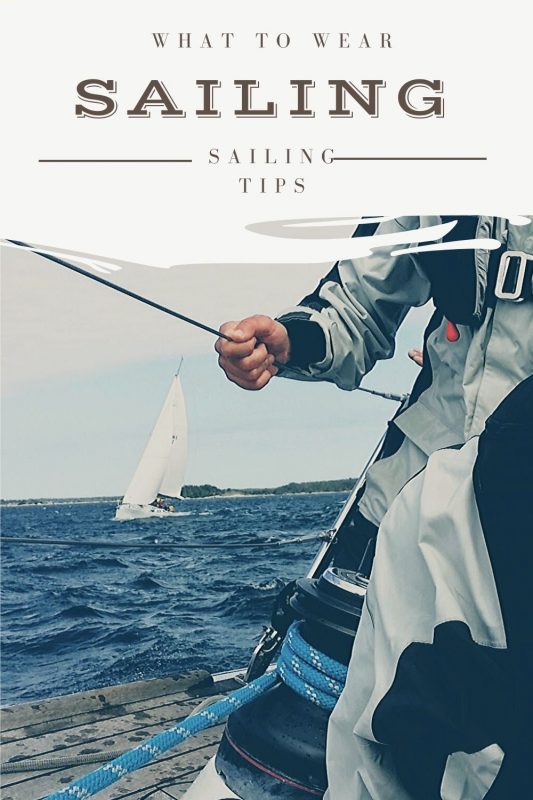
What To Wear Sailing 2023 (& What Not To Wear!)

Helly Hansen vs Patagonia – Which Is Better 2024?

What Is A Catamaran? All Your Questions Answered 2024

Storm Sails: The Ultimate Guide

What Is A Sailboat Mast?
- Search Search Hi! We’re Emily, Adam and Tiny Cat, liveaboard sailors travelling the world on our 38ft sailboat and writing about it as we go. We hope we can inspire you to live the life you’ve always dreamed, whether that’s exploring the world or living a more simple way of life in a tiny home. Find out more. Patreon
- Privacy Policy

The global authority in superyachting
- NEWSLETTERS
- Yachts Home
- The Superyacht Directory
- Yacht Reports
- Brokerage News
- The largest yachts in the world
- The Register
- Yacht Advice
- Yacht Design
- 12m to 24m yachts
- Monaco Yacht Show
- Builder Directory
- Designer Directory
- Interior Design Directory
- Naval Architect Directory
- Yachts for sale home
- Motor yachts
- Sailing yachts
- Explorer yachts
- Classic yachts
- Sale Broker Directory
- Charter Home
- Yachts for Charter
- Charter Destinations
- Charter Broker Directory
- Destinations Home
- Mediterranean
- South Pacific
- Rest of the World
- Boat Life Home
- Owners' Experiences
- Interiors Suppliers
- Owners' Club
- Captains' Club
- BOAT Showcase
- Boat Presents
- Events Home
- World Superyacht Awards
- Superyacht Design Festival
- Design and Innovation Awards
- Young Designer of the Year Award
- Artistry and Craft Awards
- Explorer Yachts Summit
- Ocean Talks
- The Ocean Awards
- BOAT Connect
- Between the bays
- Golf Invitational
- Boat Pro Home
- Pricing Plan
- Superyacht Insight
- Product Features
- Premium Content
- Testimonials
- Global Order Book
- Tenders & Equipment

The Best Drones to Bring on Board Your Superyacht
For capturing the best parts of your superyacht holiday, you'll need to bring a drone on board. Whether it's for exploring hidden caves, uncovering new coves or simply having a little fun, our pick of the best high-tech drones for filming, photography and sports will help you chose which new gadget to take along with you.
Parrot Anafi Drone, £629.99
Released in January 2019, Parrot's latest drone is built with explorers in mind. Equipped with a 4K HDR camera with both photo and video shooting capabilities, its compact foldable design makes it highly portable while extreme weather resistance makes it the ideal choice for everything from tropical rainforests to glaciers. Its 25-minute flight time offers plenty of scope for capturing spectacular scenes while in-built artificial intelligence means even the most novice of pilots can create stunning films.
DJI Inspire 2 Drone, from £3,059
Not only is this sharply styled drone a pleasure to fly, it’s also fitted with a dual-positioning system and FlightAutonomy to avoid obstacles and make sure that if the signal from your controller is lost, it will automatically return to your berth, as well as a top speed of 58mph and wind resistance up to 20 knots. Choose from a range of camera heads capable of 4K and 5.2K video.
The Staaker Drone, $999
The “follow me” mode will capture extreme action at up to 50mph - perfect for explorer yacht owners with a penchant for heli-skiing, surfing and mountain biking. You’ll need the Staaker gimbal and a GoPro to start filming but the drones five adjustable flight modes mean you'll be shot at the perfect angle whatever you're doing.
DJI Mavic 2 Zoom Drone, £1,099
Shoot silky smooth high resolution imagery with this latest offering from drone expert DJI. The Mavic 2 has a 12-megapixel sensor and 4x zoom for capturing every detail and boasts a supreme speed of 72kph. Able to fly for up to 31 minutes at a time, the Mavic 2 is has also been designed as a quieter and more aerodynamic model than its predecessors.
RYZE Robotics Tello Drone, £99
Perfect as a starter drone for new users, the RYZE Tello is exceptionally easy to use while still maintaining similar features found on professional drones. Powered by an intel processor, the Tello is equipped with 2 antennas, a 100 metre flying range and electronic image stabilisation. Able to capture 360 degree photos in 5MP or transmit HD videos in 720p, the drone can also be controlled by an app on your phone for added ease.
More stories
Most recent, from our partners, sponsored listings.
Civic Drone Centre
Exploring Innovative Drone Technologies
6 Best Drones for Sailing and Boating [Soar Above the Waves]
November 22, 2023 by Andrew Heaton Leave a Comment
Best Drones for Sailing and Boating:
Best Overall: DJI Phantom 4 Pro Best Budget-Friendly: Yuneec Typhoon Best Value: DJI Mavic Pro 2 Most Durable: Parrot Bebop 2 Editor’s Choice: Holy Stone HS700E
Hey there, fellow sailing enthusiasts! If you’re passionate about sailing and exploring the open waters, you’ll know how capturing those breathtaking moments can make your experiences unforgettable. And one tool that’s been making waves in the sailing community is the trusty drone. So, without further ado, let’s dive into the world of the best drones for sailing in 2023.
Taking Your Sailing Experience to New Heights
Drones have taken the world by storm in recent years, and when it comes to sailing, they’ve added a whole new dimension to our adventures. These flying marvels offer an unparalleled perspective, giving us an aerial view of the stunning landscapes that surround us. Whether it’s for sharing the sailing life with friends and family or scouting out that perfect anchorage spot, drones have become essential companions for sailors.
![6 Best Drones for Sailing and Boating [Soar Above the Waves] 1 Best Drones for Sailing | best affordable drones for sailing | best drone for sailing boats | Best Drones for Boating](https://civicdronecentre.org/wp-content/uploads/2023/10/Best-Drones-for-Sailing.jpg)
best drone for sailing
Table of Contents:
What Qualities Should You Look For In The Best Drone For Sailing and Boating?
When you’re in the market for a drone to accompany you on your sailing and boating journeys, several key qualities should be on your radar.
First and foremost, stability is crucial. Sailing can mean dealing with winds that are twice as challenging as those on land. So, your drone should be a steadfast companion even in the face of strong gusts. No one wants shaky and erratic footage when you’re out on the water.
Flight Time:
Picture this: you’re about to capture the perfect shot, and suddenly, your drone’s battery cries for a recharge. Annoying, right? Look for a drone with decent battery life, and if you can find one with multiple batteries, even better. Quick swaps without waiting for recharging can save the day.
Video Quality:
Depending on your intended use, video quality can be a game-changer. If you’re after professional-grade footage, be sure to keep an eye on the video capabilities of your sailboat drone. Crystal-clear visuals make all the difference when you’re capturing those memorable moments.
Intuitive Controls:
Controlling your drone should be a breeze, especially when you’re on a sailboat. Look for models with user-friendly interfaces and intuitive controls. After all, you don’t want to fumble around with complicated settings when you’re launching and landing on a moving vessel.
And don’t forget to store your drone properly. On a sailboat, saltwater and unstable surfaces can be unforgiving to delicate equipment. Consider investing in storage solutions like the Peak Design everyday sling, which is perfect for onboard storage and for those off-boat adventures.
The TOP 6 Best Drones For Sailing:
Now that we’ve covered the basics let’s take a closer look at some of the top contenders for the title of “Best Sailboat Drone” in 2023.
#1 The DJI Phantom 4 Pro – Best all-round drone for sailing
![6 Best Drones for Sailing and Boating [Soar Above the Waves] 2 B07CXX9WL1.01. MZZZZZZZ SL600](https://images.amazon.com/images/P/B07CXX9WL1.01._MZZZZZZZ_SL600.jpg)
The DJI Phantom 4 Pro is a sailboat’s dream come true. With a high-quality camera, flying at speeds of up to 45 miles per hour, it’s a sailing enthusiast’s best friend. This sleek drone can handle ocean winds and deliver stunning 4K footage at 60 frames per second. Plus, it’s packing a 20-megapixel camera, ensuring top-notch photo quality. A sailboat’s perfect companion. This one is also best drone for boating you should have.
The Phantom 4 Pro’s excellence comes at a price, around $$$$ to be exact. It’s also quite large and heavy, which might pose some transport and storage challenges. Lastly, the battery life is about 20 minutes, so keep an eye on the clock when you’re capturing those breathtaking moments.
#2 The Yuneec Typhoon – Best for videography
![6 Best Drones for Sailing and Boating [Soar Above the Waves] 3 B07FLGQX5C.01. MZZZZZZZ SL600](https://images.amazon.com/images/P/B07FLGQX5C.01._MZZZZZZZ_SL600.jpg)
The Yuneec Typhoon is a favorite among sailing enthusiasts for good reason. It’s easy to fly, even for beginners, thanks to its user-friendly design. Its camera is capable of producing high-quality photos and videos. The real standout feature? Its stability, thanks to the six propellers. This sailboat drone keeps steady even in strong winds, ensuring you get those envy-inducing shots.
On the downside, the Yuneec Typhoon comes with a hefty price tag, which might not be ideal for newcomers. However, if you’re serious about videography, it’s a worthy investment.
#3 The DJI Mavic Pro 2 – Best high quality
![6 Best Drones for Sailing and Boating [Soar Above the Waves] 4 B07GDC5X74.01. MZZZZZZZ SL600](https://images.amazon.com/images/P/B07GDC5X74.01._MZZZZZZZ_SL600.jpg)
The DJI Mavic 2 Pro is a powerhouse. It boasts a 20-megapixel camera with built-in stability technology, guaranteeing exceptional picture quality in any weather conditions. With 30 minutes of flight time, it offers extended flying fun. Plus, it’s compact, making it a breeze to store on your sailboat.
The only real drawback is the price, but the quality you get makes it well worth the investment.
#4 The Parrot Bebop 2 – Best mid-range option
![6 Best Drones for Sailing and Boating [Soar Above the Waves] 5 B0179JFAW2.01. MZZZZZZZ SL600](https://images.amazon.com/images/P/B0179JFAW2.01._MZZZZZZZ_SL600.jpg)
The Parrot Bebop 2 Power is an improved version of its predecessor. With one of the most impressive flight times on the list, 30 minutes, it’s perfect for extended flights. Automated shot modes make it easier to use, and the follow object mode adds creativity to your shots. Plus, it comes with two batteries and various accessories.
The video quality is only slightly better than the previous model, which might disappoint some. Additionally, some features are locked behind in-app purchases, which could be a turn-off for some users.
#5 Holy Stone HS700E – Best budget drone for sailing
![6 Best Drones for Sailing and Boating [Soar Above the Waves] 6 B092Z4VNSY.01. MZZZZZZZ SL600](https://images.amazon.com/images/P/B092Z4VNSY.01._MZZZZZZZ_SL600.jpg)
For those looking to get into drone sailing without breaking the bank, the Holy Stone HS700E is a great option. It’s rugged and comes with three intelligent batteries, providing 23 minutes of flight each. The quiet brushless motors won’t disturb your surroundings, and it’s designed for stability, perfect for sailing.
#6 The Splash Drone 3 Auto – Best waterproof drone for sailing
![6 Best Drones for Sailing and Boating [Soar Above the Waves] 7 B071HQF33V.01. MZZZZZZZ SL600](https://images.amazon.com/images/P/B071HQF33V.01._MZZZZZZZ_SL600.jpg)
Here’s a unique one for you: the Splash Drone 3 Auto is designed for wet and wild conditions. Completely waterproof, you can even land it in the ocean without worry (just watch the depth!). While it might not match the others in terms of overall quality, its waterproof capabilities make it ideal for sailing. With a flight time of around 15 minutes, it’s a reliable companion for your wet adventures.
In Conclusion [Best Drones for Sailing and Boating]
Sailing with a drone by your side is an experience like no other. Whether you’re capturing the beauty of your sailboat slicing through the waves or exploring uncharted territories, drones are your gateway to unforgettable memories.
The drones we’ve reviewed have been put to the test by experienced sailors, ensuring you get the best companions for your nautical adventures. So, the next time you set sail, don’t forget to bring your trusty drone along for the ride. Happy sailing and happy droning!
- How to Find a Lost Drone?
- Best Indoor Drone with Camera
- How To Connect DJI RC To Wifi?
- Drone That Follows You
- Can I fly a Drone in My Neighborhood?
- DJI Care Refresh Worth It?
- Can I Fly a Drone in a Public Park?
- Gifts for Drone Lovers
- Best Fishing Drone with Bait Release
- Best Recreational Drones
- Best Drone for Travelling
- Best Tablet for Drones
- Accessories for a Drone
- Where Can I Fly My Drones?
- Surf Fishing with a Drone
Related posts:
Leave a reply cancel reply.
Your email address will not be published. Required fields are marked *
Save my name, email, and website in this browser for the next time I comment.
- Yachting World
- Digital Edition

How to fly a drone like a pro and land it safely back onboard your yacht
- July 25, 2019
There’s a fine art to using a drone at sea – Terysa Vanderloo explains how to avoid crashing yours into the ocean

Drones can provide spectacular overhead shots while under way. Photo: Andy Schell: 59 North Sailing
With the advent of small, affordable and user-friendly drones , many cruising sailors have adopted them as a way of achieving really impressive and professional-looking photographs and video.
I speak from experience when I say this is far easier said than done, and flying a drone while under sail is a challenging task. However, there are proven techniques and tricks for flying a drone while under way – without it ending up in the drink. I spoke to three drone-piloting experts for their advice.
Andy Schell and his wife Mia run 59° North Sailing, which offers adventure sailing charters on their Swan 48 and Swan 59. They’re also fantastic photographers. Andy uses the DJI Phantom 4 Pro , which he believes is the best drone for flying from a boat because of the legs it has on its underside, which provide the perfect handles for catching the drone – without the very real fear of getting fingers caught in the propellers.
Note: We may earn a commission when you buy through links on our site, at no extra cost to you. This doesn’t affect our editorial independence.

An on board reporter flying a Phantom 4 from the stern of a Volvo Ocean Race yacht. Photo: Jesus Renedo
My partner Nick and I have the smaller, compact version, the DJI Mavic Pro , which has no legs for landing: I can attest to the nerve-wracking experience of catching it from a moving boat and agree wholeheartedly that the Phantom would be a better option for flying while under way. The advantage of the Mavic is that it’s far smaller and folds up to an even more compact shape – we live on a 38ft monohull, and so stowage space is at a premium.
Brian Trautman, best known as the skipper of SV Delos on the popular YouTube sailing channel, has been flying drones since 2014. Since then, he and his crew have flown many drones in different conditions.
Brian has both the Phantom and Mavic on board Delos and also recommends the Phantom while flying from the boat as it is far easier to catch, as well as being more powerful, which helps in windy conditions. Their Mavic is used primarily for land-based excursions.

Brian Trautman (centre) prepares to fly a DJI Phantom 4 Pro
Therefore, which drone you choose may come down to whether or not you have the space to store a chunkier model like the DJI Phantom, and whether or not you want a drone that is portable. It’s worth noting that there’s a cost difference between the two: the Phantom is cheaper than the Mavic.
Another model that might be of interest is the DJI Spark , which is even smaller and more compact than the Mavic – not much bigger or heavier than a sunglasses case. Nick and I have successfully flown a Spark from a catamaran in light winds before, although it’s no good for windier days and also doesn’t have 4k capabilities.
I also spoke to Richard Edwards, a professional videographer who was one of the onboard reporters responsible for some of the incredible footage during the last Volvo Ocean Race . He suggests a simple yet ingenious solution to catching a drone such as the Mavic or Spark, which is to glue a light plastic mini tripod to its underside.
Read YBW’s guide to the best drones for sailing
Once you’ve purchased your drone, the next step is to get used to flying it. Clearly, practising from land is a wise starting point, so you can get used to how it handles as well as hone your skills for catching it.
Brian starts off by flying the drone in circles around trees or houses. “If you can do a complete 360° flying manually around a stationary object while still keeping a constant distance and the object in frame then that is something to be very proud of,” he advises. “Once you’ve mastered this, then it’s time to try the same thing on a boat – which is much harder.”
After you’ve mastered the basics, Andy suggests flying the drone on a breezy day in manual mode with the collision sensors and ‘return to home’ function turned off, since that’s how you’ll have to do it on the boat. He suggests: “Practice launching and catching it by hand – someone on the controls, another person on the launch and catch, ideally wearing sunglasses and thin gloves as safety protection.”

Raymarine’s Axiom UAV app can automate launch, in-flight navigation and return-to-boat for DJI drones
The next logical step is to practice flying the drone from the boat while at anchor to get used to the space you’ll be working with. However, at some point, it will be time to put your skills to the test and fly the drone from the boat while under way.
Andy says: “You need two people: a pilot and a catcher. We launch off the stern quarter, opposite the radar pole; that way, all the pilot has to do is fly straight up. The drone will want to hover in place and the boat will just sail away from it safely. Flying it downwind is far easier on battery life. Upwind, the drone can handle about 20 knots, but it’s harder to land on a heel and the battery won’t last as long.”
Richard also flies from the stern. “To launch, have a person hold it above head height off the back of the boat – it’s irrelevant if it’s downwind or upwind. Power up and immediately ascend to keep clear of rigging, and the boat speed should naturally mean it flies away.”
Flying a drone from a catamaran is generally easier as there is more space to launch and catch it and the boat itself is more stable. The trampolines may provide more room than the stern of the boat, but the disadvantage here is that there is still a danger of the drone colliding with the rigging. Again, choose a launch spot where there is clearance and the boat will be moving away from the drone once it’s in the air.
Article continues below…

Tested: 5 of the best drones for filming your yacht
Drones have really advanced over the past few years, with anyone now able to try their hand at piloting a…
Safe landings
When it comes time to bring the drone back to the boat and catch it, Richard advises already having a plan in place before taking off (this is also where you find out if you turned off the ‘return to home’ function). “Never land anywhere but at the stern of the boat and come in from behind, never from the side or overhead, otherwise you’ll be disorientated and hit the boat.”
Andy and Mia also catch from the stern. Andy says: “It’s easier to land than you think. “We start coming home at 60% battery. You’ve got to fly it in backwards, because the forward vision sensors will stop it from getting close enough to catch. “Keep the boat sailing straight and bring the drone in. If you need to re-do it, just let go of the controls. The drone will stop and hover, and the boat will safely sail away from it. Then bring it in for another try.”
On a catamaran, the trampolines may look tempting as a catching area, however it’s worth considering Andy and Richard’s advice: the safest option is the stern as the drone will be able to approach from behind, it will be clear of all rigging, and the boat is always moving away from the drone, meaning multiple attempts to catch it can more easily be made.
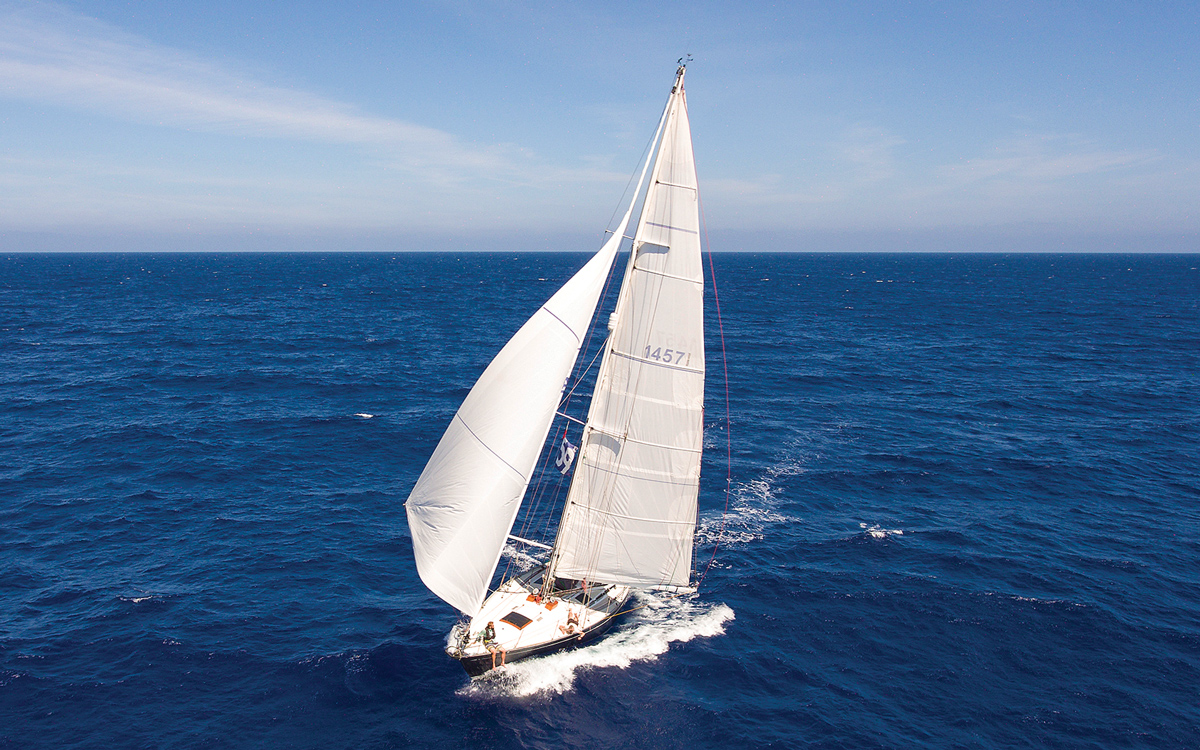
Drones can capture photos and video that were once possible only from a helicopter. Photo: Andy Schell / 59 North Sailing
Brian emphasises how difficult it can be to judge distances between the drone and the boat when both are moving. In fact, Brian usually flies the drone from the dinghy, which deals neatly with the danger of collision with the boat. “Most of the times I’ve crashed the drone have been trying to land while under way. I usually try to avoid this at all costs and prefer to fly from the dinghy. It’s much easier to land without worrying about the rigging.”
For cruising couples who are sailing short-handed this could be a challenge, although Brian and Karin, his wife, have managed it many times when it has just been the two of them on board. “Start simple and focus on simple movements,” Richard advises. “Most of all, have fun, but don’t underestimate the importance of safety and planning.”
Although it’s natural to worry about losing the drone overboard, Andy advises: “You won’t get the amazing shots if you don’t push the limits, so you’ve got to be prepared to lose the drone. If you absolutely cannot afford to lose it, then don’t fly it at sea!”
Drone specs
4k vs 1080?
This refers to the resolution of the image; 4k is actually 3840 x 2160 pixels and 1080 is 1920 x 1080 pixels. 4k is swiftly becoming the industry standard, however if all you want your photos and videos for is your own personal use or to post on social media, 1080 is perfectly fine.
Gimbal or stabilisation software?
Many drones these days will boast either a gimbal or electronic stabilisation. This is especially important for cruisers wanting to take video, however stabilisation will also help produce sharp photographs.

- Allures yachting
- Garcia yachts
- Dufour yachts
- Fountaine Pajot Sailing Catamarans
- Outremer catamarans
- Allures Sailing Catamarans
- Garcia Explocat
- Dufour catamarans
- Aventura catamarans
- NEEL Trimarans
- Fountaine Pajot Motor Yachts
- Garcia trawler
- Beneteau Motorboats
- Aventura Power Catamarans
- Yacht school
5 best drones for filming your yacht
If you want to take unique aerial shots or video of your boat or cruise regions, you need a good drone. Fortunately, quality drones are becoming more affordable, which is why Yachting World has teamed up with TrustedReviews.com to thoroughly test the latest drones for quality yacht footage.
Over the past few years, drones have really moved forward, and now everyone can try their hand at piloting a device. Mini drones - This is a great first training session, during which you can experience a lot of driving pleasure. Large quadcopters fly almost autonomously, thanks to a variety of automatic flight modes.
Many drones are equipped with fantastic cameras for capturing stunning aerial photographs that would not be possible with any other device - just look at the footage The Ocean race to verify this. The video quality also grows with every new model.
However, you need to be able to fly intelligently, so be sure to read Drone code , which contains all the information you need to fly safely - courtesy to the yachts around you at anchorages is important!
This rating contains models that have been tested by time and thousands of users, some of them have recently come out with some kind of upgrade, but they should be guided by when choosing a quality drone for your boat:
Dji Mavic Pro
Key features:
- Compact, foldable design
- 4K video / 12MP images
- top speed 40 mph
- forward collision detection
- 27 minutes flight
DJI Mavic Pro is currently one of the best drones on the market. It is incredibly comfortable to carry with you thanks to its flexible design. It folds very compactly to the size of a water bottle.
DJI Mavic Pro
All this in addition to several advanced automatic flight modes that allow for truly stunning cinematic shots, plus fantastic 4K video quality and 12MP images. A battery life of about 27 minutes is a very good result for a drone.
If you want a combination of agility in flight and fantastic image quality, then DJI Mavic Pro - the best drone on the market, although now available and DJI Mavic Pro 2 , and more compact Mavic Air.
Rating: 5/5
Parrot Bebop 2 Power FPV
Key features :.
- New control system and FPV goggles
- 2 batteries included - each provides 30 minutes of cordless use
- GPS and GLONASS
- 1080P video / 14MP images
Parrot Bebop 2 Power FPV - this is an update to the original model Bebop 2 . "Power" in the title indicates that battery performance has improved. Now 30 minutes of continuous flight, it is easily replaced by the next 30-minute flight with an additional battery that comes immediately in the kit.
Parrot Bebop 2 Power FPV
Parrot included other accessories as well, including a new remote control system and FPV goggles that really create an immersive experience giving you a top-down view.
There are also automatic shooting modes, including object tracking, for more battery life when needed. Unfortunately, the image quality is not as good as that of other drones, but Bebop 2 power is still one of the best options.
Rating: 4/5
- Takeoff from the palm of your hand
- Gesture controls and quick shots
- 1080P video
- 13 minutes flight
Dji has extensive experience in creating miniature drones, which can confirm DJI Mavic Pro. DJI Spark - technically the smallest drone of the company - but only in comparison with the disclosed one Mavic Pro .
Thanks to its small size and light weight, it can take off right from the palm of your hand, so you don't have to look for a suitable takeoff point. It also has return functions that bring it back to its take-off location at the end of the flight.
To make it even easier to operate your device, you can use the gesture controls to trigger many automatic shots and capture great shots with minimal effort.
Standard package DJI Spark does not include a remote control device, so you will have to use your phone for piloting. There is a combo package "Fly More" which includes a controller and other accessories that you will surely want to purchase for a better experience.
Parrot Mambo
- HD camera and VR headset
- Bluetooth control from a smartphone
- 9 minutes flight
Although there are many cheap ones on the market mini drones from unnamed brands, in this case, you know you are getting a quality device from Parrot.
Parrot mambo
Mambo tiny and lightweight, making it ideal for indoor entertainment, but it will fly well outdoors as well if it's not too windy. The flight is controlled via your smartphone, and the remote control is an optional accessory.
The battery life of about 9 minutes is short enough, but it only takes 30 minutes to fully charge the device. There is a 0.3MP camera that points downwards - so this is not the best drone for taking photos.
GoPro Karma
- Includes drone Karma , camera GoPro HERO6 , 3-axis gimbal for camera Karma grip , compact case
- 20 minutes flight
- top speed 35 mph
Debut GoPro the quadcopter market has not been without mistakes, but fortunately, the company has ironed out the problems. A number of updates have also improved flight, including the addition of more automatic flight modes.
GoPro Karma now also available with the latest action camera GoPro Hero 6 Black ... The Hero 6 Black is the ultimate action camera, so this device is capable of capturing fantastic videos and photos.
There is also a detachable 3-axis gimbal Karma grip for the camera to provide the most stable picture, which you can use separately from the drone. It took a while, but GoPro finally caught up with all the features that can be seen on other similarly priced drones.
Expert advice
Renowned marine photographer richard langdon provides five basic tips for piloting a drone:.
- Practice, practice, practice until all controls are second nature
- Never fly close to people
- Taking off a drone from a moving boat, even if it moves slowly, always brings surprises. In the mode Gps the drone will instantly want to hold position and can fly straight into someone's head, backstay or antenna VHF .
- Monitor the battery level
- When you return your drone, especially if you have no eye contact with it, fly it forward so you can see what is happening through the drone's camera
News and articles

Journey around the world Sarah and Ronaldo: in the world's oceans, at home ...

Self-sufficiency is the goal of many sea cruisers that sail the world's oceans, generating their own water and energy, writes Erin Carey.

An overview of the new vessel Oceanbel 128 Explorer from the legendary shipbuilder Pekka Koskenkylä. Everything that you wanted to know, but were afraid to ask, is detailed and factual.


Drones on Boats: Choosing a Drone and How to Fly it While Boating
Step-by-step on how to buy a drone for boating use and learn to safely launch and recover a drone from your boat [with video].
There is no doubt that small [1] unmanned aircraft systems [2] (sUAS or drones) are becoming nearly as common place as iPads and smartphones. The features and capabilities of these machines are astounding and not the least of which is the quality of the available on-board cameras.
With the popularity of drones on the rise, it’s no wonder that many boaters are intrigued by the idea of bringing a drone on their boat and having the ability to capture aerial video & photos of your boat at your favorite anchorage.
Before launching a drone from your boat, you’ll want to do your research on the best drone to buy, learn about FAA laws and practice flying your drone on land. It’s very important to plan ahead for your drone launch and recovery when flying it on the water from your boat.
This article addresses everything you’ll need to know about selecting and flying a drone with the intent of using your boat as a launch and recovery point.
Make sure to watch his video demo at the end showing the drone launch, flight and recovery on a boat!
Types of Drones
The range of sizes for remote controlled aircraft is stunning. Most people think of drones that fit in suitcase sized carriers or fold or collapse into a large backpack carrier. However, there are a category of sUAS called nanodrones – the smallest of these which are available commercially to the public can literally fit in the palm of your hand.
Apart from the thrill of flying a drone, most people are particularly attracted to the camera functions which may be available on a given drone. Bear in mind that the size of your drone can be directly related to the quality of any onboard camera and, by extension, to the quality of any images or videos you may record.
By the Number of Rotors
By far, the most common configuration on the market is the quadcopter with 4 rotors. This design makes controlling the motion of the drone in its 4 degrees of motion relatively easy. Those 4 would be translation in 3 dimensions plus rotation around the vertical axis. (Note that lateral and longitudinal rolls are generally undesirable!) That being said, it is possible to find drones with 3 to 8 rotors.
Two rotor standard RC helicopters are available but much more difficult to learn to fly. While 4 rotors may be somewhat optimal, you might infer that more than 4 rotors, which also means more than 4 motors, could represent a faster drain on the battery and therefore, a constraint on the amount of flight time.
Recreational versus Commercial
Any sUAS drone can be used either recreationally or commercially. The one big difference is that in the latter case, the operator MUST be certified by the Federal Aviation Administration (FAA). Commercial use means receiving compensation of any kind for the use of your drone.
Certification is simply taking a written test. That test includes basic elements which are also on the license exam for private pilots. Naturally, there are also questions on the operation of drones and questions to test knowledge of the rules as spelled in FAA Part 107. There is no flight test.
Regardless of intended use, ALL drones MUST be registered with the FAA . A very useful online resource is Know Before You Fly . It contains pages of information including FAQs and links to relevant sites such as where you go to register your drone.
Selecting a Drone
Before you purchase a drone and spend upwards of $1500…or more, be an informed and prepared consumer. It is an expensive item and you are committing yourself to obeying the laws regarding its use.
It should be noted that some drones come with pre-programmed geo-fences . That is, they are smart enough to know NOT to approach certain areas and at least one manufacturer has configured its drones to not even take off within 20 miles of Washington, DC. Before buying a drone, you should find out if you live or intend to fly in one of these exclusion zones.
First of all, make a list of all of the features that you want in a drone . This might include things like camera quality, whether you want a camera at all, user interface design on the remote control, flight time on a fully charged battery, flight range from the controller, carrying case, and other potentially useful features like auto take off and land, return to home, and preprogrammed flight maneuvers. It appears most of the drones in the $1000 range have all of the features I just listed.
Determine your budget . The number and relative quality of features will affect the price you pay. With online shopping websites, it is very easy to compare drones for features and prices. In creating your budget, be aware that you may need or want to purchase additional items like spare batteries, spare rotors, or a carrying case if one is not included in the base price.
Select your manufacturer. By comparing features and prices, you are likely to find a few manufacturers that can meet your requirements. Be sure to review customer comments online. Drones on Amazon and sites like Carolina Dronz offer a variety of drones with consumer feedback. Pay particular attention to issues of customer service! Where you buy is completely up to you. However, consider whether it is better to order online and have it shipped or to simply buy it at your local Best Buy !
The Autel Robotics X-Star Premium is very easy to fly. Their customer support is VERY responsive and maybe best of all, it is American made! I am very happy with my purchase. I subsequently purchased an additional battery and combination lens cap and gimbal lock.
My comments here do not represent a commercial endorsement or recommendation of any kind. I am merely explaining the choices I made and why.

Learning to Fly Your Drone
Before you get clever and try to fly your new toy off your boat, you should absolutely follow the manufacturer’s instructions and practice on land in an appropriately open area.
You will want to get a feel for take-off and landing. You will want to understand how fast the battery drains and under what conditions. You will want to try all of the features available in a controlled environment. Do experiment with moving your aircraft around. Play with the camera settings as well for both photos and videos. Understand how to adjust your exposures for the best photos given any given lighting conditions.
I first practiced in my backyard and then tried it from the parking lot of the office tower where I work. With each flight, I directed my drone to fly higher, faster, and then farther and farther away. This let me determine just how far I could visually track the aircraft and to understand how obstacles affect the range of control. Eventually I flew my drone at my marina but from land. I did some overwater flights but I always launched and recovered on solid ground.
Fully understand all of your flight controls. The one thing with which some people struggle is using the point of view monitor on the controller versus flying the drone while looking at it. The challenge is more so when flying the drone towards you because your control inputs may be reversed from your intentions.
Launching and Recovering Your Drone from Your Boat
First take a deep breath… There are a still few things to do before you try this. In this case, “dry run” is not just jargon!
Unless you own a boat that has wide open flat spaces on deck or cabin tops, recovery of your drone will mean grabbing it out of the air as it hovers close at hand. The best way to do this is to have an assistant grab and hold the drone while you work the controls. Do NOT try to do both at the same time.
Keep the rotors above the head of your helper so that they can reach up to grab the aircraft. The most important thing will be to shut down the rotors once your assistant has a firm grasp on the drone. The rotors are sharp and spin fast. They can easily cause injuries like lacerations. You will not want to shut down the motors until s/he has a good grasp on it in case you need to fly the aircraft up and away to prevent it from crashing into the water or into your assistant.
Practice this maneuver on land a few times so that both pilot and recovery crew get a feel for how it will be. Also, beware of the down draft from the rotors. It is significant and could startle an unaware individual.
Let me offer a word of caution here that may or may not be obvious. Many drones have a Return To Home feature where you can command the aircraft to return to its launch site and land automatically. For what may be obvious reasons, you do NOT want to do this on a boat. The Return To Home function is sometimes automatically initiated when the batteries get low. Always manually fly your drone back for recovery before the battery gets too low.
Time for the Real Thing!
Pick a flat stable place on your boat from which to launch. You will want to have the widest possible circle of clear space. The drone will lift off and possibly side slip or drift momentarily until it can lock in its GPS position. During that brief time, you will want to be clear of rigging, sails, or any other obstacles.
Once your drone is hovering, fly it away from the boat…especially if the boat is swinging or rocking. All drones come with recommendations on safe weather conditions in which to fly. You will want to be even more conservative with those limits when flying from a boat.
You may wish to start by orbiting your boat. Then advance to exploring your anchorage. By the way, not only do I NOT recommend flying while your vessel is underway, the FAA regulations put limitations on that ( CFR 107.25 ).
While you are exploring your anchorage, remember that other boats anchored nearby may not enjoy the presence of your aircraft, regardless of how cool you may think it is. Keep your drone a safe and respectful distance from other boats.
Also, there are rules on how close you may fly to an airport. Remember to check if there are any airports within the area of concern around your anchorage.
When you are ready to recover your drone, have your assistant stand on a flat stable deck area. It should be open to allow the unimpeded approach of the drone and to also prevent your helper from having to lean or otherwise contort themselves to reach the drone.
Instruct your recovery helper to never jump, lean, or get off balance when reaching for the aircraft. Once you have secured the aircraft, enjoy your photos and plan your next flight!
Drones are fun and can even provide a source of revenue. They are available most everywhere. If you want to use one while boating, do your research, make smart choices, and obey the laws. You can anticipate years of pleasure and great memories captured in aerial photos and videos!
Watch how Capt. Rob launches and recovers his drone from his boat, Bay Poet , while anchored on the Chesapeake Bay.
Subscribe to my YouTube Channel for more how-to videos, sailing excursions and more!
[1] A small UAS is defined to be less than 55 pounds in weight at the time of takeoff. This includes everything that is onboard or otherwise attached such as a separate and detachable payload.
[2] Small unmanned aircraft system (small UAS) means a small unmanned aircraft and its associated elements (including communication links and the components that control the small unmanned aircraft) that are required for the safe and efficient operation of the small unmanned aircraft in the national airspace system. Unmanned aircraft means an aircraft operated without the possibility of direct human intervention from within or on the aircraft.
Love the boat life? Check out these picks for your boating lifestyle:
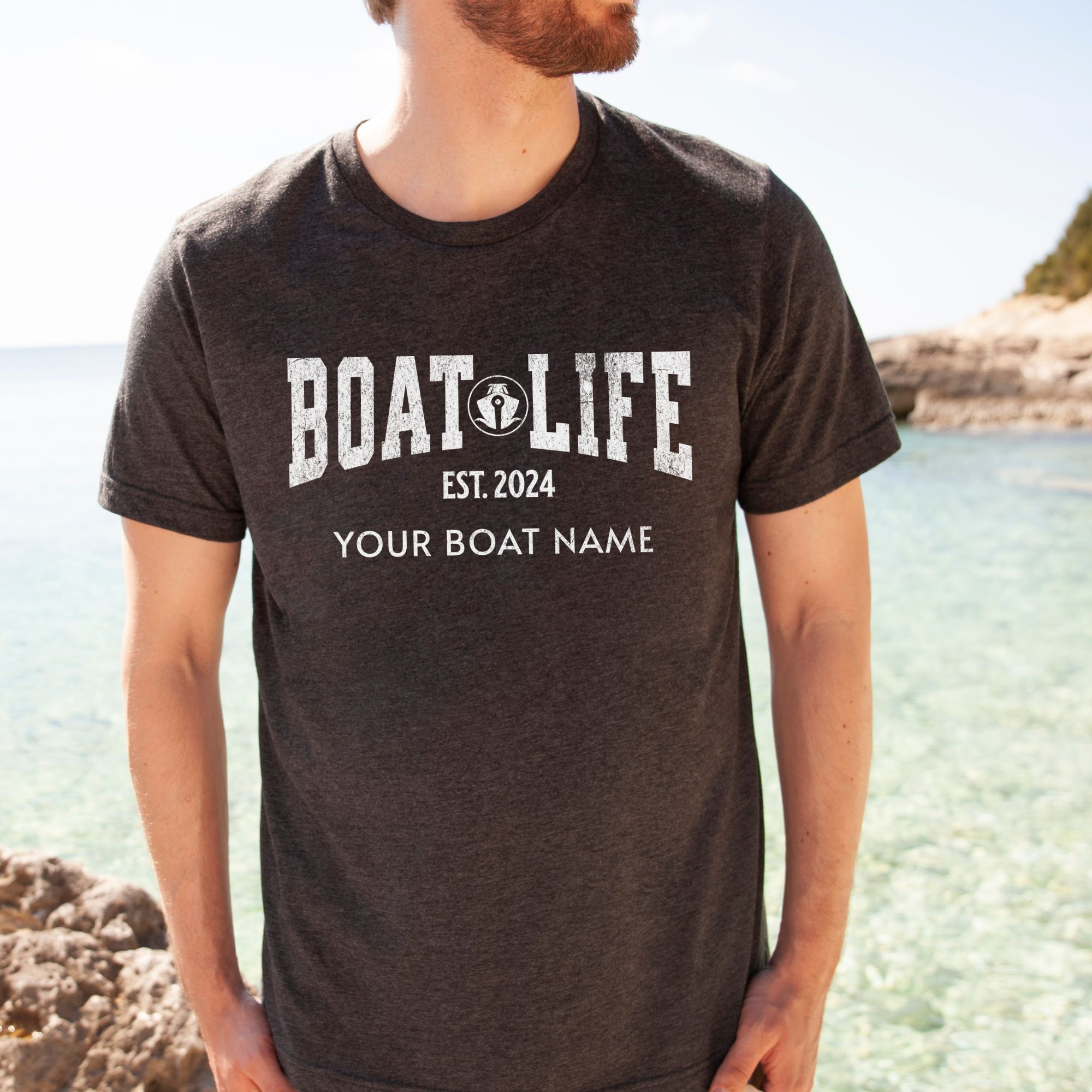
Boat Life Custom Boat Name & Est Year T-Shirt
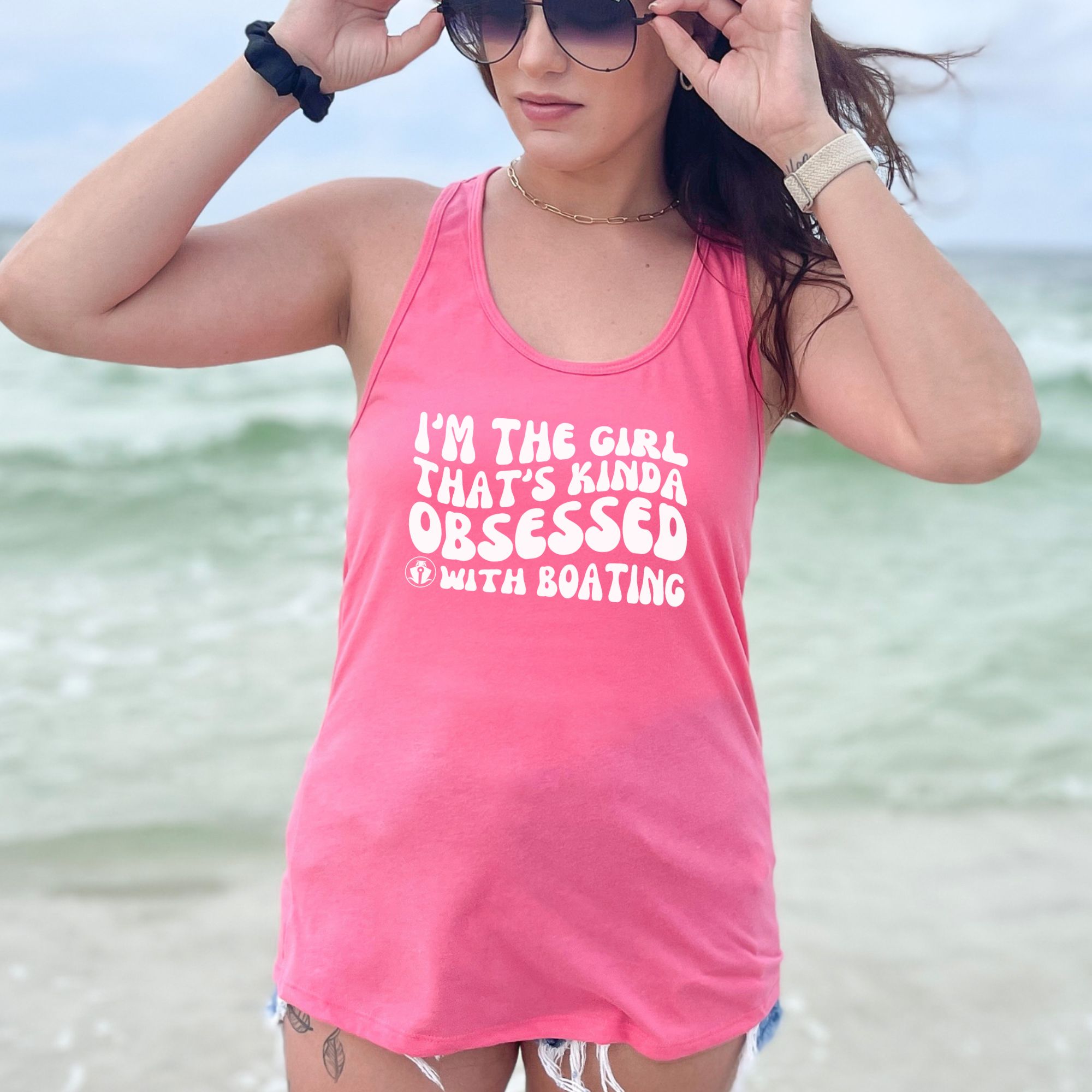
Girl Obsessed with Boating Women’s Tank Top
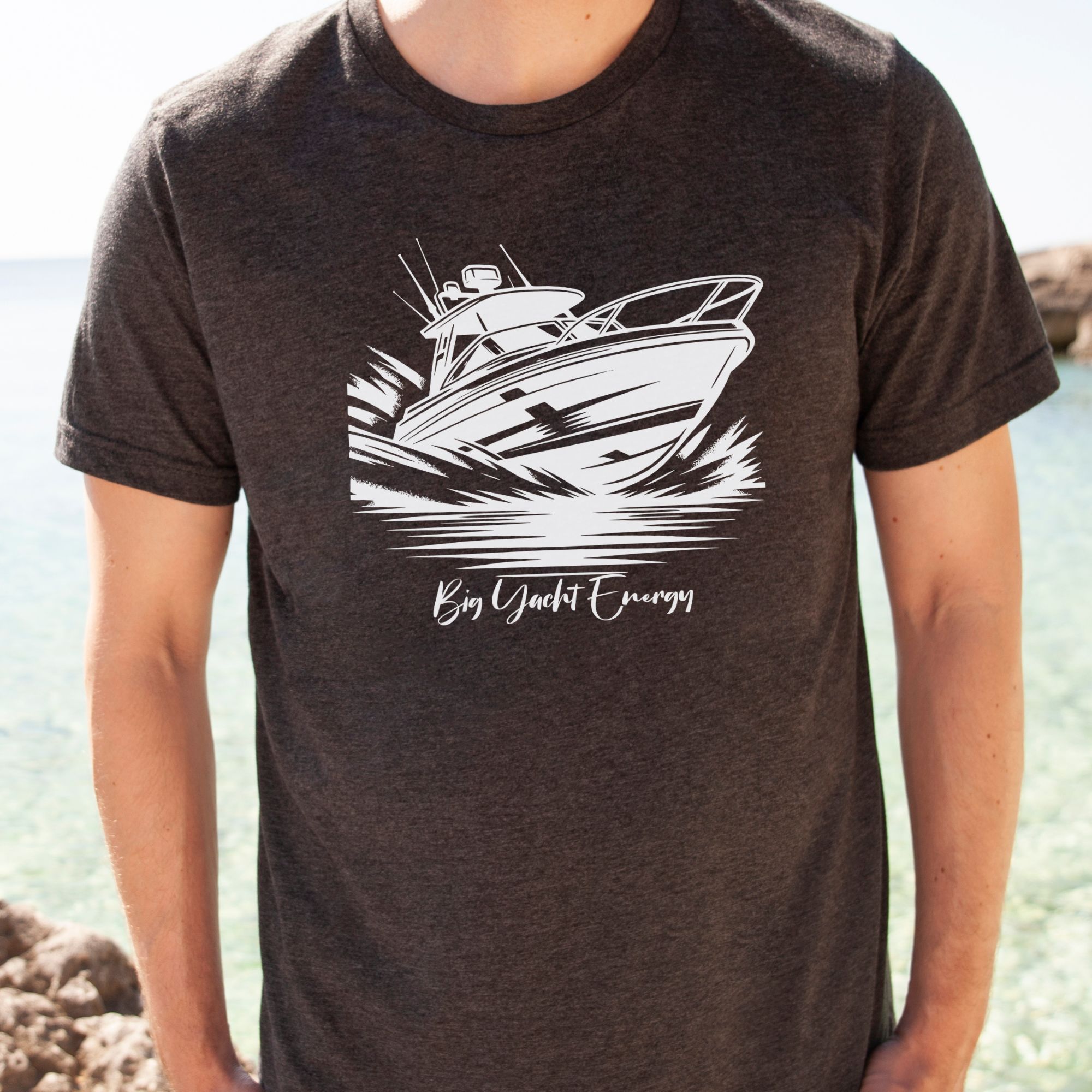
Big Yacht Energy Boat Shirt
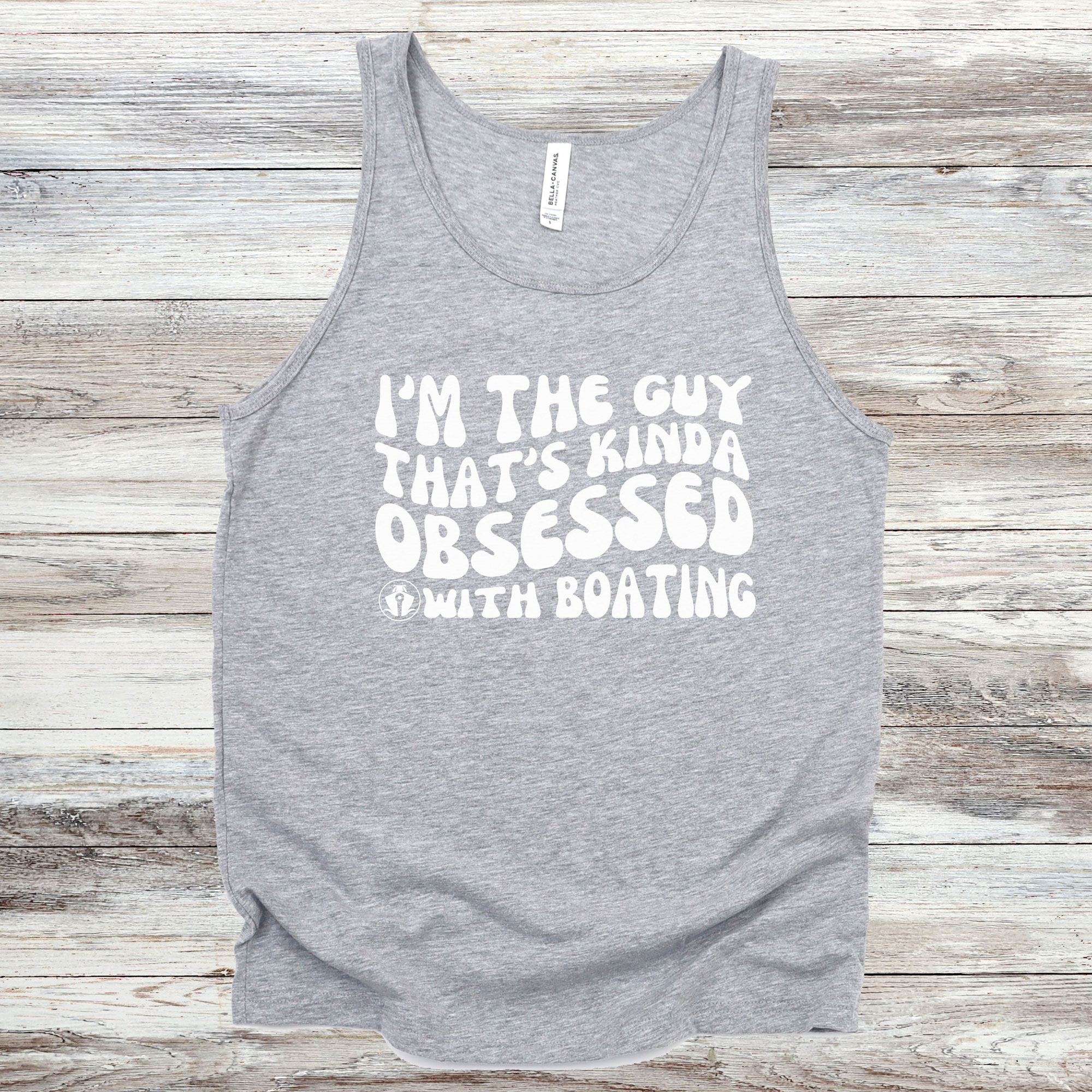
Guy Obsessed with Boating Men’s Tank Top

Capt. Rob Chichester
Related posts.
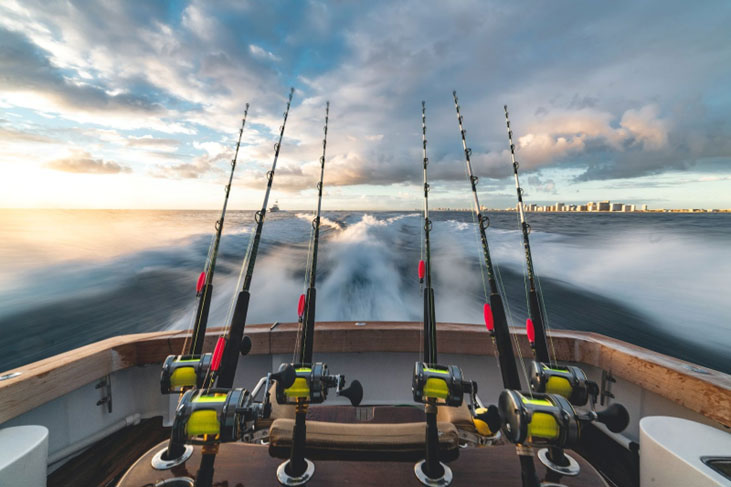
5 Must Haves to Carry in Your Boat
July 25, 2023
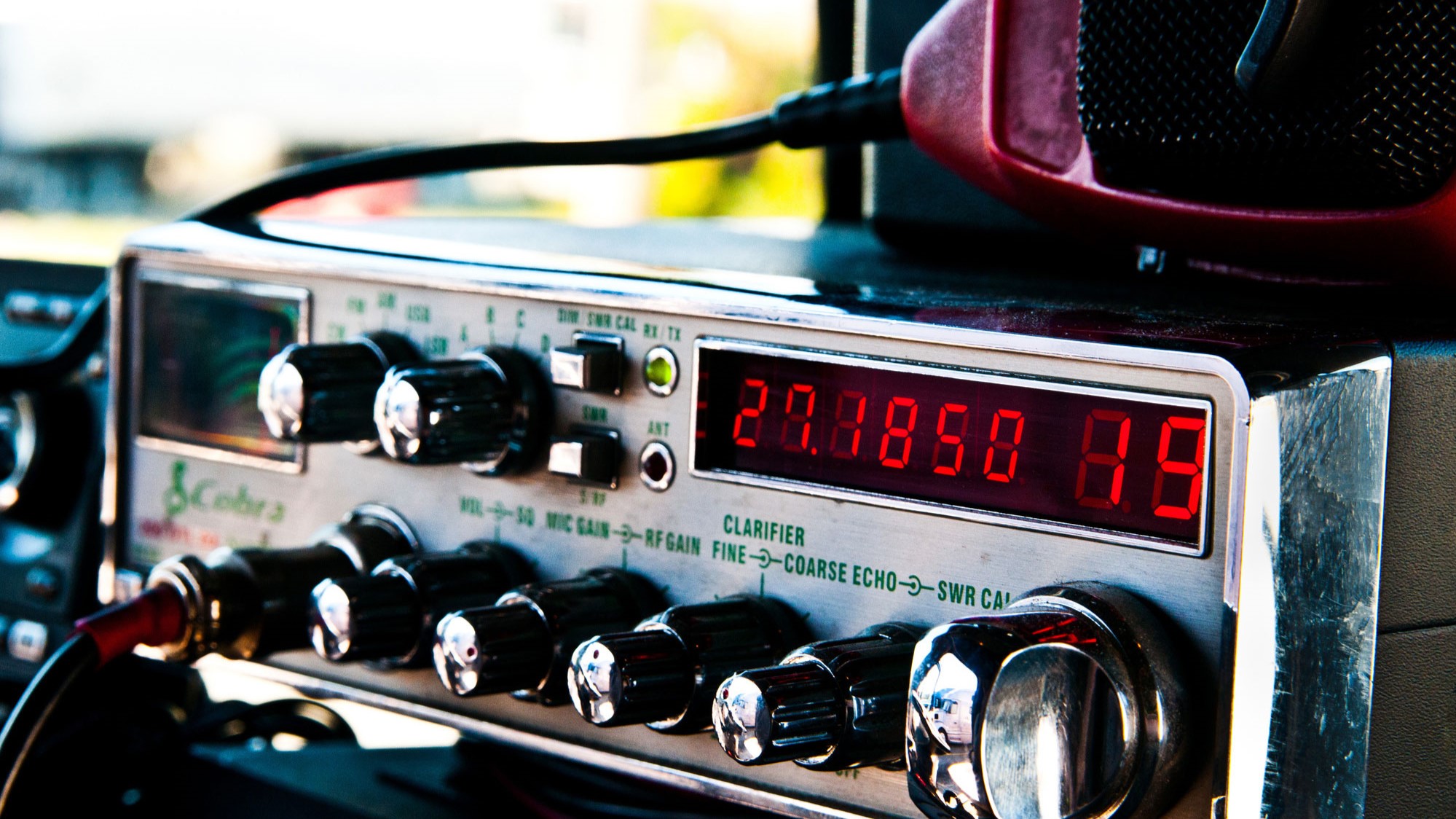
Why Boaters Should Use A Citizens Band (CB) Radio
March 28, 2023
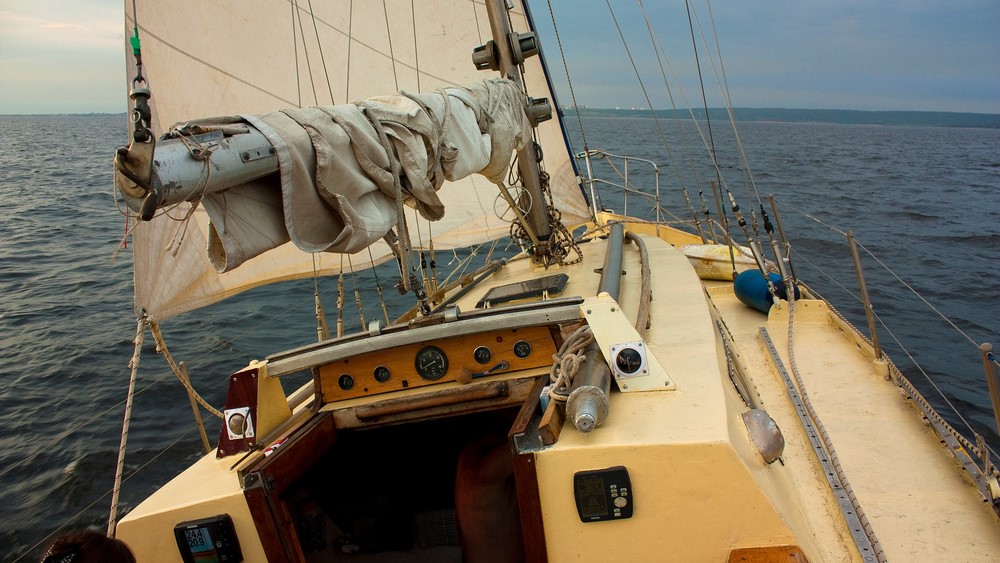
5 Ways Clevis Pins Are Used In Sailing Boats
September 7, 2022

I like the X-Star Premium a LOT! It is easy to fly, takes great photos, and the price was right. I also like the hard case that comes with it. That is important when sailing as things can move around the cabin as the boat heels and tacks. The three best features…in no particular order…are the cost, the orange color, and the responsivity of their customer support.
Awesome article, your footage looks really good! How are you finding the Autel X Star? I’m looking for a drone to use when I go out sailing with my brother, and have come across [an article on drones] the Autel isn’t on there, but after looking at your footage and reading your article I’m seriously considering it! Although I am intrigued by the portable aspect of the DJI Mavic Pro. Will have to think on it some more.
Anyway, thanks again for the article, was extremely insightful!
Comments are closed.
Worldwide Free & Fast Shipping for Order $900+
Custom Duty & Tax included for USA/Australia/New Zealand
30-day Return Guarantee & 1-year Warranty
Global Online Support & Repair Service

- SplashDrone 4 Fishing Edition
- Fisherman MAX (FD2)
- Fisherman FD3
- Fisherman FD1
- Compare Fishing Drones
- SplashDrone 4 Filming Edition
- SplashDrone 4 Fishing Starter Combo
- SplashDrone 4 Fishing Master Combo
- SplashDrone 4 Night Fishing Combo
- SplashDrone 4 Search & Rescue Combo
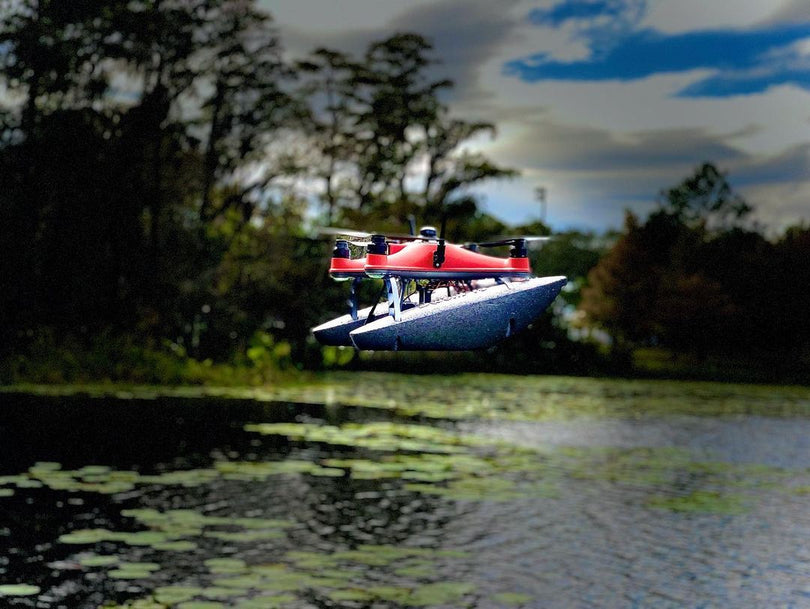
- SplashDrone 4
- SplashDrone 3+
- Brand Ambassador
- Drone Fishing Charter
- Drone Fishing Master
- Drone Fishing
- Sailing & Boating
- Water Sampling
- Falcon Training
- Track Your Order
- Warranty Policy
- Where to Repair
Best Drone For Sailing & Boating
Swellpro splashdrone 4, every sailor's dream drone.
Whether it’s for filming your yacht or explore hidden beaches, many boating and sailing enthusiasts like to carry a drone with their journey at sea. However, standard drones like DJI are not built to survive the marine environment. And this is where SwellPro waterproof drones find its place in the boating world since 2015.
Seawater-proof Fly and Control
Don’t risk the safety of your crew and your drone by hand-catching the drone on a boat. You can easily and safely land SplashDrone 4 on the water as it is totally waterproof and coated to resist saltwater corrosion. Even the remote controller is waterproof so it is not afraid of wave splash.
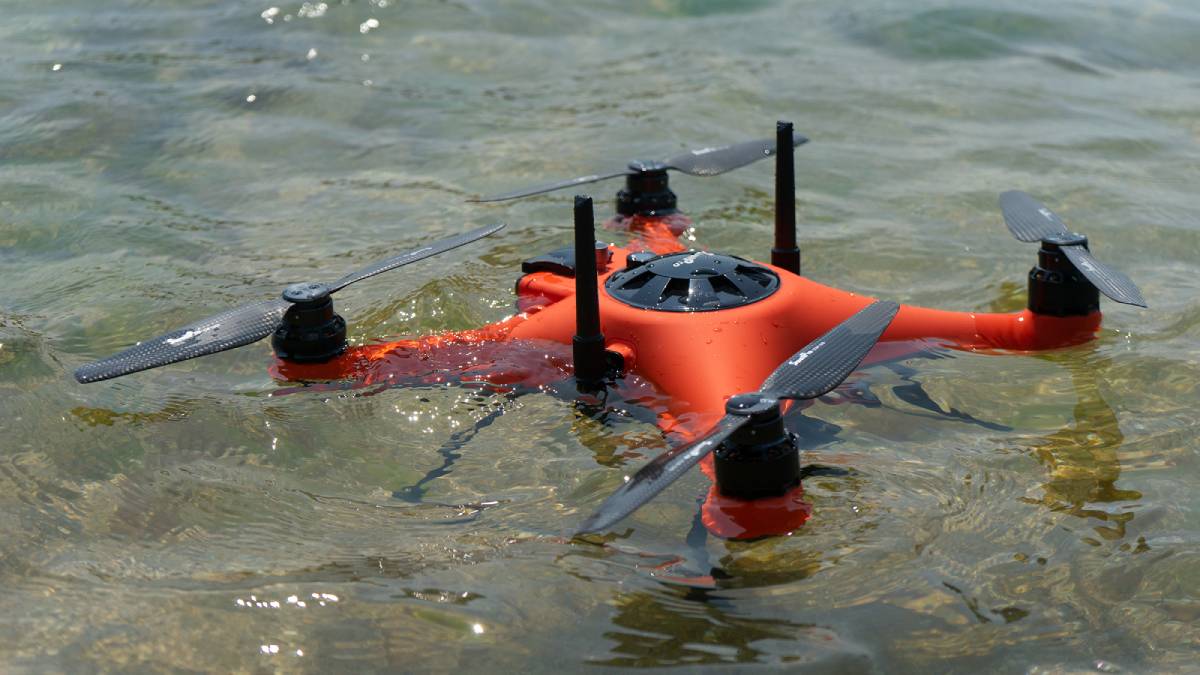
Floating Design
Corrosion-free.
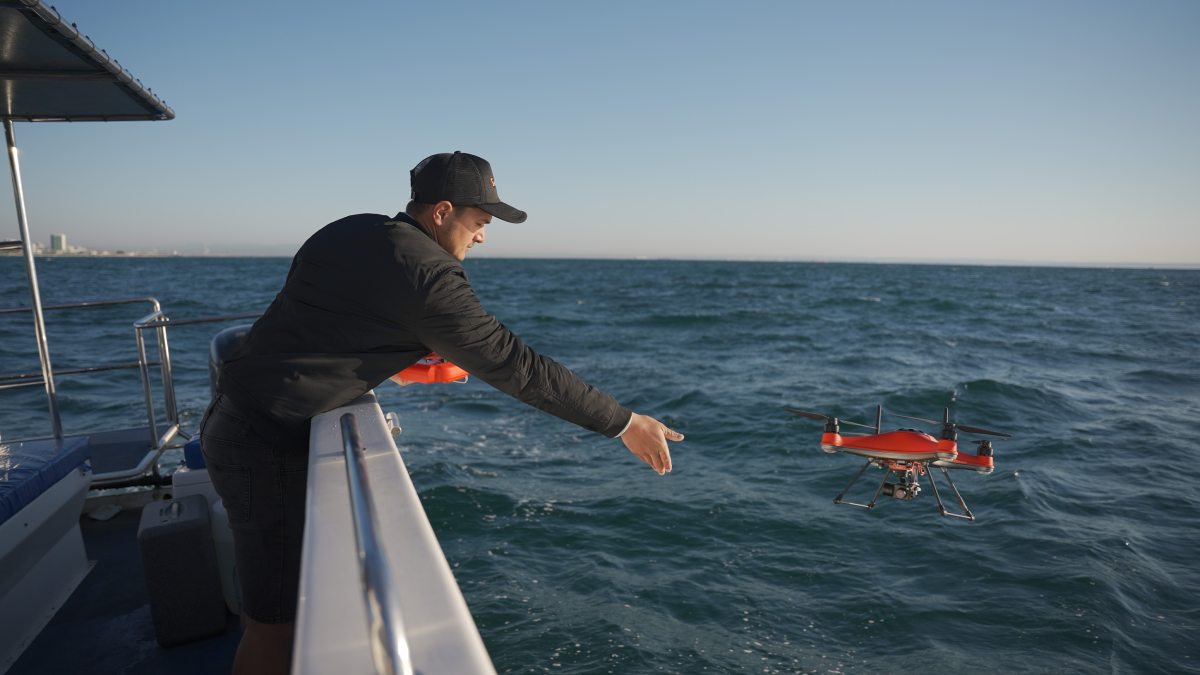
Fly Against The Wind
The high propulsion system and aerodynamic design empowers the SplashDrone 4 to fly without any issues in strong wind at sea. You never need to worry about your drone blowed away by strong wind.
Wind resistance Beaufort force 33 knots / 31 mph / 60 km/h
Film Your Boat in a New Perspective
SplashDrone 4 can take high-resolution photos and smooth videos with a 4K camera stabilized by 3-axis gimbal. On top of that, there are several innovative flight features on the drone for cinematic sailing footage in all kinds of boating situations.
Shot on SplashDrone 4
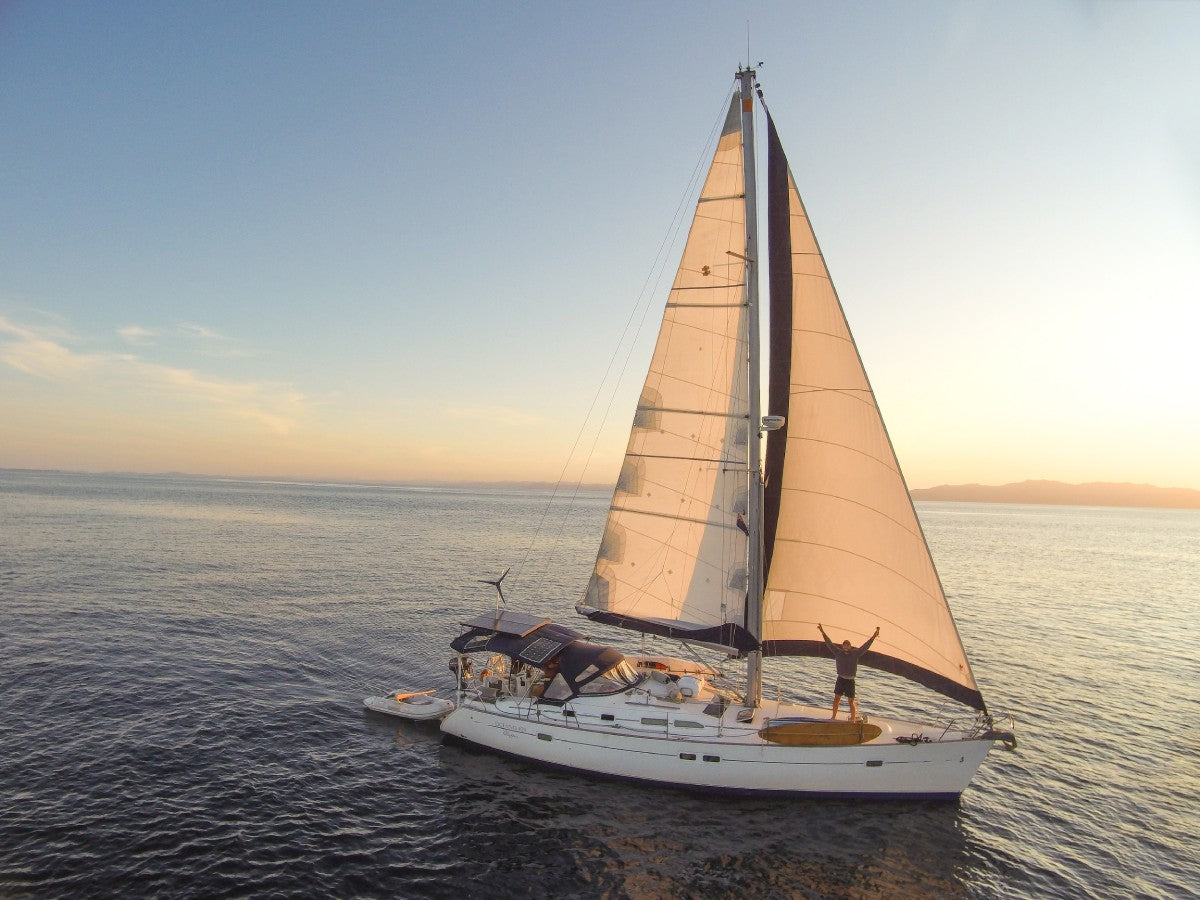
Cruise Mode
In Cruise mode, SplashDrone 4 is going to maintain the direction and speed of your input after you release the remote controller. You can change the direction of the drone with a single joystick. Keep a moving boat in the frame while you concentrate on camera angles and composition.
Dramatic and abrupt movements of a drone can lead to shaky footage. Engage our innovative Smooth+ controls to switch from joystick to fine knob control of drone movement. Your footage will be instantly smoother as you dial in just the right amount of turn or bank. Easily set up a smooth transition or an orbit pan. Even if you are new to drone controls.
Use the autopilot Follow-me feature to chase a speeding boat automatically at up to 22 mph. SplashDrone 4 will actively keep the boat in the frame at a constant angle from the front, side, and back with the camera always pointing to the position of the pilot. It’s particularly useful for single-handed boats.
Fly Safe on the Ocean

Dynamic Return to Boat
The SplashDrone 4 constantly records the GPS position of the remote controller, allowing the aircraft to always return to the pilot‘s position even if they are on a moving boat far away from the original take-off point.

When the SplashDrone 4 turns upside down on the water for any reason, PowerFlip feature turns the drone back to the normal state to take the control back.
Surveillance, Exploration and More …
Pirate surveillance.
Piracy is still a threat to ocean cruisers in many parts of the world. SplashDrone 4 gives them a high vantage point in detecting approaching objects in the vicinity of a yacht. If they notice a suspicious boat, they can alter their course ahead of time to avoid assaults by would-be pirates.
Anchor Spot Searching
SplashDrone 4 has been used by cruisers to scope out remote anchorages more accurately and faster than can be done with charts, dinghy, from the spreaders, or keel strikes. Carrying the Dronar sonar fish finder, SplashDrone 4 could be dipped in the water and detect water depth in what might be a good anchorage.

“Best Gifts for Sailors”
- yachting world.
Nov 8, 2021
- Stunning sailing shots: how to choose and best use a drone
Sailing is an unforgettable experience, but why not enhance your sailing memories with stunning visuals?! Our tips on how to take drone footage on your boat will help you get the perfect shot. Plus, we'll show you how to minimise risks and prevent drone accidents at sea, so you won't lose your valuable data.
Choose a drone for sailing that is waterproof
At first glance, it might seem obvious, but there are dozens of boaters who have destroyed their drone in the waves. So if you're serious about capturing your sailing experiences at sea, a waterproof drone with a built-in camera is essential. As well as being able to shoot your sailing journey worry-free, the drone can be used to take footage of other fun activities, such as snorkelling, kiteboarding or paddleboarding.
YACHTING.COM TIP: Wondering what other activities to combine with sailing? Whether you enjoy water sports, such as snorkelling and kayaking, or prefer to explore islands and towns on foot or by bike — we've put together a list of the best. Try out our Top 12 fun activities to do on a sailing holiday and make the most of your yachting vacation.
When choosing your drone, you should focus on a few other features such as the weight of the drone , photo resolution , zoom , lens aperture and image stabilization . The formats in which the drone takes photos or shoots video are also important — the more of them the device supports, the better.
It is also advisable to choose a device that can land on the surface of the water. Also, consider the so-called home point (HP) — a fixed point for the drone to return to if it loses connection to the remote (something quite difficult to find at sea). In regattas, for example, this tends to be the judges' boat or the nearest piece of land. Having a home point also allows you to safely film from a greater distance. Keep in mind that mid-range drones have a signal range of about 5 km (individual models vary) but, even so, it's always best to keep your drone within sight.
A great choice for sailors is a device where you can set a dynamic home point — it continuously updates the position of the home point according to the position of the remote.
Another key aspect is flight time and battery level , especially in open sea. If the battery level indicates less than 30%, you should bring the drone close to the HP (home point) so that it can get an improved signal and land better. If you're planning to land it on a moving boat, you should start flying the drone back when the battery is at 50%. If intend to do a lot of flying, it definitely pays to have spare batteries to hand.
YACHTING.COM TIP: Don't have your drone yet? You can find drones with a camera in online stores, such as on Amazon, or search for your local specialist shop . Believe us, you'll have a lot of fun with it when sailing and capture some great shots. Just remember that if the drone has a built-in camera, it is necessary in the EU to register the device and the pilot.
Filming with a drone when sailing
The biggest challenge when filming with a drone is to get good quality, detailed shots without crashing into anything on the boat. Professional videographers recommend filming from a height above the highest mast of the floating boat, about 10 to 20 metres up. If you'd like to get some really action-packed footage, take advantage of manoeuvres such as when turning during a race. As well as the action of the crew, you may even be able to capture boats battling it out.
YACHTING.COM TIP: Would you rather be steering the boat than filming it with a drone? Get your skipper's licence with us .
More useful sailing tips:
The art of nautical map reading
Advanced sail trim techniques
Navigational aids: how to sail safely
Sextant and navigation: survival without GPS
The ultimate yacht cleaning kit
New Year's resolution: let's sail more eco
How to sail a yacht on a tailwind
How to sail a yacht in crosswinds
How to have a nautical Christmas
What to pack for a tropical sailing
How to sail a yacht against the wind
How to gear up for the 2024 sailing season
Medicanes in Greece
Top 10 reasons boaters contact their insurers
Currents and sailing: the Atlantic Ocean
Where to shelter from the Bora in Croatia?
Sail trim 3: become a pro
Anchoring in narrow bays, currents and swell
It's easier with two people.
Every shot requires cooperation and although you may not need a whole film crew with a director, cameraman and sound engineer when filming your voyage, it's still worth having a helper. They can help you track the drone in the air, hold the drone as it takes off and lands, and generally assess the situation to determine when the drone is "fired up" enough to take off safely.
Your assistant can also help you in situations where the drone might hit the mast, shrouds (the steel cables holding the mast up) and other lines on board. You won't be able to see these on the screen or glasses connected to the drone. And, as you'll be focused on guiding it, you will need someone to give you perspective, even if your drone has to capability to automatically avoid obstacles.
YACHTING.COM TIP: Often when sailing, especially with a small boat, the only way to land a drone is to catch it in your hand. This can be quite an adrenaline rush. The "catcher" should wear a cap to prevent the risk of facial injuries and some more substantial gloves .
Tips on shooting videos with a drone
Although today's audiovisual technologies make it easy to take high quality photos and videos, it pays to know some basic guidelines to make your yachting holiday footage even better. Whether you're an experienced sailor or looking for the perfect sailing destination for beginners , we've got some tips on how to film your dream holiday:
- Think about your shots. You want to create an interesting video for family or friends, but you don't want to spend hours going over the rough footage.
- Before you launch your drone into the air, take a look around for the most interesting locations to film. Also, make sure the weather is clear. There's only so much wind your drone can handle and you don't want it to get blown away.
- Consider the resolution of the video. Will HD resolution be enough or do you want to project the video in Full HD (1920x1080) or 4K ? Do you have a computer with enough capacity to handle the raw footage or would you like to shoot the video on your smartphone?
- Find a helper to help you launch and land your drone, and generally help you with shot selection. It's also worth having a pair of gloves ready in case either of you have to catch the drone.
- Don't forget to monitor your battery level, set a low battery warning or set it to "Return to home" or "Hover".
- A drone makes a good servant, but a terrible master. Make sure that you are in control.
YACHTING.COM TIP: Already have a drone as part of your sailing kit? Check out what else to bring with you in our guide — Sailing essentials: don't forget to pack these things .
From the deck of which boat will you capture stunning scenery?
Got all your boating gear ready and just need a sailboat? You've come to the right place. We'll find the perfect one together!

Denisa Nguyenová
Faq drones on the boat.
- 2024 BOAT BUYERS GUIDE
- Email Newsletters
- Boat of the Year
- 2024 Freshwater Boat and Gear Buyers Guide
- 2024 Boat Buyers Guide
- 2024 Water Sports Boat Buyers Guide
- 2023 Pontoon Boat Buyers Guide
- Cruising Boats
- Pontoon Boats
- Fishing Boats
- Personal Watercraft
- Water Sports
- Boat Walkthroughs
- What To Look For
- Best Marine Electronics & Technology
- Watersports Favorites Spring 2022
- Boating Lab
- Boating Safety

Drones for Boats
- By Jim Hendricks
- Updated: September 7, 2018
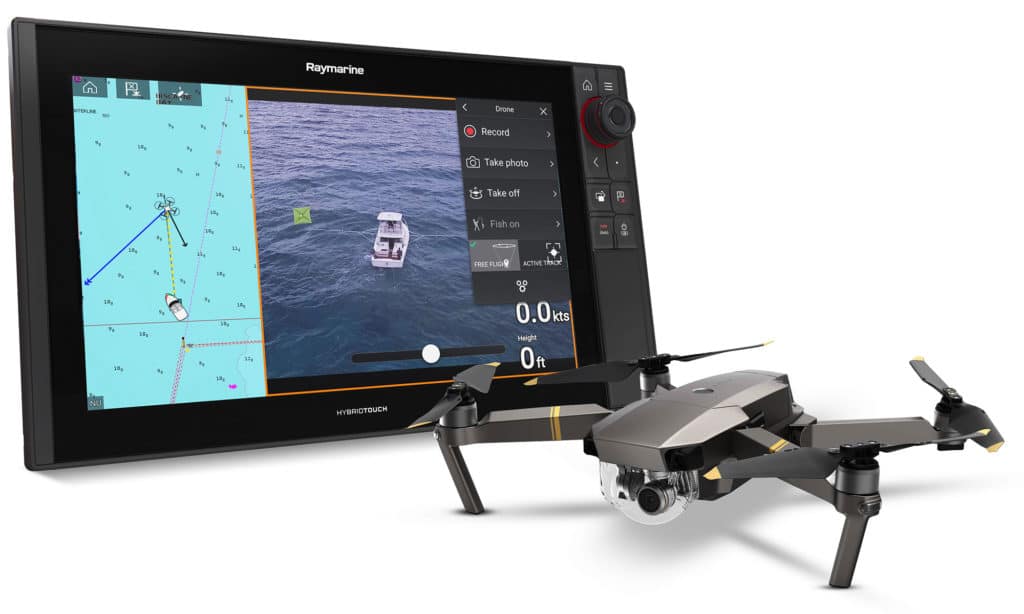
With marine multifunction displays, you can look underwater with sonar, all around the boat with radar, and even peer through the dark with a thermal camera. Now you can also look down from above on your boat, thanks to the unmanned aerial vehicle (UAV) control feature built into the Raymarine Axiom and Axiom Pro MFDs.
This marine-electronics first allows boaters to connect to a UAV, then control the drone and view images from its camera using the Axiom display. The patent-pending technology is currently compatible with DJI Spark and DJI Mavic series UAV video drones (see “Compatible UAV Models”). Features include single-button launch/track/record functions, GPS link for various follow modes, and real-time video streaming to the MFD.
It works like this: First you need to update your Axiom or Axiom Pro with the latest Raymarine Lighthouse software — version 3.5 — a free download directly to the MFD. Then pair a drone such as the DJI Mavic Pro (shown left, $1,299, store.dji.com) with the MFD. Press Take Off to launch the UAV and track it with a live-chart display on one side of the Axiom split-screen display, which will show the drone’s location, along with the direction in which the camera is pointed, the direction the drone is headed, and the course back to the boat.
The other side of the split screen shows a live feed from the UAV’s video camera with data overlays that include the drone’s distance from the boat, as well as its speed and altitude.
A Fish-On button is designed to automatically capture fishing action. As soon as you hook up (for example, while trolling for tuna or drifting for tarpon), you press the Hook-Up button. The drone instantly launches, acquires and tracks the boat, and starts recording aerial footage of the action. You can also view the action live on the Axiom display to see, for instance, if any mahi are following the one you just hooked.
Compatible UAV Models The new UAV control function of Raymarine’s Axiom and Axiom Pro MFDs is compatible with these video drones.
DJI Spark The affordably priced Spark mini drone (not shown) includes ActiveTrack, which can automatically recognize and track objects. PalmControl mode allows you to control the Spark’s movements and take pictures with hand gestures, and a stabilized two-axis gimbal for smooth video footage. You can choose from pano or shallow-focus modes to get the shots you want. Return-to-home mode ensures you won’t lose your Spark when the battery runs low. With flight speeds up to 31 mph, it offers 16 minutes of maximum flying time on a single battery charge. $399; store.dji.com
DJI Mavic Air Among the Mavic series is the Mavic Air (shown left). Designed to fold for easy transport, it features top-of-the-line flight and video performance. The three-axis gimbal, three-directional environment sensing, and 4K camera offer the capability of 32 megapixel sphere panoramas and 100 Mbps video capture. Gimbal dampeners create steady shots. It includes a remote, but you can also use hand gestures to launch and control this drone in SmartCapture mode. With flight speeds up to 42.5 mph, it offers 21 minutes of maximum flying time on a single charge. $799; store.dji.com
- More: Electronics , Gear , raymarine
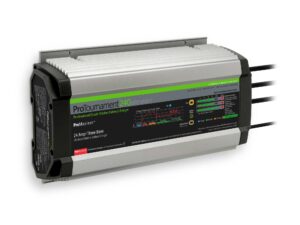
ProTournament Elite Gen 3 Chargers
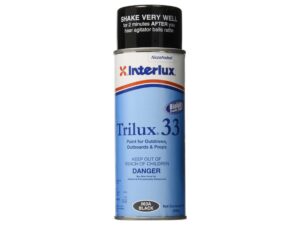
We Test Interlux Trilux 33 Aerosol Antifouling Paint
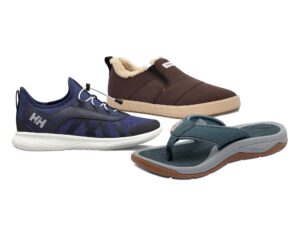
Boating Shoes for Spring and Summer
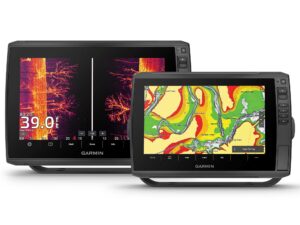
Garmin EchoMap Ultra 2 Series
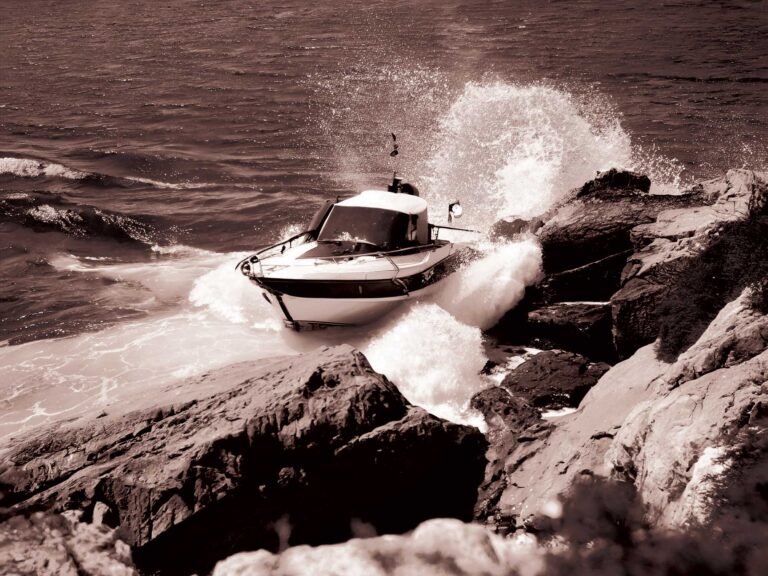
What to Do if Your Boat’s Engine Dies
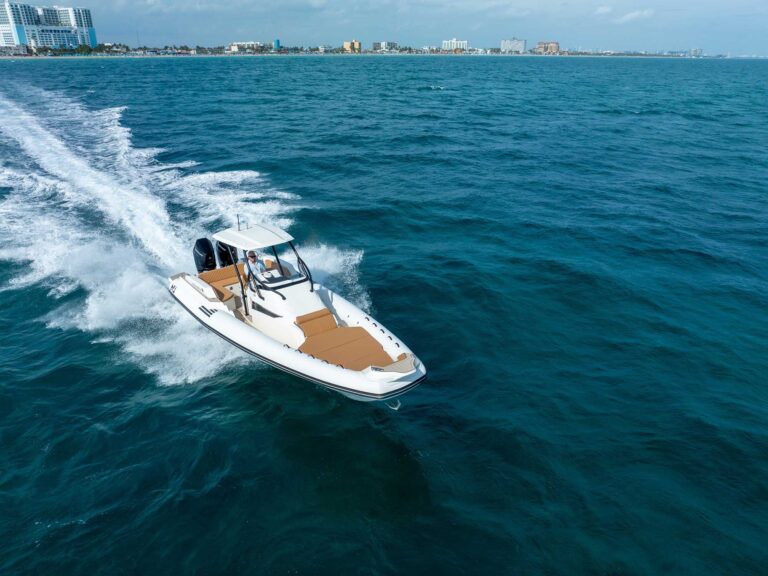
Boat Test: 2024 Nuova Jolly Prince 33 CC
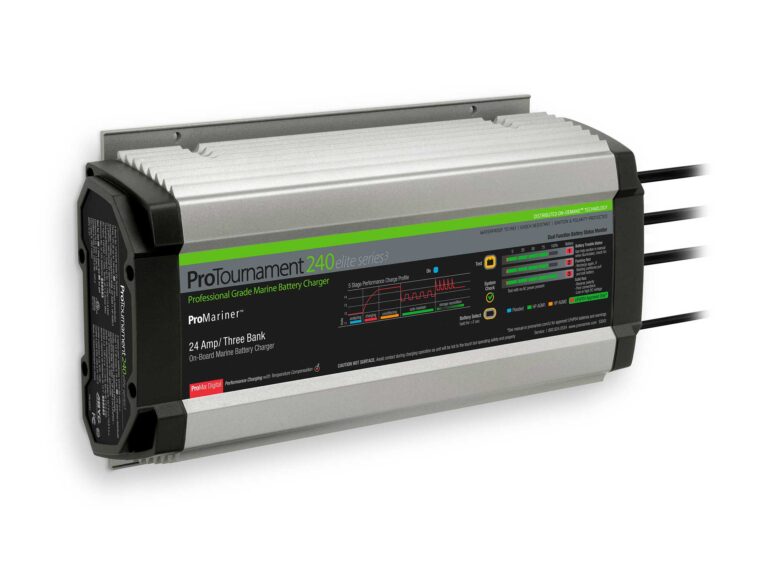
Boat Test: 2024 Starcraft SVX 231 OB CC

- Digital Edition
- Customer Service
- Privacy Policy
- Cruising World
- Sailing World
- Salt Water Sportsman
- Sport Fishing
- Wakeboarding
Many products featured on this site were editorially chosen. Boating may receive financial compensation for products purchased through this site.
Copyright © 2024 Boating Firecrown . All rights reserved. Reproduction in whole or in part without permission is prohibited.
- BOAT OF THE YEAR
- Newsletters
- Sailboat Reviews
- Boating Safety
- Sailing Totem
- Charter Resources
- Destinations
- Galley Recipes
- Living Aboard
- Sails and Rigging
- Maintenance
- Best Marine Electronics & Technology
How to Use a Drone on a Sailboat
- By Ronnie Simpson
- Updated: June 10, 2020
In the past decade, drones have completely revolutionized how we see sailing. Just a handful of years ago, capturing airborne images of a sailing yacht, a regatta or a harbor was exclusively the domain of professional photographers or well-heeled amateurs who could afford a helicopter and were equipped with a pricey long-lens camera to capture the moment.
Now, literally millions of people around the world carry a small, unmanned drone that can be easily launched into the sky and commanded to take photos and video; some even have the ability to distribute these images live onto social media. Due to the nature of sailing and the constantly changing seascape in which it takes place, being able to achieve this aerial perspective is invaluable to telling the story of a cruise or racing yacht and its crew, and the places and conditions in which it travels.
With the recent proliferation of drones, most sailors have undoubtedly seen or heard a drone buzzing around their boat or marina at some point. And many of us probably have a friend who owns a drone and has a good crash story. As an experienced, commercially licensed drone pilot and drone enthusiast, time and again I’ve heard a variation of this tale: “I got a drone once, and I wrecked it the first day. I decided that drones are not for me.”
To which I say: Imagine if you went for a sail once, with no experience and no proper instruction, and had a mishap while docking and decided that sailing just wasn’t for you. Don’t sell yourself short. Owning and operating a drone is far easier and more practical than many sailors think.
Getting Started
With about a thousand bucks, or less, and just a bit of practice, you too can capture beautiful high-resolution videos and photos of your boat at anchor or under sail in no time. For less than the price of the smallest, cheapest sail on your boat, you can have a device that has the potential to deliver incredible imagery that can allow you to share your sailing adventures with your friends and loved ones, add value to the eventual for-sale listing of your boat, and capture that incredible image of your boat as a gift or focal piece in your home.
Commercially available drone technology has improved by leaps and bounds since the original drones began to hit the market several years ago. Now, as then, one company has established itself as a leader in the industry and gained the lion’s share of the market: DJI. When this Chinese-based company first released the Phantom series of drones, they completely revolutionized sailing media and photography almost overnight. While there are several other reputable drone-makers on the market, virtually every single licensed professional drone pilot I have worked with (including myself) relies on DJI products. Disclaimer: I am not sponsored or paid by DJI in any way (but I wouldn’t be opposed to it!).
One of the first pieces of advice I can offer is to not buy a knockoff drone or the cheapest one you can find online. Like most things, you truly do get what you pay for. In the past couple of years, a number of DJI Mavic-like clones, oftentimes for crazy-low prices ($90, shipped), have popped up on the market. If you ever actually receive your drone, you will almost undoubtedly be disappointed in the product. My first drone was a cheap one, about $200; it was a liability and somewhat likely to crash itself or create some type of drama nearly every time I flew it. Operating off a boat? Forget about it. One of the best moves I made was to upgrade to my first DJI Mavic Pro drone, which now retails for under a grand. Overnight, my drone game was elevated significantly from the $200 beginner model.
When operating around boats and the water, turning off all of the auto and safety features is almost universally agreed upon by any experienced drone pilot. If you launch from a moving boat, for example, the drone will oftentimes try to “return to home” and land at its point of takeoff when the battery drops to a certain percentage. This can obviously be catastrophic when flying from a moving boat. Also, returning for a landing is usually met with resistance because the drone won’t want to come within several meters of the boat and its rigging, making landing impossible. Turning off all the safety and auto sensors also improves battery life and performance.
Before launching off a boat, it is quite critical to become familiar with your drone and how it operates and handles. A wide-open grassy space with no other people, trees or structures is ideal. Concrete and steel structures (e.g., buildings) in particular wreak havoc on the compass of a drone. When going through the drone’s initial setup, “swinging” the compass—just like on a sailboat’s autopilot—is one of the first required steps. This is best done in a grassy field or at least 50 yards away from your house, and definitely not on a hard, paved surface.
Once you have practiced and feel confident in operating your drone—having practiced launching and retrieving it by hand—it’s time to move on to the boat. A drone with legs, such as the DJI Phantom series, is the undisputed champion of boat-based operations. Due to its portability, however, DJI’s Mavic line of drones has become increasingly popular. Though these Mavic drones are less ideal to catch on a moving boat, it is doable, and it was interesting to see that several of the top onboard reporters in the recent Brest Atlantiques race were using Mavic 2’s. Aftermarket 3D-printed handles, or homemade versions, can make the task of catching a Mavic easier; online research is very helpful.
Useful Tips
During retrieval, but especially during launching, anything that can be done to reduce the apparent wind is helpful. When launching off a moving boat going upwind, I generally ask the main trimmer to ease the mainsail and the helmsman to luff up and slow down the boat. Once the drone is away, the helmsman simply falls back off and the main is retrimmed. The one drone that I lost was off the famous 70-foot racing sled Merlin, and it was entirely my fault. I tried to get the drone away without disrupting the team’s racing; had I communicated with the skipper, I would have known that they had one more tack before the mark. I easily could have gotten the drone away at that point. The major lesson learned in that loss of a really nice Phantom 4 was to always be hyperaware of launching off the leeward side of a fast boat going upwind; the turbulence, or “dirty air,” in the lee of the mainsail sent my drone straight into the drink. Launching while sailing downwind tends to be easier because the boat is generally flatter and apparent wind speeds are reduced. Once the drone is out of my hand, I like to immediately throttle it up and away from the boat.
Learning to fly a drone is just one part of the equation when becoming a drone pilot. It is important to remember that you are acting as an unmanned aerial vehicle pilot, and that you are subject to all kinds of local, state and federal laws. First and foremost, you must register your new drone with the Federal Aviation Administration for $5 per drone per year and comply with all relevant laws; for more information, visit the FAA website (faa.gov). Beyond that, the internet is an incredible resource to learn more, and there are also several good apps, such as the FAA’s B4UFly app, which can help you determine what is legal (and not) based on your location. As well, the DJI drones tend to have basic built-in-knowledge tests and features that will warn of local no-fly zones and restrictions. In many cases, a new DJI drone won’t even take off or fly in prohibited areas.
Once you have gained some drone experience, people might ask you to take drone shots or videos for them. While no license is required to fly a drone as a hobbyist, a license is required before conducting any commercial activity. Should you decide to fly your drone in exchange for money—for real estate agents, home inspectors, a yacht-racing team or anyone else—you will need to become a commercial drone pilot. Doing so is less difficult than you might think. Take an online course, watch some YouTube study guides, and head to your local FAA-approved knowledge-testing center, which is usually at your nearest flight school. The fee for taking the test is $150, and the license is free. Welcome to the world of drones, where the sky is literally the limit.
Ronnie Simpson is a sailing-media professional who has put his commercial drone pilot license to work while covering major events, including the Transpac, the Rolex Sydney-Hobart Race, the Pacific Cup and Fiji’s Musket Cove Regatta. A veteran long-distance racer and frequent contributor to Cruising World , he is now based in Fiji.
Your Eye in the Sky
Choosing a drone is just like choosing a boat. You can spend virtually as much or as little as you wish, and what might be right for someone else might not be right for you, and vice versa. As a commercial drone pilot who frequently gets paid to film and photograph boats under sail, I am oftentimes launching off moving boats and am especially partial to the DJI Phantom series of drones. While covering the 2019 Transpac and 2019 Sydney-Hobart Race, every single drone I saw in the sky was a Phantom 4, including my own pair of them (though I never flew both at once, which is illegal).
They were out of production for approximately a year (from late 2018 until late 2019), but DJI’s supply-line issues have apparently been sorted out, and the DJI Phantom 4 Pro Version 2.0 was again back on the market earlier this year. If you are shooting off moving sailboats, this is the king of drones. However, at a starting price of over $1,700 for a new Phantom 4 Pro V2.0, it’s not cheap. That said, there is a strong secondhand market of Phantom 4’s and Phantom 3’s. As mentioned in the story, the legs of the Phantom 4 drone are arguably the model’s greatest quality; catching them off a moving boat is a breeze.
While the Phantom is the king of commercial-boat-based drone use, DJI’s Mavic series is the company’s bestseller. Portable, powerful and easy to fly, the Mavic is the go-to drone for most pilots. I still own two Mavic Pros and almost always have one in my backpack; unless I’m working from a boat, my Mavic is the workhorse. Ranging from the Mavic Mini ($399) to the Mavic Air ($919), and all the way up to the Mavic Pro ($1,149) and Mavic 2 ($1,729), one can spend as much or as little as they wish, and it’s quite easy to see where the money goes in each ascending level.
With the newly released Mavic Mini (above) at under $400, the incentive to purchase a $99 no-name knockoff or a cheaper alternative brand for a couple hundred bucks is less and less appealing. In my personal experience and that of my many friends who fly drones, many of us have tried different brands, but virtually all of us have settled on DJI drones. Like the Phantom drones, there is a massive secondhand market for Mavic drones, as well as the tiny DJI Spark . And remember, along with the drone, you will want a good smartphone. Unless you opt for an expensive controller that includes its own screen, your smartphone will permit you to see what you are filming and where you are going.
Happy flying!
- More: How To , photography , print may 2020
- More How To
Is There a Doctor Aboard?
3 clutch sails for peak performance, it’s time to rethink your ditch kit, 8 ways to prevent seasickness, 10 best sailing movies of all time, kirsten neuschäfer receives cca blue water medal, 2024 regata del sol al sol registration closing soon, us sailing honors bob johnstone.
- Digital Edition
- Customer Service
- Privacy Policy
- Email Newsletters
- Cruising World
- Sailing World
- Salt Water Sportsman
- Sport Fishing
- Wakeboarding
The Best Drones for Boating: Elevate Your Seafaring Adventures With These Top Picks
Unleashing a new frontier in recreational photography and videography, drones have become an indispensable asset for boating enthusiasts. Whether capturing stunning aerial footage of your sailing adventures or inspecting hard-to-reach areas of your vessel, the right drone can greatly enhance your on-water experience. In this comprehensive guide, we’ll explore the best drones for boating, offering insightful reviews and expert tips to help you make an informed decision for your maritime pursuits.
Best Drones For Boating – Compared
Last update on 2024-02-04 / Affiliate links / Images from Amazon Product Advertising API
Introduction to Drones for Boating
Drones have become increasingly popular as essential tools for boaters, offering a wide range of benefits for safety, navigation, and entertainment. Equipped with high-quality cameras, drones can provide boaters with real-time aerial views of surrounding waterways, helping to navigate through tricky channels and avoid potential hazards. Additionally, drones can monitor the condition of the boat and its surroundings, providing valuable insights on potential maintenance issues and security concerns. With the ability to capture stunning aerial footage and images, drones also enhance the boating experience by creating lasting memories and sharing the beauty of the water with friends and family. As a valuable asset for boaters, drones have revolutionized the way people approach and enjoy their time on the water. Whether for safety, maintenance, or leisure, drones have become an indispensable companion for boating enthusiasts around the world.
01. DJI Mavic 2 Pro
Last update on 2024-02-03 / Affiliate links / Images from Amazon Product Advertising API
The Mavic 2 Pro’s obstacle sensing system and smart flight modes ensure safe and intuitive operation. Its compact foldable design makes it a convenient and portable option for travel and outdoor adventures. Overall, the DJI Mavic 2 Pro sets a high standard for prosumer drones with its exceptional image quality and advanced flight capabilities.
- Hasselblad camera with 1-inch CMOS sensor
- 31 minutes of flight time
- 8km of 1080p video transmission
- Omnidirectional obstacle sensing
- Adjustable aperture
- Hyperlapse and dolly zoom modes
- Expensive price point
- Limited flight time
02. Autel Robotics EVO
Additionally, the EVO’s compact design and convenient portability make it easy to transport and set up for spontaneous aerial adventures. With its reliable performance and user-friendly interface, the Autel Robotics EVO is a top-notch option for anyone seeking a high-quality, feature-packed drone.
- Portable and foldable design
- 4K UHD camera with 3-axis stabilized gimbal
- Long battery life (up to 30 minutes)
- Obstacle avoidance sensors
- Remote controller with built-in OLED screen
- Limited obstacle avoidance capabilities
- Relatively shorter battery life compared to other drones
03. PowerVision PowerEgg X
- Versatile 3-in-1 design: drone, handheld camera, and tripod mode
- AI-powered features for intelligent shooting
- Waterproof and all-weather capabilities
- Long transmission range for remote control
- High-quality 4K/60fps camera with 3-axis gimbal
- Expensive price
- Limited range for remote control signal
04. Parrot Anafi
- 4K HDR camera with 180° tilt gimbal
- Compact and foldable design
- Long battery life
- Advanced flight modes and features
- 25 mph top speed
- Quiet and stable flight performance
- Higher price point compared to some competitors
05. GoPro Karma
Additionally, the Karma’s stabilizing grip offers smooth handheld footage, further enhancing its versatility. Whether it’s capturing epic aerial shots or stabilizing ground-level action, the GoPro Karma is a reliable tool for elevating visual storytelling.
- Portable and easy to transport
- Integrated touchscreen display
- Stabilized and high-quality video footage
- Compatible with GoPro cameras
- Limited flight time compared to other drones.
- Heavy and bulky design makes it less portable.
Enhancing Boating Experiences with Drones
Drones have become an essential tool for boating enthusiasts, offering a unique perspective that allows for stunning aerial photography and videography of the surrounding waters. The need for drones in the boating community stems from their ability to capture breathtaking views of the boat, the surrounding scenery, and water activities. These aerial shots are not only visually appealing but also serve as a powerful tool for enhancing safety and navigation on the water.
One of the main reasons people opt to buy drones for boating is for safety purposes. Drones can be used to scout ahead, assess potential hazards, and monitor changing weather conditions, providing valuable information to boaters. Additionally, drones equipped with GPS technology can aid in locating a lost or off-course boat, adding an extra layer of security to boating expeditions.
Furthermore, the use of drones can elevate the boating experience by providing a new perspective on familiar surroundings. Capturing stunning aerial footage of boating adventures allows enthusiasts to create lasting memories and share their experiences with others. When choosing the best drones for boating, it’s important to consider factors such as waterproofing, stability in windy conditions, and the quality of the camera for capturing high-resolution images and video.
In conclusion, the increasing popularity of drones for boating is driven by their ability to enhance safety, provide captivating aerial views, and elevate the overall boating experience. Investing in the best drones for boating can greatly benefit enthusiasts by expanding their capabilities and adding an extra layer of excitement to their adventures on the water.
Selecting the Right Drone for Your Boating Adventures: A Buying Guide
Selecting the right drone for your boating adventures requires careful consideration of various factors. From portability and durability to camera quality and battery life, choosing the best drone for boating involves assessing specific features that will enhance your overall experience on the water. In this buying guide, we’ll walk you through the essential factors to consider when selecting a drone for your boating escapades.
Water Resistance
Water resistance is crucial when choosing a drone for boating to ensure its durability and performance in a marine environment. Drones designed with water resistance are better equipped to withstand exposure to water, splashes, and potential submersion, protecting the internal electrical components from damage. This feature provides added peace of mind for boaters, allowing them to capture stunning aerial footage over water without the risk of damaging the drone. When considering a drone for boating, investing in a water-resistant model ensures reliable operation and longevity, making it a practical choice for marine enthusiasts keen to capture breathtaking moments on the water.
Long Battery Life
Choosing a drone with long battery life is essential for boating activities as it allows users to capture extensive footage without the need for frequent recharging. In a boating setting, where power sources may be limited, a long-lasting battery ensures uninterrupted aerial filming and photography. This feature enables boaters to capture stunning views, monitor surroundings, and even assist in navigation for an extended period. With longer battery life, boaters can confidently use their drones to document their voyages, enhance safety measures, or simply enhance the overall boating experience without the hassle of frequent recharging.
Stable And Reliable Gps Signal
Considering the stability and reliability of GPS signal is crucial when selecting drones for boating. A strong GPS signal ensures accurate positioning and navigation, especially over expansive bodies of water. This feature allows users to maintain control of the drone and capture high-quality footage without the risk of it veering off course or becoming lost. The drone’s ability to maintain a stable GPS signal also contributes to smoother and more precise flight operations, enhancing the overall boating experience. Therefore, prioritizing stable and reliable GPS functionality in drone selection can significantly impact the efficiency and success of boating ventures.
Compact And Portable Design
Consider the compact and portable design of drones when choosing one for boating to ensure easy storage and transportation. A compact drone can be easily stowed away on a boat without taking up too much space. Its portability also allows for quick and convenient deployment when needed, making it ideal for capturing stunning aerial shots while out on the water. Additionally, a compact and portable design is essential for maneuvering the drone in confined spaces on a boat, enabling users to capture unique perspectives and explore the surrounding marine environment with ease.
High-Quality Camera With Stabilization Capabilities
One should consider the high-quality camera with stabilization capabilities when choosing drones for boating to capture stunning aerial footage with clear and steady images. As boating often involves movement and changes in the environment, a high-quality camera with stabilization capabilities ensures that the footage remains crisp and free from distortion caused by the motion of the boat and wind. This feature allows boaters to capture breathtaking scenery, monitor navigational routes, and document their boating adventures with professional-quality aerial photography and videography. Investing in a drone with a superior camera and stabilization capabilities enhances the overall boating experience and provides lasting memories.
What Are The Key Features To Consider When Choosing A Drone For Boating?
When choosing a drone for boating, it’s crucial to consider its portability, durability, and water resistance. Look for a compact and lightweight drone that can easily be transported and won’t weigh you down during boating activities. Additionally, prioritize drones with durable construction to withstand potential bumps and crashes that may occur during boating adventures. Lastly, opt for a drone with water resistance capabilities to ensure it can handle potential exposure to water and moisture while capturing stunning aerial shots of your boating expeditions. By prioritizing these features, you can find a drone that meets your boating needs and enhances your overall experience on the water.
Are There Specific Drones Designed For Use In Marine Environments?
Yes, there are specific drones designed for use in marine environments. These drones are often equipped with features such as waterproof bodies, corrosion-resistant materials, and specialized propulsion systems to withstand harsh marine conditions. They are commonly used for marine research, environmental monitoring, fishing, maritime surveillance, and other tasks related to ocean and coastal activities. These specialized drones help to collect valuable data and perform tasks that would be difficult or dangerous for humans to undertake in marine environments.
How Can Drones Enhance Boating And Maritime Activities?
Drones can enhance boating and maritime activities in several ways. They can be used for search and rescue operations, providing real-time aerial surveillance to locate and assist individuals in distress at sea. Drones can also be employed for monitoring coastal areas, inspecting offshore infrastructure, and conducting environmental surveys. Additionally, they can aid in fish spotting, allowing fishermen to identify schools of fish more efficiently, thereby improving fishing yields and reducing fuel costs. Overall, drones can greatly enhance safety, efficiency, and productivity within boating and maritime operations.
What Factors Should Be Taken Into Account For Safe And Legal Drone Usage While Boating?
When using drones while boating, it is important to consider the rules and regulations set by the local aviation authority and maritime laws. Understanding airspace restrictions and obtaining the necessary permits for drone operation is crucial for legal usage. Additionally, being mindful of weather conditions and maintaining a safe distance from people, vessels, and restricted areas are essential for safe drone operation while boating. It is important to be aware of potential interference with navigation systems and to always prioritize the safety of those around you.
Final Thoughts
In the world of boating, having the best drones for boating can elevate your experience to unparalleled heights. As we’ve explored in this comprehensive guide, the top drones for boating boast superior features including waterproofing, stable flight, and high-quality imaging capabilities. Investing in one of these drones ensures enhanced safety, breathtaking aerial views, and priceless memories. So, make the most of your boating adventures with a reliable and top-rated drone that is specifically designed to meet the demands of the marine environment.
Leave a Comment Cancel reply
Save my name, email, and website in this browser for the next time I comment.
Get exclusive product reviews, recommendations, deals, and sales alerts.
- Yachting Monthly
- Digital edition

How to fly a drone from a boat
- October 24, 2023
Getting photos of your own boat under sail was difficult until the arrival of affordable drones, now you can fly a drone from a boat and they have far more uses than just this, says James Kenning

You won’t have failed to notice the familiar whine of a drone buzzing over an otherwise peaceful anchorage as these machines become an ever more affordable cruising accessory. Annoying as it may be, a drone is an excellent tool for photographers and video makers to add an extra dimension to capturing their boats while under way in open seas, or at anchor in beautiful settings.
Drones can also be extremely helpful for pilotage when away from well-charted areas; even around the UK there are plenty of spots that look dubious on paper, but are waiting to be explored. A view from above lets you nose your way past rugged outcrops, coral reefs or leads in an ice flow. They’ve even been used for rig checks.
In recent years, the drone market has developed such that there are options to suit all wallets and every level of imaging ambition. Operating a drone from a boat, however, adds several layers of complexity to the standard set of challenges faced by land-based pilots.
If we are to keep ourselves, our boats, and others safe from harm, and to prevent the consignment of our aerial cameras to Davy Jones’s locker, it is vital to choose suitable equipment, understand a drone’s capabilities and technical limitations, develop procedures, and adapt skills to meet the demands of flying a UAV in the marine environment.
While private drone pilots don’t need a licence, if your drone has a camera (it will), then you will need an annual Operator ID from the Civil Aviation Authority for £10.33. You will also need to stay within the drone-flying rules.

A DJI Phantom in flight
Selecting a system
Affordability and capability will likely be the two main considerations of anyone looking to buy a drone system to use aboard. However, even if blessed with the deepest of pockets, don’t be fooled that ‘most expensive’ equates to ‘best option’ – a whole range of factors will determine what is most suitable for any individual.
First and foremost, take time to read and understand the civil aviation regulations, both at home and in any countries that you may wish to fly, as these will impact your buying decision. Drones are categorised by weight; heavier aircraft are more restricted in where they can fly in terms of proximity to people, buildings, or objects, whereas lighter units, though less capable, will have more freedom of use. Also consider size in context of travelling to your boat. Will it fit inside carry-on luggage? It is a brave person who consigns delicate camera equipment to the mercy of airline baggage handlers!
Some may have higher photography ambitions and prioritise the capabilities of larger drones with advanced flight control features, higher quality camera systems, or the ability to fly in higher wind conditions.

Portelet Bay, Jersey – it’s easy to find clear spots to anchor from a drone. Photo: Will Bruton
For the more nervous, there are now models on the market that can take off and land in water. While this may seem like the answer to many prayers, consider your MOB retrieval skills and the likelihood of dropping sails in time to stop, return, locate, and recover a small drone in a big sea.
Be honest in your desired and essential criteria in context of how you intend to fly, the quality of imagery you need and the level of financial risk you are prepared to accept.
If available, seriously consider the benefits of a manufacturer’s replacement drone programme. Given the many and significant perils of operating a drone from a boat, an insurance policy could be the best accessory you buy. Similarly, having third party liability insurance is another prudent investment.

A drone controller with a mounted touchscreen tablet, with a live image. Photo: Digital Photographer
Getting started
Do not underestimate the added difficulty if you want to fly a drone from a boat. Drone control skills must be second nature for all elements of a flight profile, as should the know-how to seamlessly change camera settings while airborne.
Be sure to practice and develop skills on dry land clear of people and hazards. Take time to study and fully understand settings within the remote-control unit and how to access these in the system menus. Pay particular attention to ‘return to home’ options should the drone lose signal or run low on battery.
When operating over water, ‘hover’ rather than ‘land’ should be pre-selected before launch. Know how to update the home point and understand if this relates to the last position of the drone or the controller. Consider laminating some cue cards with the most important menu settings or stick combinations for quick reference in times of stress. Rest assured, there will be some!

There are plenty of aerial hazards in a yacht. Photo: James Kenning
The marine environment and hazards to flying
Both boat and location will present dangers impacting safe take-off, flight, and landing. Some challenges are more evident than others – masts and rigging being the most obvious perils to an aircraft. Be aware that some hazards, particularly nearby boats, may change their aspect or relative position in response to wind and tide. The coming and going of vessels will also dictate safe areas.
Remember that wind speeds over water may be greater than those forecast over land and this will influence decisions regarding acceptable windows for flight, especially when using smaller, lighter aircraft. Be aware that flying in higher winds will drain aircraft batteries much faster than any manufacturer-stated performance statistics derived under ‘ideal’ operating conditions. Use flight attitude information in the remote controller to help gauge the level of wind resistance, and monitor battery levels with extra care.
Beware that reflective surfaces can play havoc with aircraft downward vision sensors and that flying over water has the potential to induce erratic vertical movement, especially if hovering close to the surface or when making approaches for recovery. If anchored close to steep-sided topography, ensure that the aircraft has achieved good satellite connection before launch as a weak fix will impact GPS-related flight stability.

James prepares to launch a drone with a lanyard to assist with catching. Photo: James Kenning
Every boat will differ in the extent of hazards it presents to drone operations, but many menaces will be common across most vessels. Masts, rigging, biminis and sprayhoods, safety lines, wind generators, and solar panels are examples of what must be considered when planning the least-risk spot to launch and recover an aircraft.
It is most likely that the launch, and especially the recovery, phase will be achieved most easily by hand rather than from and to the deck. Consider your own stability – even when at anchor, the motion of a gently rocking boat creates a risk of slipping or falling overboard as both hands, and concentration, are focused on controlling the drone.
A pair of strong gloves protects against fast-spinning propellers if trying to catch a drone.

Flying over water for the first time is best done in a sheltered anchorage away from other boats. Photo: James Kenning
Initial flights from a boat
Only when sufficient levels of ability and confidence have been gained from flying the drone on the relative safety of land will it be appropriate to progress to operations afloat. Stick control, menu navigation, and monitoring flight data (especially battery status) should all be instinctive before attempting flights over water.
Begin with short test flights to assess and develop the most suitable processes for launch and recovery while the boat is in her berth or in the calm of a quiet anchorage. If in a marina, ensure there are no local rules prohibiting the use of drones and respect the privacy of other boats and their owners.
If using automated take-off mode from a deck, it is essential to know the launch parameters, especially the height it will ascend to before settling in the hover. Be sure there are no obstacles, such as the boom, sheets or backstay within range above the launch point. Releasing the drone by hand, clear of the hull and rigging, may be the safest option.
Article continues below…

How to embrace social media sailing and share your stories
Storytelling remains integral to sailing lore and, in today’s digital world, establishing a social media presence is a great way…

SwellPro SPRY+ Drone Review
We’ve always enjoyed photography and video-making as we’ve cruised Maunie of Ardwall, our Vancouver 38 Pilot, writes Graham Keating, but…
Many drones have pre-programmed manoeuvres to automatically capture a range of interesting video clips. This is an excellent way to acquire cinematic footage while still perfecting drone and camera control. However, these manoeuvres can take the drone far from the launch point, so it is vital to understand how to set limits and boundaries within system menus, and be able to assess the distance of obstacles from your boat, before you use these features. Always keep eyes on the drone during automated flight and be ready to manually intervene if there is any perceived danger.
Although it is relatively simple to return a drone solo and unaided to a stationary boat, now is the time to practice landing with a willing assistant. Before take-off, talk through the entire recovery process, highlighting risks and anticipated difficulties. This must include both boat and drone safety-related hazards. Drones are notoriously challenging to catch, so it is a good idea to devise a means, however Heath-Robinsonesque, to aid the process.
Some equip themselves with a fishing net to catch the drone, others have attached a stick beneath the body of the aircraft to make a handhold. I favour a short lanyard, attached to a rotor arm and weighted with a cork, for the catcher to grab, then run their hand up to the belly of the drone at which point it can be ‘gripped and flipped’ to turn off the motors.

A dramatic drone picture of Volvo Ocean 65 Brunel, 400 miles from Cape Horn in 30-knot winds and 5-6m waves. Photo: Yann Riou / Volvo Ocean Race
How to fly a drone from a boat underway
The goal of many will be to capture action photos of their yacht beating hard against the wind, or to take dynamic video while running gracefully under a colourful cruising chute. Be under no illusion however, operating a drone from a moving boat is an exponential leap in difficulty, especially during the recovery phase. Confidence, skill, planning, and preparation are all key, as is the need to restrict initial practice flights to only the gentlest of breezes.
Before launch, be sure to remove any flight range limits in the settings and programme the drone to hover if signal is lost for any reason. Know instinctively how to update the ‘return to home’ position, and understand whether this relates to the location of the aircraft or the controller.
Assess the weather conditions and check that the aircraft battery is fully charged. Think of what you want to achieve in terms of image capture and plan your flight path relative to the boat. Brief your crew on the plan and assign any roles for both boat handling and drone recovery.

Operating a drone from a moving boat takes a lot of skill and hours of practice. Photo: Jesus Renedo / Volvo Ocean Race
If possible, set the drone to automatically download any footage to the remote-control unit when in flight as, if all goes horribly wrong, you will at least have some dramatic evidence of the aircraft’s final descent into its watery grave.
If possible, launch from the stern. The drone will first establish itself in a stationary position relative to the ground, not the boat, so will appear to disappear behind you. Make sure that no part of the boat will ‘run into’ the hovering aircraft before you gain full flight control.
If available, enable a target tracking mode; this will allow you to concentrate on piloting the drone around the boat without having to worry about slewing the camera onto its subject. If you don’t want images of you staring at your controller, the images may look better if you perch on the companionway steps, where you will be hidden, and more secure.
Err on the side of caution for time spent airborne and aim to begin the recovery phase with at least 50% battery charge remaining… you will very likely need it!

Catching the drone is the trickiest part of the whole process. Photo: James Kenning
Drone recovery
Recovering the drone to the boat is when the real fun begins. Choose a part of the yacht that is most clear of obstructions and where the recovery team can operate safely – often over the windward quarter. Before approach, turn off any collision avoidance sensors as, if active, these will stop the aircraft from getting close enough to grab.
Switching some models into ‘sport’ mode may be a quick way to achieve this without having to delve into complex menu settings. Be aware that most drone software assumes that the aircraft will land on a stationary part of the earth; trying to set down on a moving target may confuse onboard sensors and force the aircraft to automatically abort a descent.
Flying close to waves may also confuse the drone such that vertical control becomes erratic with the aircraft seemingly having a mind of its own over pilot stick commands. Some pilots prefer to turn the aircraft to face away from the boat, then back-in, as this may negate any issues with forward-facing sensors. It may also make left/right stick commands more intuitive if facing toward the drone.

A lanyard made from paracord and a cork. Photo: James Kenning
The crew charged with catching the drone should act decisively but also ensure personal safety, especially in avoiding contact with sharp, fast-spinning propellers. When captured, although stationary relative to the boat, GPS will tell the drone that it is still moving forward. Brief the catcher that the drone will ‘fight’ its containment and try to fly backwards to where it thinks it should hover, so stopping the motors quickly is vital.
However, ‘confused’ software may disable pilot stick commands to shut down the motors as the aircraft thinks it is still in flight. If this happens, turn the drone upside down as this is the safest method to power down the aircraft without risk to drone or fingers.

Make sure you aren’t near airports and flight paths. Photo: Anton Petrus
Rules for drones
The Civil Aviation Authority states that:
- Anyone over 18 and with a drone over 250g must register with the CAA for both a Flyer ID (five years, free) and an Operator ID (annual, £10.33). The latter will need to be identified on the drone itself.
- Must be flown no higher than 400 feet (120 metres), and at least 50 metres (in a vertical cylinder) away from people and private property, and 150 metres from congested or crowded areas.
- You must keep your drone in sight at all times, no more than 500m away.
- Avoid no-fly zones around airports and prisons.
For drones under 250g
- For drones under 250g but with a camera, you need just the Operator ID (though a Flyer ID is recommended), and no ID if it doesn’t have a camera.
- You can fly closer than 50m to people or private property and you can fly over them, but you must not fly a drone over crowds.
- You must never put people in danger. Even small drones and model aircraft could injure people if you don’t fly them safely.
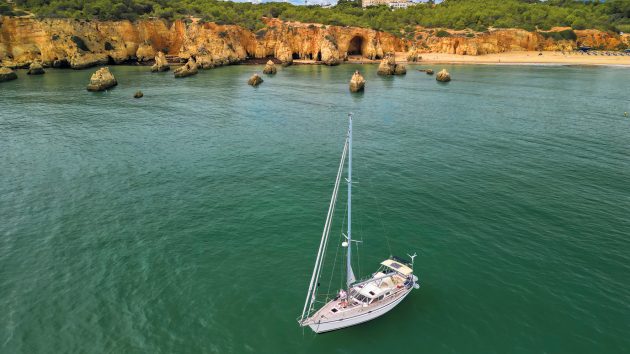
All the usual considerations for photography apply. Get creative with composition, and don’t forget where the sun is.
How to fly a drone from a boat – top tips
- Develop flying skills from the safety of land – stick control should be second nature before attempting to fly over water.
- Take time to identify the least-risky locations on board to launch and recover a drone.
- Brief any assistants on the drone recovery process before launching the aircraft.
- Always maintain situational awareness. Beware of moving obstacles or changes in the weather.
- Train yourself to instinctively know how to actively change aircraft and camera settings within the remote controller menus.
- ‘Think like a drone’ when trying to recover to a moving boat – the aircraft software tells itself to only land on a ‘static’ part of the earth.
- Be safe. Operate from a secure place on the boat, keep the aircraft well clear of obstacles. Automatic flight modes may need switching off.
- Wear gloves to protect your hands when catching the drone.
- Set the drone to downlink and save video or photographs to the remote-control unit, then all will not be lost if the aircraft crashes and sinks.
- If available, invest in a manufacturer’s drone replacement programme.
- Obtain any mandated certification, and fly according to local or national aviation regulations.
Enjoyed reading this?
A subscription to Yachting Monthly magazine costs around 40% less than the cover price .
Print and digital editions are available through Magazines Direct – where you can also find the latest deals .
YM is packed with information to help you get the most from your time on the water.
- Take your seamanship to the next level with tips, advice and skills from our experts
- Impartial in-depth reviews of the latest yachts and equipment
- Cruising guides to help you reach those dream destinations
Follow us on Facebook , Twitter and Instagram.

Best Drone for Boat Footage
So it seems like you are looking to buy the best drone for boat footage capturing. In that case, we have some of the best drones of 2022 which will be great for catching those wonderful moments when you are out on the sea. Each drone reviewed in this article has amazing reviews and has been tested.
We won’t just be reviewing normal drones that can fly; in fact, a few of the drones on our list were made for recording you playing water sports. But few of you wonder why you even need a drone on a boat or surfing. And that is the question we will be answering in the next section.
Table of Contents
Why should I get the best drone for over water?
Some people think just getting a few snapshots of themselves or their friends sailing or surfing is enough. But we say no; you should be able to get some amazing shots of you pulling off a stunt on your surfboards. You should want to get aerial videos of your boat and friends even. And to do so, you need a drone flying in the ocean.
A drone will help you capture photos and videos that look professional since they have amazing features. Also, some of these drones can fly fast, which is useful when sailing on a boat or water skiing. The drones can follow you from all angles with no issues. Drones are useful in helping you create great memories that will last so long as you don’t lose the hard drive.
Best drone for sailing
DJI Mavic Air 2

Specifications:
- Has hyper-lapse
- Comes with a 3-axis gimbal
You and I both know that when it comes to finding the best drones 2022 on the market one brand will always be above all the others. DJI has made it there to make the best drones for most situations, and they have kept at it.
The Mavic Air 2 fly more combo is one of the best choices if you want a drone flying over the water. With a 1/2-inch CMOS sensor, you can take impressive 48MP photos, and the 3-axis gimbal lets you record 4K/60fps video.
Additionally, the drone has other latest features such as multiple intelligent flight modes such as tracking thanks to its ActiveTrack 3.0.
- Complete combo package
- Multi-directional obstacle sensing
- 34 mins max flight time
- Signal connectivity issues
DJI Phantom 4 Pro

- 100 Mbps at 60 fps
- 5-dimensional sense
- 1-year warranty
The DJI Phantom 4 Pro is one of the best drones for shooting boat videos. It’s not cheap, but it’s well worth it. The drone’s sophisticated camera can record 4K video at 60 frames per second. This lovely drone can also capture images in high-dynamic-range (HDR) mode.
It has a flight time of up to 30 minutes, which is outstanding for a drone of this size. It has a 3-axis gimbal for stable footage even in windy conditions. The drone has obstacle avoidance technology, which is useful during photography in congested areas.
The DJI Phantom 4 Pro has the DJI Go app, which is incredibly user-friendly and gives all the information you need while flying. The drone comes with remote control with an integrated display.
- Enhanced obstacle avoidance
- High-quality camera
- Easy to fly
- No extra accessories
PowerEgg X Wizard

- Comes with an extra battery
For a truly amazing experience with a drone on the sea you need a fully waterproof drone. And we have found one of the best drones for sailing boats, the PowerEgg X Wizard. The Wizard has paddles on its bottom, allowing the drone to float on the water.
At the same time, the drone can keep the camera above the water while floating by keeping it elevated. The camera has advanced AI, allowing you to track objects or people much better. Additionally, it also has patented SyncVoice technology so you can pick up voices and sounds much more clearly.
- Can float on water
- handheld 3-axis
DJI Mavic 3 Cine Premium Combo

- 4/3 CMOS Hasselblad Camera
- Advanced Omnidirectional Obstacle Sensing
- Advanced RTH system
The DJI Mavic 3 Cine is the most complete drone yet, with a sleek new design. It will make you feel prosperous. Because of its movie-grade camera, stability, and security measures, the Mavic 3 Cine may be the best drone for boating.
The Mavic 3 significantly outperforms its predecessor, the Mavic 2 Pro. The new Cine model, on the other hand, with its 1-inch sensor and cinema-quality 4K footage, is genuinely unique. The Mavic 3 comes in two flavors: Cine and Fly More Combo. Although the Cine model is the more expensive of the two, it includes a few more features that make it desirable.
Cine now has a 10-bit D-LogM color profile, providing you more possibilities for coloring your film. As a result, you can confidently call it the greatest sailing drone. Among the various flying modes included with the Cine model are Activtrack 3.0, which allows you to track moving objects, and Quickshot, which allows you to create cinematic photos with the press of a button.
If you want the best image and video quality, Cine is the way to go. If you want to save money, go with the Fly More Combo. If you want the most comprehensive package, the Mavic 3 Cine is your drone.
- Better color profile
- Multiple flight modes
- Greater stability
- Really expensive
Swellpro Spry+ Plus Waterproof Drone

- Floats on water
- Corrosion-resistant
- 4K Video & 12MP Images
If you are looking for a drone that follows boats and can land on the water then the Spry+ from Swellpro is your best choice. This orange-colored drone has a slightly rubbery body that helps to keep the water away from it. Also, it sports a moisture-resistant battery compartment in the bottom that can be locked with a twist.
To use the drone you will need a Swellpros patented app with camera and drone settings for you to play with. But to fly the drone you will need another annoying app.
- Controller included
- Comes with a storage case
- Short battery life
What to look for in the best drone for water skiing
You will most want to buy a drone for its ability to capture great photos and videos. So you will want a drone with a nice camera. Therefore, before choosing the best drone for boat footage, you will first ensure it has a great camera.
The drones on your list all come with high-quality cameras that can shoot at 4K and has might megapixels. Overall, better drones have better cameras and more features for capturing videos and photos.
Transmission range
You will find it hard to get a good signal when you are out in the sea. So if you want the best drone for water sports you will need to ensure that you get one with a long transmission range. Many of the drones we reviewed have a transmission range greater than 5 km. This means you will be able to fly your drone far enough to get some really get photos and videos.
Also, the DJI Phantom 4 we reviewed has its patented OcuSync 2.0, allowing the drone to switch between two frequencies. This allows the drone to further than 10 km and still transmit crystal clear images.
A good quality drone needs to fly faster than you when you are on the water. Otherwise, you won’t be able to get those shots you want. Drones that follow boats using intelligent flight modes like ‘Follow Me’ must fly as fast as the boat.
The drones we reviewed above have an average flight speed of 60 to 90+ kmh but the cheaper ones only have a max speed of 30 kmh. So you should be able to figure out which one you want.
Wind resistance
The seas can be violent but it’s not just the water but the wind as well that can be harsh. So you want to pick the best waterproof drone that can withstand such hard winds. There are many levels of wind resistance from 0 to 12; the scale is called the Beaufort scale . A wind resistance of 0 means it can handle winds less than 1kmh and 12 means a severe hurricane is going on.
For the best drones of 2022 having a wind resistance of above 3 is preferred but we recommend getting one with a wind resistance of 5.
Drones are pricy; there are no two ways about it, sadly. However, there are some budget drones for boat footage that are good. Yet you can’t be stingy if you are trying to buy the best drone over water. For the most part, a high-quality drone will set you back by $1000 to $2500.
And that’s just the drone. If you want to buy a combo with essential accessories such as the DJI Mavic 3 Cine Premium Combo then the price will be way more. But you will need to spend so much since these drones won’t be just for flying around; they need to be able to fly in the ocean so they need to be built differently and better.
How to fly the best drone for sailing boats
Now that you know which is the best drone for boat footage and how to pick the one you need to know how to fly one. Flying a drone, especially over water isn’t as easy as people think, so we are here to give you some steps and tips.
- Check the weather condition: Make sure you aren’t flying your drone anywhere the weather might be an issue. Use wind apps to check the wind predictions and weather apps for weather conditions.
- Do a pre-flight check: Do this check to ensure your drone is in tip-top shape and ensure that the area you will be flying your drone is up to regulation.
- Take off: Start your drone in an open area with no obstructions. Also, keep the boat turned off so there are no unnecessary movements.
- Hover the drone before moving: Use the throttle to get airborne and use the right yaw to move slightly and stay airborne.
- Landing: Best course would be to use RTH (Return To Home) features.
Frequently Asked Questions(FAQs)
Are there any drones that can land on water.
Many drones are waterproof or water-resistant, meaning they can be used when you are on a boat or on water. However, few drones can land on water or are submergible. Out of those few, the one that caught our eyes the most was the Swellpro Spry Plus.
This is a waterproof drone that can float on water and submerge the camera without any issues. In fact, you will be able to transmit footage from the camera while underwater and there won’t be any issues.
Can drones follow a boat?
Most quality drones come with tracking features that allow them to follow a particular object or person from a distance. One of the best drones with tracking is the DJI drone which comes with updated versions of ActiveTrack. A drone that follows a boat by keeping it in its frame is a drone that has tracking features.
Should I catch a drone by hand?
You could catch a drone with your hand but we wouldn’t recommend it simply because you might get in an accident. The better the quality of the drone the faster its propellers could be which might lead to it cutting your hand when you catch it. But smaller drones and toy drones that can’t fly too fast are safe enough for you to catch them.
How useful are drones?
Drones are useful since they allow you to catch footage from a different perspective, up high, and in different manners. This, in turn, will allow you to do things you couldn’t have done before will get close-up videos of you surfing or get a selfie of your friends from high up.
Conclusion: Best Drone For Boat Footage
We have reviewed some of the best drones for boat footage so you should find one that matches your needs and wants. Flying a drone is fun but flying it over vast bodies of water is even more fun. Our top recommendation will have to be the DJI Mavic 3 Cine Premium Combo . Sure it’s expensive, but it has features and capabilities that make flying it really an unordinary experience.
Related posts:
Leave a comment cancel reply.
Save my name, email, and website in this browser for the next time I comment.
- Subscribe Now
- Digital Editions
Best drones for sailing: Take your boating videos to the next level
- Phil Sampson
We pick out 8 of the best drones for sailing, from budget-friendly options right the way through to advanced 4K models

It’s no understatement to say that drones have changed the moving image landscape in a more dramatic way than any other product since the video camera was invented more than 100 years ago.
Why? Because a drone removes the limitations of fixed, or largely fixed, viewpoints at a stroke by giving its operator the freedom of the skies from which to film. Well, almost…
The caveat here is that anyone wishing to pilot a drone must first register and take a theory test to gain a Flyer ID for themselves, and then apply for an Operator ID for their drone. It’s all set down in the Civil Aviation Authority’s Drone Code .
The Drone Code also covers topics such as safety, where you can and cannot fly, and privacy protection. As such, it is the bible for wannabe droners.
Once the registration and ID hurdles have been overcome, there are then the not inconsiderable questions of what are you looking to achieve with a drone, and what sort of drone do you need to achieve it?
We’ve all seen those awe-inspiring TV and movie images produced by drone-mounted cameras soaring over ridges, speeding through gullies, circling 360-degrees around moving vehicles and so on.
These will have been shot by skilled professionals using professional equipment and while it’s eminently possible for the rest of us to create spectacular drone footage, do be aware that any successful shoot will demand considerable planning and preparation beforehand and editing skills afterwards.
And if you’re looking to film from a boat, you may also want to ask questions about landing the drone safely back onboard after a flight…
In terms of equipment, suitable drones for sailing fall into a number of categories – which for our purposes we’ve summed up as budget, intermediate and advanced:
Budget drones for sailing

Drone X Pro
Typical of the mass of entry-level drones available on eBay is the Drone X Pro, a three-speed foldable drone which gives around 10 minutes of flying time for a 100 minute charge.
Its control distance is limited to approximately 150 metres, which although it doesn’t sound much is the equivalent to the length of one-and-a-half football pitches. The Drone X Pro shoots in 4K ultra high definition and boasts a range of features including 360-degree rolling, one key take-off and landing, and one key Auto Return.
Smartphones clip onto the drone’s handset to provide a straightforward controller with real-time screen viewing.
Price: £18.99
Buy it now on eBay
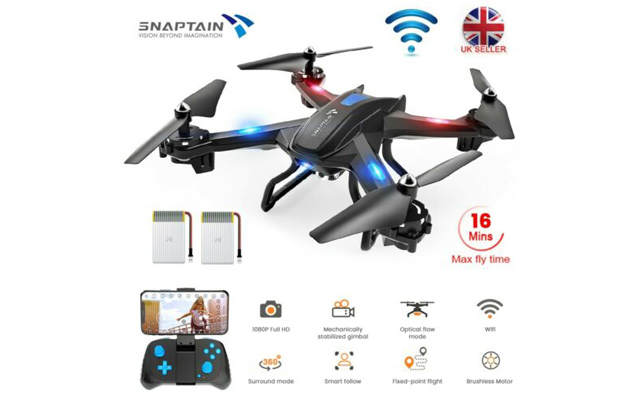
Snaptain GPS
We’re hoping this drone’s name is not an amalgamation of ‘snap’ and ‘captain’, and on the presumption it won’t make boaters lose their cool we’ve added it to our best drones for sailing list because the Snaptain GPS delivers a host of features at a budget price.
Included in the spec are a wide angle 1080P HD camera, a mechanically stabilised gimbal and voice control, which is affected by speaking command words (eg: forward, back) into your connected smartphone.
GPS enables functions such as Follow Me and Auto Return and there’s an Optical Flow mode to help keep the drone’s lateral and forward movement stable relative to what’s below it. As such, Optical Flow provides a useful stability tool should the GPS signal be lost.
Price: £35.99
Intermediate drones for sailing

Proflight X18
Moving up a level in sophistication we come to the Proflight X18. Providing up to 25 minutes of fly time, this drone has a 4K UHD camera, so the footage it delivers should be super-clear.
There are also controls for camera zoom and tilt, plus a gesture mode which allows the user to control the drone by way of hand and arm movements aimed at their smartphone app, which dutifully relays the commands to the drone.
The Proflight X18 has a range of 1,000 metres, although its WiFi is limited to around 600 metres. An extra bonus is that this drone is supplied with a spare set of propellors.
Price: £129.97
Buy it now on DronesDirect.co.uk
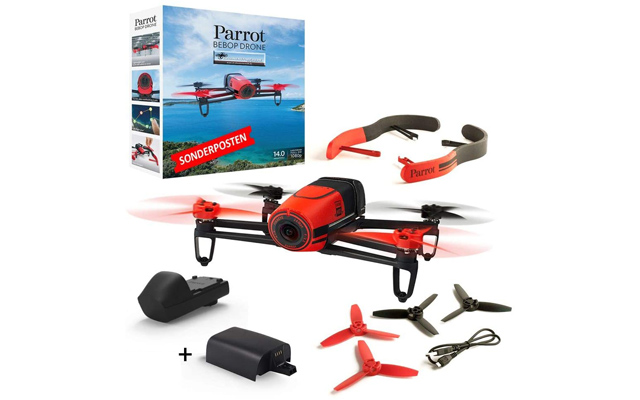
Parrot Bebop
Simplicity in motion sums up the funkily named Parrot Bebop as this drone features an intelligent flight system which automatically keeps the Parrot aloft and under the user’s control at all times by way of its associated app.
The integrated onboard camera takes 14 mega pixel 180-degree fish eye photos and shoots 1080p high definition video, which can be monitored from the ground by way of a live feed direct to the pilot’s phone.
The Parrot Bebop can manage up to 12 minutes on a single charge, so investing in a spare battery might well be an option to consider here.
Price: £263.99
Buy it now on Amazon (UK)

Holy Stone HS720E
One of the key advantages of the Holy Stone HS720E is that it’s supplied with two intelligent batteries. Each of these provides up to 23 minutes of flight time, meaning more time in the air and less charging.
The unit’s brushless motors are powerful and quiet in operation and have been designed to make flying smooth, stable and fast. Air optical flow and air pressure altitude controls are both included, meaning the drone can hover stably.
The integral GPS system locks onto the position of the drone before take-off, which in turn enables the auto-return to home function, thereby minimising the chances of the drone being lost.
Price: £254.99
Advanced drones for sailing

Yuneec Typhoon Q500
Raising the bar another notch is the Yuneec Typhoon Q500, our choice for a sub-£1,000 advanced drone for sailing. Inside the box is the aircraft itself, its 4K UHD 30 frames per second camera, Yuneec’s ST10+ FPV (First Person View) ground station, a Yuneec SteadyGrip, a Lithium Polymer battery and a range of accessories.
One of the many advantages of the Yuneec Typhoon Q500 is that its ST10+ ground station has an integrated 5.5″ LCD viewing screen, meaning that no other equipment (e.g. smartphone) is required for flight.
The system comes with a range of features and modes, including Follow Me and Watch Me (where the camera remains pointed at the pilot) and Dynamic Return Home, which automatically lands the drone within 4-8 metres of the ground station.
Price: £699.99

DJI Mavic 2
With an established range of gimbal-equipped cameras under its belt, DJI is an experienced player in the stabilised image field. The DJI Mavic 2 sees the company’s expertise applied to the world of drones, where it is undoubtedly making a fine job of matters.
The Mavic 2 Zoom featured here is classed as a professional level piece of kit and as such offers high resolution still images and video shot through its camera’s 24-48 mm optical zoom lens, with a further x2 magnification available digitally.
Fast, accurate focus is another stand out feature of this drone and its Dolly Zoom mode automatically adjusts focus when flying to provide what DJI describe as an intense warping visual effect.
Price: £1,059

DJI Air 2S Worry-Free Fly More Combo
As the name on the box infers, this DJI offering is an all-in-one product intended to dispel any fear of flying and freeing its owner to concentrate on making great movies – the bundle even includes a service plan covering various types of common drone damage.
Anyone still worried about the risks can comfort themselves with the fact that the DJI Air 2S also has AirSense, a flight location system which provides audio and visual alerts of other aircraft in the vicinity through the DJI Fly app.
Two video options of 4K and an even higher resolution of 5.4K come as part of the package, which also features a 5.5″ smart controller with its own 1080p HD display.
Other items supplied in the combo are three intelligent flight batteries, a charging hub, a set of neutral density filters to aid shooting in bright conditions, and a shoulder bag.
Price: £1,229
These 11 drone videos from Marco Island to Fort Myers Beach provide unique views
Just about anywhere you go in Southwest Florida, the views are spectacular. This includes high above the landscape.
In recent years, our Naples Daily News and the News-Press drone pilot, visual journalist Ricardo Rolon has flown our drown in a variety of locations. He has captured some unique views from Marco Island to Cape Coral. This includes what things looked like six months and one year after Hurricane Ian.
These 11 videos are some of the best in our archives and represent a wide-range of locations and news events.
No. 1 - A view above Marco Bay
No. 2 - cape coral yacht club beach, no. 3 - matlacha one year after hurricane ian, no. 4 - sanibel island one year after hurricane ian, no. 5 - fort myers beach one year after hurricane ian, no. 6 - delnor-wiggins state park, no. 7 - s.s. jolley bridge, marco island, no. 8 - tarpon club marina, naples, no. 9 - fort myers high school's new football field, no. 10 - toxic blue-green algae in a cape coral canal, no. 11 - submitted video of spotted eagle rays in north capitva.
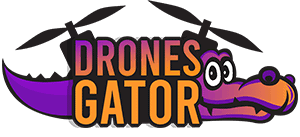
How to Land a Drone on a Boat (5 Steps to Prevent a Crash)
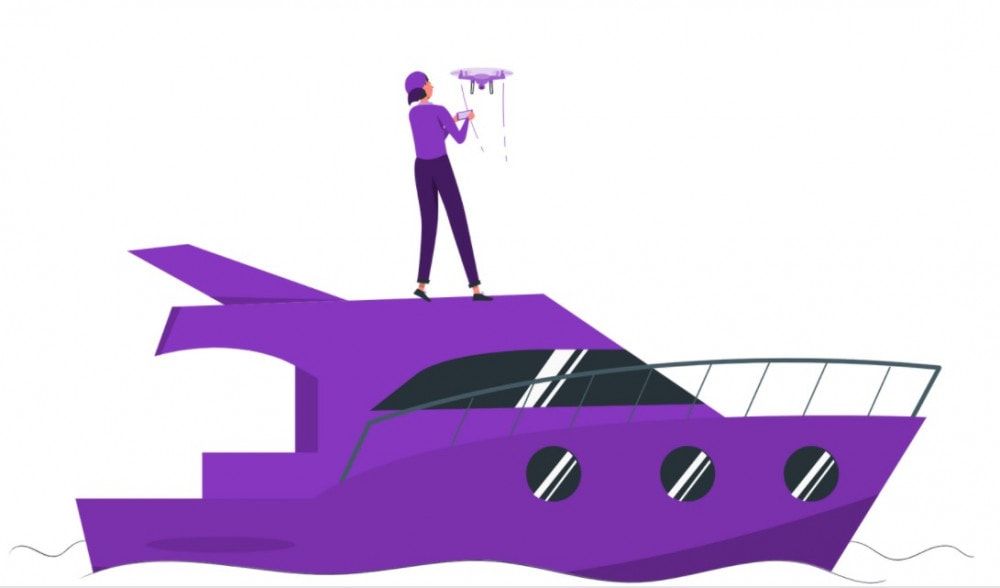
From experienced pilots to novices, flying a drone from a moving boat is challenging. Without proper consideration of the conditions and preparation, you could seriously damage your drone.
There are four crucial steps to land your drone on a boat safely:
- Disable Obstacle Avoidance System
- Set home point to dynamic
- Make your landing approach from the side to avoid obstacles
- Ensure you have enough landing space
You can also land the drone on your hand if it’s challenging to land it on a moving boat. You can learn more about flying your drone safely over the water here.
Landing Your Drone on a Boat - 5 Steps to Prevent a Crash
- Set Home Point to Dynamic
Always set your Home point to Dynamic when flying over water .
Your boat’s changing position means that the drone would return to takeoff point coordinates and be stranded in the water otherwise.
- Disable Obstacle Avoidance Systems
Most drones have proximity sensors that guide them through obstacles. While these are great at preventing collisions, these sensors can be overwhelmed by objects on the deck and cause the drone to behave erratically.
Therefore, it is best to disable them during landing.
- Land in an Open Area
Try to maneuver your drone into an open area while landing. Most ships have a relatively open stern, making them suitable for landing drones.
Keep all equipment safely stowed away to prevent accidents at the time of landing.
- Approach from the Side
When bringing your drone in for the landing, approach the boat from the side.
There are fewer obstacles to mess with the sensors that way, and this method allows you to keep an eye on the relative speeds of the drone and the boat.
It also lowers the chances of wind affecting your drone’s landing and aerodynamics.
The biggest mistake novices make is trying to rush the landing.
If conditions are unsuitable, you should never try to force a landing. Instead, keep your drone at a distance and circle back again for another try.
Can You Fly a Drone From a Boat?
Having concerns about landing your drone on a boat is pretty common. It’s best to know everything beforehand, especially when you’re considering taking your drone along on your next boating trip.
You can fly your drone from a boat and land on it safely as long as you have a large enough area for the drone. You also need to consider that the drone’s stabilization can get disoriented by the strong winds and movement of the boat.
While flying a drone from a boat is possible, we recommend honing your skills on the ground before you attempt to fly it from a boat.
How to Land a Drone Safely on a Boat
The only thing more complex than taking off your drone from a boat is landing a drone on one. After all, most drones need a solid surface to land on. So, unless your drone is waterproof , you’ll need more practice and skill to avoid damage.
Keeping the boat steady, lowering the speed of your drone, creating landing space, and disabling the obstacle avoidance settings will help in landing your drone safely on a boat. Having a landing plan also increases the chances of a safe landing.
Moreover, if your vessel does not have adequate space for the drone to land, grabbing your drone mid-air is a great alternative.
Using a quadcopter with handle-like landing gear like the Phantom Series can help a lot with safety, otherwise, try to at least wear some protective gloves.
You can also use a floating drone or get floating landing gear to land your drone on the water’s surface and bring it back to minimize the risk of a crash landing on the moving boat.
Is Landing Your Drone on a Yacht the Same?
Landing a drone on a yacht is no different from landing on any other boat if the yacht is large enough. However, ensure that you disable the obstacle-avoidance systems before landing since these can readjust the drone’s course and potentially make it crash in the water.
Fortunately enough, yachts come with superior stability and considerably more space for a hassle-free landing, as long as you’re not distracted by the girlfriends of your millionaire buddies.
A suggested practice is always to approach the yacht sideways to minimize collision and make the landing easier.
Is Landing Your Drone on a Sailing Boat Different?
Most common drones are perfectly capable of landing on small vessels and sailboats. All you have to do is make sure they stay away from sails enough to prevent a downdraft.
When landing a drone on a sailboat you have to make sure that it stays away from obstacles on deck, including the veil, and the obstacle avoidance setting is disabled for an easier landing.
With sailboats, you have to keep in mind the aerodynamics as well. Massive sails can impact a drone’s ability to circulate air. This can cause erratic behavior while landing.
How to Land a Drone on a Moving Boat?
Landing on a moving boat brings a unique set of challenges, but you can take care of those easily with proper preparation.
When landing a drone on a moving boat, make sure you have more than 50% battery for multiple landing attempts. Then, set your home point to dynamic and disable the obstacle avoidance systems to help the drone orient itself on a deck. Finally, approach the boat's side to decrease the chances of collisions and try to land on the stern as it has the most space.
Following all these steps would prevent damage to your drone and ensure that the experience is safe and fun.
Final Thoughts
Taking off and landing from boats can be a bit complex. However, with a little practice, you can get the hang of it pretty soon.
Don’t let the challenging nature of the task prevent you from having fun. Just keep the advice in mind and never panic.

Become an FAA-Certified Drone Pilot
- make money from your passion
- pass the Part 107 test Guarantee (money back
- 50,000 students and 3,000+ reviews
Use the code DRONESGATOR for $50 off


IMAGES
VIDEO
COMMENTS
4K video/12MP images. 40mph top speed. Front collision detection. 27-minute flight time. The DJI Mavic Pro is currently one of the best drones on the market. It is incredibly convenient to carry ...
Moreover, due to its wind resistance (level of 5), Mavic Air 2 can fly in windy conditions, making it an excellent drone for boating and sailing activities. Weighing only 20.01 oz (570 g) and having a level 5 wind resistance, DJI Maic Air 2 is probably the best drone for windy conditions.
This is perfect for use when sailing. This drone is incredibly strong and even comes with 8gb inbuilt storage. It is SD card friendly meaning you can fit up to 128gb of further storage onboard your drone. The DJI Mavic 2 Pro has a flight time of 31 minutes and can reach speeds of 44mph in good conditions. 2.
The best boating, kayaking, and sailing drones include the DJI Avata, DJI Mavic 3 Classic, SwellPro Splash Drone 4, PowerVision PowerEgg X, and the DJI Mini 3 Pro. These drones will suit you whether you want to create cinematic footage, shoot underwater, or even use a drone for fishing. Keep reading to learn more about these drones and some ...
Raising the bar another notch is the Yuneec Typhoon Q500, our choice for a sub-£1,000 advanced drone for sailing. Inside the box is the aircraft itself, its 4K UHD 30 frames per second camera ...
The overall best drone for sailing: DJI Mavic 3 Pro The DJI Mavic 3 Pro is the best drone for sailing photography, thanks to its three cameras, flight time, intelligent features, and wind resistance.. The Mavic 3 Pro has a three-axis gimbal with three cameras built-in: A custom Hasselblad wide-angle camera (24 mm) for capturing stunning landscapes
However, there are some downsides to consider before purchasing this drone. First, the Phantom 4 Pro is quite expensive, costing around $1,500. This makes it one of the most costly consumer drones on the market. Secondly, the Phantom 4 Pro is large and heavy, making it difficult to transport and store.
DJI Mavic 2 Zoom Drone, £1,099. Shoot silky smooth high resolution imagery with this latest offering from drone expert DJI. The Mavic 2 has a 12-megapixel sensor and 4x zoom for capturing every detail and boasts a supreme speed of 72kph. Able to fly for up to 31 minutes at a time, the Mavic 2 is has also been designed as a quieter and more ...
Intuitive Controls: The TOP 6 Best Drones For Sailing: #1 The DJI Phantom 4 Pro - Best all-round drone for sailing. Pros: Cons: #2 The Yuneec Typhoon - Best for videography. Pros: Cons: #3 The DJI Mavic Pro 2 - Best high quality.
Andy uses the DJI Phantom 4 Pro, which he believes is the best drone for flying from a boat because of the legs it has on its underside, which provide the perfect handles for catching the drone ...
5 best drones for filming your yacht. Over the past few years, drones have really moved forward, and now everyone can try their hand at piloting a device. Mini drones - This is a great first training session, during which you can experience a lot of driving pleasure.
Step-by-step on how to buy a drone for boating use and learn to safely launch and recover a drone from your boat [with VIDEO] There is no doubt that small unmanned aircraft systems (sUAS or drones) are becoming nearly as common place as iPads and smartphones. The features and capabilities of these machines are astounding and not the least of which is the quality of the available on-board cameras.
Film Your Boat in a New Perspective. SplashDrone 4 can take high-resolution photos and smooth videos with a 4K camera stabilized by 3-axis gimbal. On top of that, there are several innovative flight features on the drone for cinematic sailing footage in all kinds of boating situations.
Filming with a drone when sailing. The biggest challenge when filming with a drone is to get good quality, detailed shots without crashing into anything on the boat. Professional videographers recommend filming from a height above the highest mast of the floating boat, about 10 to 20 metres up. If you'd like to get some really action-packed ...
Geneinno recently launched a drone with a robotic arm to assist in the underwater rescue. If you don't feel like donning a wetsuit and jumping in the water to try and retrieve your valuables, use the drone. 3. Underwater Filming. Filming the big blue has relieved fascinating tales and opened up a whole new world.
Gimbal dampeners create steady shots. It includes a remote, but you can also use hand gestures to launch and control this drone in SmartCapture mode. With flight speeds up to 42.5 mph, it offers 21 minutes of maximum flying time on a single charge. $799; store.dji.com. Ever wondered about the possibilities of a drone for use aboard your boat.
A wide-open grassy space with no other people, trees or structures is ideal. Concrete and steel structures (e.g., buildings) in particular wreak havoc on the compass of a drone. When going through the drone's initial setup, "swinging" the compass—just like on a sailboat's autopilot—is one of the first required steps.
Additionally, drones can monitor the condition of the boat and its surroundings, providing valuable insights on potential maintenance issues and security concerns. With the ability to capture stunning aerial footage and images, drones also enhance the boating experience by creating lasting memories and sharing the beauty of the water with ...
How to fly a drone from a boat - top tips. Develop flying skills from the safety of land - stick control should be second nature before attempting to fly over water. Take time to identify the least-risky locations on board to launch and recover a drone. Brief any assistants on the drone recovery process before launching the aircraft.
Landing on a moving boat is not easy. If you want to fly from a moving boat, have a very good helmsman or autopilot who can maintain a steady course. Ideally you can focus on flying and someone else catches the drone. We have a DJI Mini 2, primarily because it can be flown in many jurisdictions without a lot of hassle.
Because of its movie-grade camera, stability, and security measures, the Mavic 3 Cine may be the best drone for boating. The Mavic 3 significantly outperforms its predecessor, the Mavic 2 Pro. The new Cine model, on the other hand, with its 1-inch sensor and cinema-quality 4K footage, is genuinely unique.
Yuneec Typhoon Q500. Raising the bar another notch is the Yuneec Typhoon Q500, our choice for a sub-£1,000 advanced drone for sailing. Inside the box is the aircraft itself, its 4K UHD 30 frames per second camera, Yuneec's ST10+ FPV (First Person View) ground station, a Yuneec SteadyGrip, a Lithium Polymer battery and a range of accessories.
In recent years, our Naples Daily News and the News-Press drone pilot, visual journalist Ricardo Rolon has flown our drown in a variety of locations. He has captured some unique views from Marco ...
Landing Your Drone on a Boat - 5 Steps to Prevent a Crash. Set Home Point to Dynamic. Always set your Home point to Dynamic when flying over water . Your boat's changing position means that the drone would return to takeoff point coordinates and be stranded in the water otherwise. Disable Obstacle Avoidance Systems.
In a two-month seminar for Taiwan's navy, facing imminent Chinese invasion, Ukraine's 18-foot, explosives-laden drone boats have wreaked havoc on the Russia's Black Sea Fleet, ramming and ...